
- Salkantay Trek
- Inca Jungle Trek
- Huchuy Qosqo Trek
- Ausangate Trek
- Vilcabamba Trek
- Choquequirao Trek
- Huayna Picchu
- Altitude Sickness
- Packing List
- Humantay Lake
- Lake Titicaca
- Nazca Lines
- Rainbow Mountain
- Get A Trek Quote

Lares Trek to Machu Picchu – Complete Route Guide
The Lares trek is one of many routes leading to Machu Picchu .
This trek is particularly rich in cultural experiences. I've spent quite a bit of time living in Cusco and the Sacred Valley, and highly recommend the Lares trek to those looking to immerse themselves in the local culture.
In this article, I have provided all the information you need for an amazing Lares trek. This includes a detailed overview of routes and itinerary options (yes, there are more than one Lares route).
You will also find sections on acclimatisation, costs, and guidance on what to pack and when to book your trek. I haven’t left anything out!
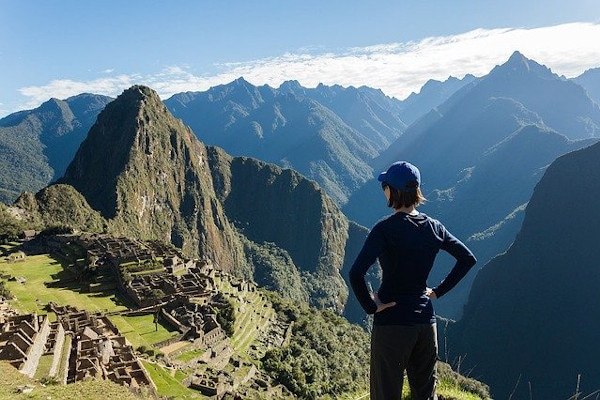
Get a Lares trek quote
Start planning your Machu Picchu hiking holiday.
Lares Trek to Machu Picchu - The Ultimate Cultural Trek
Lares trail - an overview.
The Lares trek is an off-the-beaten-path alternative to the Inca Trail . It begins near the town of Lares, from which it gets its name. This small town is 40 miles (64.4 kilometres) north of Cusco and 35 miles (56.3 kilometres) southeast of Machu Picchu. Lares is situated at an impressive altitude of 3,200m / 10,498 ft.
The trek itself lies in the Lares Valley. This is east of the Urubamba Mountain range and traverses part of the Sacred Valley.
You may also like:
- Interesting facts about Machu Picchu
- Things to do in the Sacred Valley .
In terms of route itinerary, there are in fact a number of variations on the Lares trek with most trails ending at Ollantaytambo .
From here, trekkers can catch a train to Aguas Calientes to visit Machu Picchu or return to Cusco. I will discuss each Lares trek route variation in more detail in this article.
To give you a better idea of the Lares trek and its various checkpoints, check out our handy route map below.
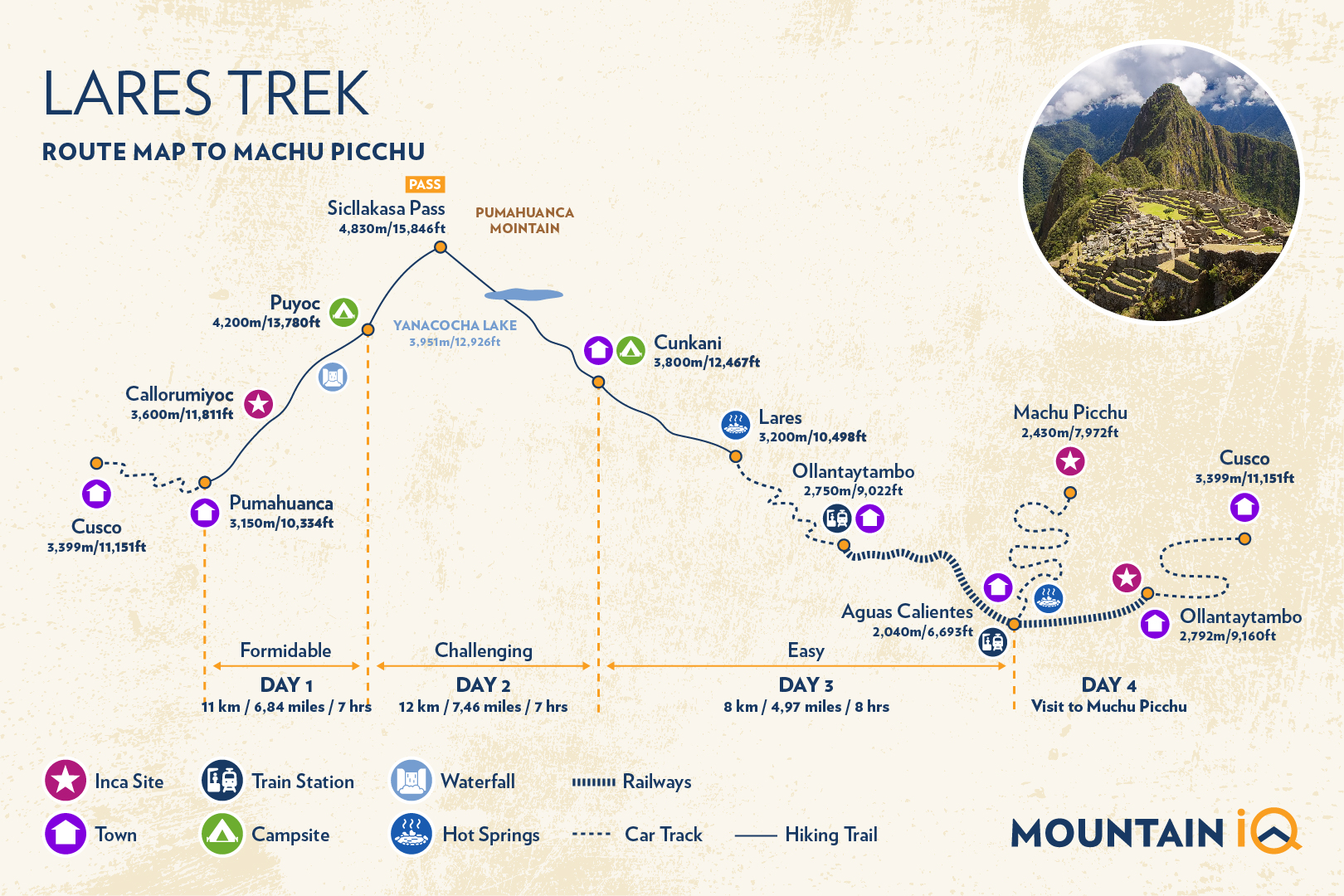
Is The Lares Trek Difficult?
There are different versions of the Lares trek, each one presenting its own challenges. You do need to have some fitness to be able to trek the high passes on these trails.
Depending on your preferences and overall levels of fitness, there are five different Lares routes with varying checkpoints which you can choose from:
- Route 1: Lares to Patacancha (aka 'Weavers Way')
- Route 2: Quishuarani to Patacancha
Route 3: Quishuarani to Yanahuara
Route 4: huaran to yanahuara, route 5: huaran to lares.
These Lares Trek routes are actually shorter than other multi-day hikes near Cusco. Lares to Patacancha (33 kilometres / 20.5 miles) is spread over 3 days. This is generally considered a ‘moderate trek'. Routes 2 and 5 are also considered moderate in difficulty.
On the other hand, Routes 3 and 4 are longer and more rarely taken. Route 4 is particularly long and rated as strenuous. These are more enjoyable though if you are relatively fit and hike often.
You may also like :
- Lares trek vs the Inca trail
- Inca trail quarry trek vs Inca trail
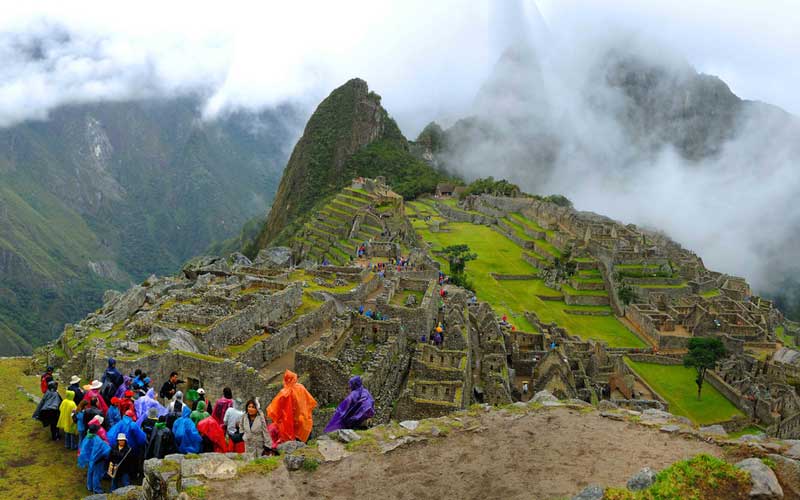
Does The Lares Trek Go To Machu Picchu?
The trek can be completed as a standalone 2-3 day trail. It can also be incorporated with a visit to Machu Picchu , thereby extending the tour by 1 or 2 days.
The latter option is fast becoming a popular itinerary for trekkers. This is due to permit limits on the Classic Inca Trail to Machu Picchu .
Permits are not required for the Lares trek. This means that you can arrive in Cusco and, depending on the season, be on the trail within a day or two.
However, you will still need to book your Machu Picchu and train tickets to Aguas Calientes as early as possible.
See more in our guide on the best Machu Picchu hotels in Aguas Calientes .
Looking for a day tour? Here are my 5 favourite day tours around Cusco:
- Rainbow Mountain day trip (with meals)
- Moray and Salt Mines Quad Bike Tour
- Sacred Valley day tour
- Humantay Lake day tour
- Machu Picchu and Huayna Picchu entrance tickets
See more Cusco day trips .
Why Choose the Lares Trek?
There are several factors that make this trek a great alternative to the 4-day Inca Trail .
Firstly, and most importantly, for some, the Lares Trail is a lot quieter than the Inca Trail. You see fewer hikers along the Lares, although this trail gets more popular by the year.
Secondly, the route is arguably easier than the Inca Trail. This is mostly because you won't have to deal with as many steps.
The Lares trek provides a true Andean cultural experience. The Lares Valley is home to traditional Andean communities, little of which has changed in the last 500 years.
You will see local weavers and farmers in colourful traditional clothing. Depending on your tour, you might get a chance to watch or partake in some weaving activities.
The area is famous for its homemade textiles. If you want to bring an authentic piece of Peru back home with you, then take extra soles. You can pick up a bargain here whilst making it a local weavers' day!
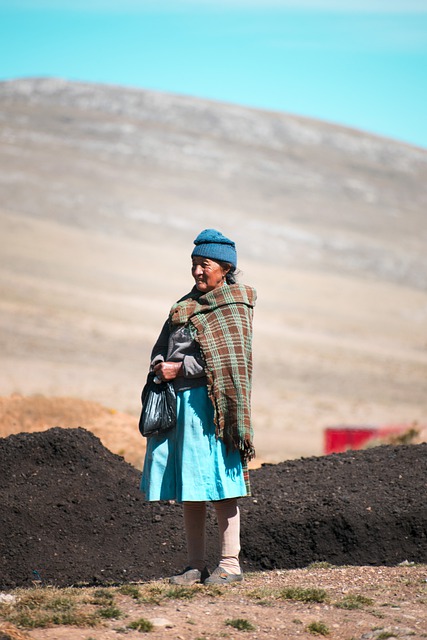
Peruvian farmer.
Lares Route Options and Maps
There are a number of Lares trek route itineraries to Machu Picchu, each offering a slightly different flavor of the region. I have set out 5 route variations below.
The first two are the most common Lares treks extending to Machu Picchu. All of the trails below do not require permits. They can be completed as standalone treks without visiting Machu Picchu.
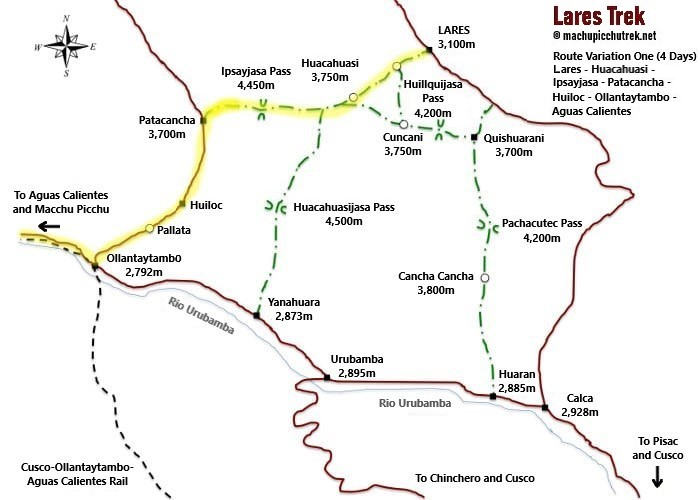
Route 1: Lares to Patacancha (aka “Weavers Way)
This is one of the most popular Lares trek variations to Machu Picchu. This is mainly because it is the shortest (~33 kilometres / 20.5 miles) and easiest. There is only one big pass - Ipsayjasa - situated at 4,450m (14,600 ft).
The route takes three days of trekking and one extra day to visit Machu Picchu. Trekkers are taken through two interesting weaving communities located at Huacahuasi (3,750m / 12,303 ft) and Patacancha (3,700m / 12,139ft).
Here is the route map above and itinerary below:
Day 1: Cusco – Calca – Lares Thermal Springs – Huacahuasi
Trekkers leave Cusco (3,399m / 11,151 ft) early on the first morning, typically around 06:00. You will drive for 2 hours to the small town of Calca (2,928m / 9,606 ft).
Some groups stop here for a break and potentially get breakfast. You will also be able to stock up on snacks and water in Calca.
From here, the drive continues north for another 3 hours to the town of Lares. You should have time for a quick dip in the thermal springs. Afterwards, you commence the 5–6-hour (~12km / 7.5miles) trek to the first campsite, Huacahuasi.
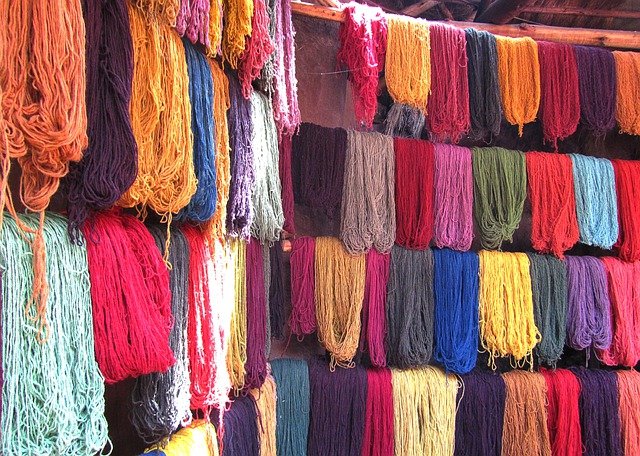
Day 2: Huacahuasi – Ipsaycocha Lake
Huacahuasi (Huacawasi) is a traditional weaving community. Trekkers usually spend the morning here watching weaving in action. The local villages are known for their beautiful multi-colored ponchos. These are much better quality than what you will find at Cusco markets.
The trek on the second day is a short, but a tough one. It begins with a climb up and over the Ipsayjasa Pass. This is the highest point on the Lares Trek. Reaching the top takes 2-3 hours. Coming down is much quicker (just over an hour) to the campsite at Ipsayjasa Lake.
Total trekking distance : ±9km / 5.6 miles with a walking time of 3-5 hours.
Day 3: Ipsaycocha Lake – Patacancha – Huilloc – Ollantaytambo – Aguas Calientes
The third day is all downhill! From Ipsaycocha Lake, the route descends for 2-3 hours. It is an easy walk to the Quechua weaving community in Patacancha.
The trail then turns south and continues downhill. You will reach another traditional Quechua village called Huilloc (sometimes written ‘Willoq’) situated at 3,962m / 13,000 ft. You will see many locals wearing traditional outfits in this quaint village.
The trail concludes in Huilloc. From here, most tour operators organize land transport to Ollantaytambo (2,792m / 9,160ft). You will then take a train to Aguas Calientes (2,040m / 6,693ft) – the town that sits below Machu Picchu and fondly nicknamed 'Machu Picchu Town'.
Please Note: Some companies have a cheaper option to go to Hidroelectrica by car. The drive is much longer, and you will then need to walk 10 kilometres / 6.2 miles alongside the railway line to Aguas Calientes.
Day 4: Aguas Calientes – Machu Picchu – Cusco
After a comfortable night in a hotel, you will wake early to get one of the first buses up to Machu Picchu.
Please Note: The first buses depart around 05:30, but in the peak season (May-September), queuing can start before 05:00.
Your trekking company would most likely organize a 2–3-hour tour around Machu Picchu.
If you still have the energy and aren’t afraid of heights, it is worth climbing Huayna Picchu . Inti Punku (the Sun Gate) situated at 2,730m / 8,956 ft is also good to see. Both provide great birds-eye views of Machu Picchu.
Please Note: You will need to book both these additional sights anywhere from 6-12 months in advance.
Your train from Aguas Calientes to Cusco will likely be mid-afternoon. It takes about 30 minutes to return by bus from Machu Picchu to Aguas Calientes. Factor in time spent queuing for a bus to give yourself enough time to catch your train back to your accommodation.
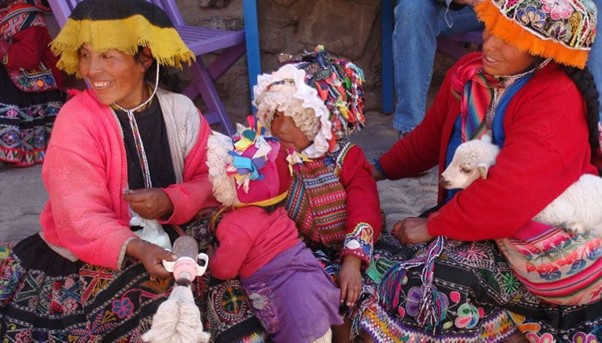
Locals wearing traditional dress.
Route 2: Quishuarani to Patacancha
This Lares trek route variation is the second most popular after ‘Weavers Way’. The route is a little longer than the first (±39 km / 24.2 mi), but of similar difficulty. Make peace with the fact that you will need to contend with two big passes (Ipsayjasa and Huillquijasa) on this route!
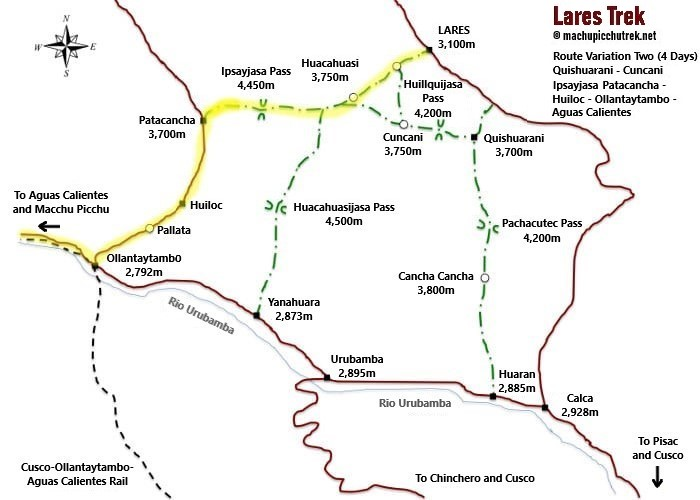
Day 1: Cusco – Calca – Quishuarani – Cuncani
You will leave early on day 1 and drive from Cusco to Calca. Most tours stop for breakfast in Calca. From here, you continue on to Quishuarani (3,700m / 12,139 ft), arriving around 11:00.
The trek starts with a gradual ascent. The trail gets steeper as you approach the first pass, Huilquijasa (4,200m / 13,780 ft). Views of the valley and lakes below are great from this height.
It takes about 3-4 hours followed by another 2-3 hours descent to the first camp, Cuncani (3,750m / 12,303 ft).
Total trekking distance : ±12km / 7.5 miles with 5-7 hours of walking.
Day 2: Cuncani – Huacahuasi – Ipsaycocha Lake
Day 2 starts early and is the toughest on the route. From Cuncani, the route gradually descends into the Chancachaca Valley (3,600m / 11,181 ft). You will head down for about 2-3 hours before rising again to the town of Huacahuasi (sometimes spelled ‘Huacawasi’) at 3750m (12,303 ft).
This town is famous for its weavers. You will spend some time here eating lunch and watching the locals at work. The route continues up and over the Ipsayjasa Pass (4,450m / 14,600ft). After conquering Ipsayjasa, you will descend to camp at Ipsaycocha Lake.
Day 3 and Day 4 follow the same route as the Weavers Way (Route 1). See more info above.
Total trekking distance : ±15km / 9.3 miles with 6-9 hours of walking.
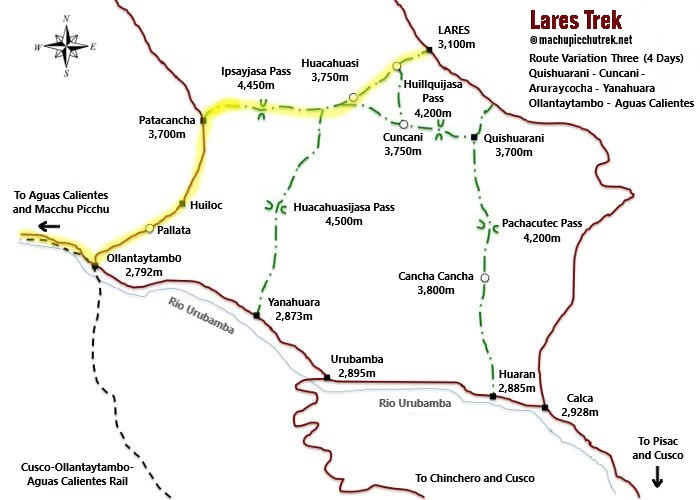
The Quishuarani to Yanahuara trek has the same first and last day as Route 2. This option is better suited for the more experienced trekkers as it is longer (±45km / 28mi) and more challenging. There are three passes over 4,200m (13,780ft) that need to be traversed.
The route is one of the least popular Lares trek variations which is partially due to its difficulty but mainly because of the endpoint. Yanahuara (2,873m / 9,426 ft) is a good bus journey away from Ollantaytambo, from which you can take a train to Aguas Calientes.
If you are a seasoned hiker and have already visited Machu Picchu, Route 3 may be a good option.
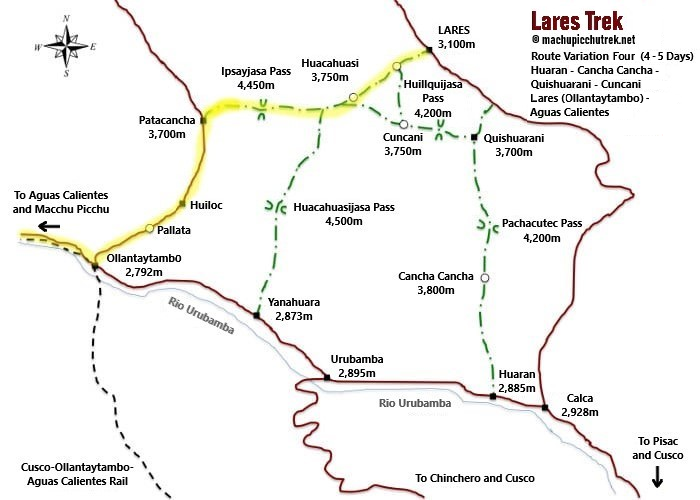
Route 4 is an unusual and long 6-day Lares trek, beginning from Huaran in the Sacred Valley. The hike goes up to Quishurani (3,700m / 12,139ft) via the Pachacutec Pass (4,200m / 13,780 ft). It then winds back around and down to Yanahuara (2,873m / 9,426ft). This is by far the least used route and is a tough challenge for even the most seasoned hiker.
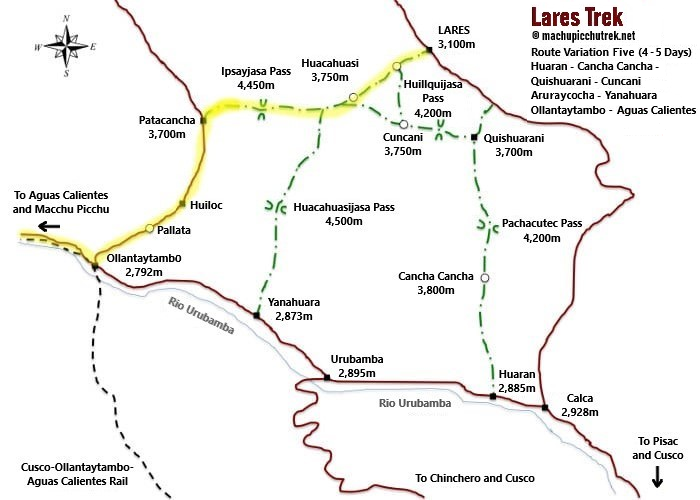
This route is generally done by trekkers who have already been to Machu Picchu. Route 5 is for people looking for an authentic Andean trekking experience, providing lots of opportunities to interact with locals.
Starting in the Sacred Valley at Huaran (2,885m / 9465ft), the route follows a 4–5-day itinerary. It goes up and over the Pachacutec Pass (4,200m / 13,780ft) to Quishuarani (3,700m / 12,139ft).
It then heads west over Huilquijasa Pass (4,200m / 13,780ft) to Cuncani (3,750m / 12,303ft). The trek continues north up to the small town of Vilcabamba and then onto Lares from there.
Trekkers can then take a bus back to Cusco. If you have yet to see Machu Picchu, you can take a bus to Ollantaytambo (2,792m / 9,160 ft) and train to Aguas Calientes (2,040m / 6,693 ft) to reach Machu Picchu (2,430m / 7,972 ft).
For more info on various checkpoint elevations during the five Lares trek routes, check out our handy altitude profile below.
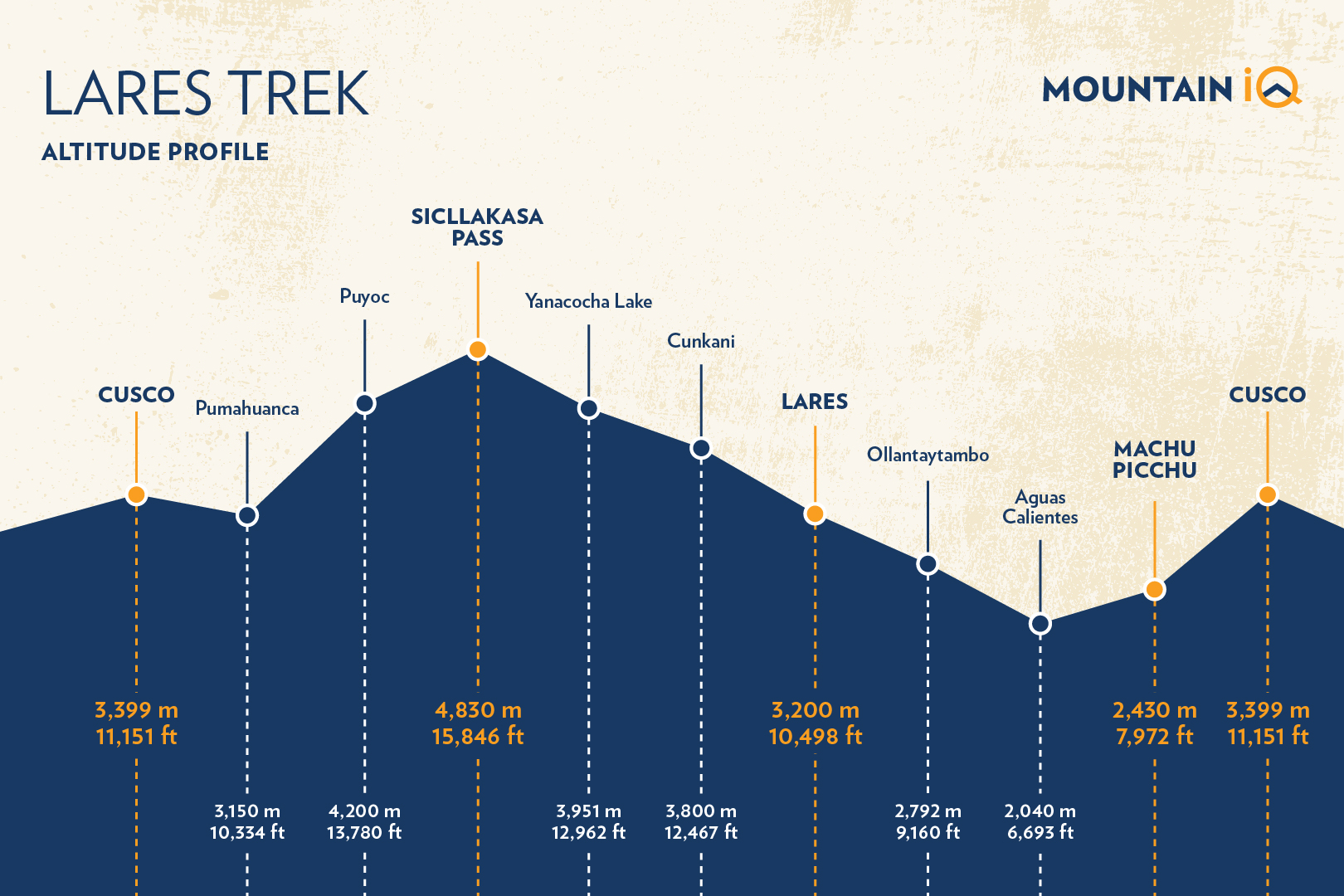
Best Time For A Lares Trek
The best time to do the Lares Trek is during the dry season (May-September). This is the busiest trekking time in the region, particularly on the Classic Inca Trail.
The Lares Trail is the third most popular trek to Machu Picchu. It ranks after the Classic Inca (both the 4-day and short Inca trail ) and Salkantay treks . At the height of the peak season, the trail can be quite busy though. That being said, there are so many variations of Lares Trail routes that it never feels overcrowded.
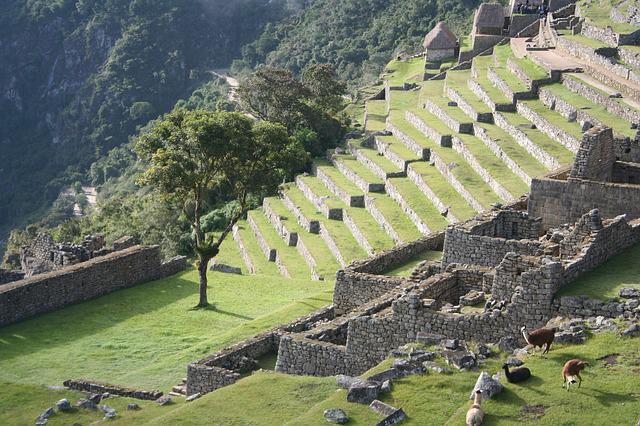
During the dry season’s shoulder months (April and October), the Lares Trails are particularly quiet and the weather during this time is often very pleasant.
November is touch-and-go in terms of trekking. The likelihood of encountering rain is relatively high.
I would suggest avoiding December through March as rain makes the Lares trails really unpleasant. Visibility is also low due to heavy morning and late afternoon fog, which can lead to injuries.
For the most part, temperatures throughout the year are moderate in this part of Peru. Tourists can expect temperatures in the high twenties (Celsius) during the day. Nights and early mornings range from cool to very cold, so it’s important to pack and wear layered clothing (see my suggested packing list below).
The Andes is characterized by distinct microclimates. Rain is possible throughout the year, so you should always take rain gear with you!
To see detailed charts on historical weather patterns in and around Machu Picchu, click here . Also see, best time to hike the Inca trail .
Can You Hike The Lares Trek Without A Guide?
It is possible to do the Lares Trek unguided. As discussed, there are different route options. You may want to choose one of the more common pathways because these trails are well-trodden and easier to follow.
It is also better to avoid trekking the Lares without a guide in winter. During this time, snow and rain can wipe away all traces of trails, which can be a navigational hazard.
The local farmers and herdsmen are friendly but do not speak English. It will be much easier to do this trek if you can speak basic Spanish.
Watch out for dogs along the way too. Rural dogs can be much more territorial than those you find around Peru’s cities. As tempting as it is, it's better not to approach them.
Please Note: The below prices include transport and tickets to Machu Picchu.
Lares Trek Costs
The cost of hiking the Lares Trail varies between companies. Generally, you can expect to pay the following:
Acclimatization and Altitude Sickness on the Lares Trek
Altitude is a challenge you will face on the Lares Trek. On some route variations, you will need to deal with three high altitude passes that are over 4,200 meters (13,780 feet). Depending on your route, the highest point is Sicllakasa Pass situated at 4,830m / 15,846 ft). You can find out more about acclimatization and altitude sickness here .
Where to stay? Here are 5 of my favourite accommodation options in Cusco:
- Sonesta Hotel (great 4 star hotel)
- Antigua Casona San Blas
- El Mariscal Cusco (very good value)
- Hotel Paradis (good 3 star hotel)
- Quechua Hostel Recoleta (cheap and cheerful)
See more Cusco accommodation options .
Lares Trek Packing List
The equipment packing list for a Lares Trek is essentially the same as an Inca Trail gear list . If you are trekking with a company, you will likely have a weight limit of 7kg (15.4lb). This includes 2 kilograms (4.4lb) for your sleeping bag.
Layered clothing is a must for the Lares Trek. Be sure to pack at least one pair of leggings and two long-sleeve tops for cold nights and mornings. Thermal wear is a big advantage for this trek.
You will also need to take waterproof clothing, irrelevant of the time of year. If you don’t have a rain jacket, you can buy a plastic poncho in Cusco before you set off.
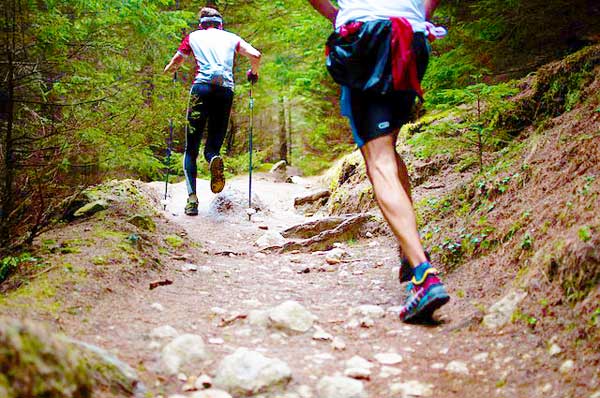
Do You Need to Train for The Lares Trek?
Once again, how much preparation you need depends on which Lares Trek you are doing. The shorter trails (routes 1, 2, and 5) only require a basic fitness level. Routes 3 and 4 are much longer. You will need to be hiking fit for these options.
No matter which routes you choose, some training will make the trek more enjoyable. It is a good idea to do some walking, running, or swimming 3-5 times a week in the months building up to your trek. This will help build your cardiovascular endurance.
We have written some good guides on getting fit for multi-day hikes. Those on getting ready for the trek to Machu Picchu and training for the Inca Trail are both applicable to the Lares Trek.
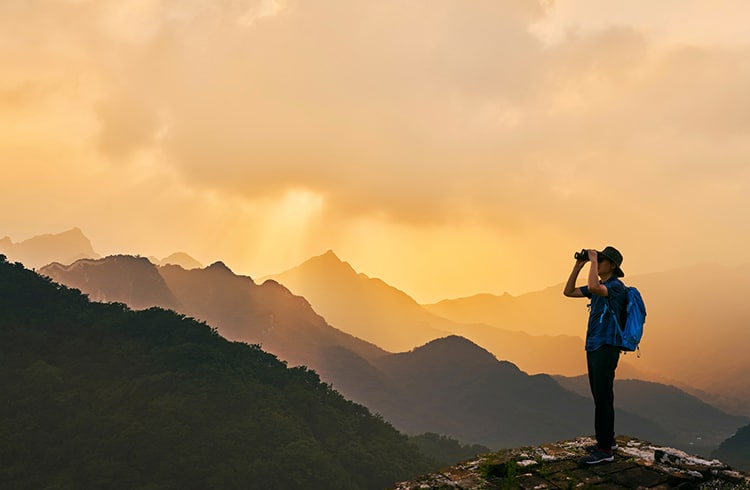
World Nomads has you covered so you can trek worry-free
Trekking Insurance for the Lares Trek
Insurance for your Lares trek to Machu Picchu is a must. Many operators will need you to have travel insurance for your trek.
The Lares Trek includes high passes (the Condor Pass is 4, 300m / 14,108ft). You will need to make sure your insurance covers you for high-altitude hiking. When it comes to travel insurance, it is always better to have it and not need it than not have it in an emergency.
I have reviewed a number of travel insurance providers. The most affordable and best by far is World Nomads .
I hope that this Lares trek article has proved helpful. If you still have any questions please leave a comment below. We’ll do our best to point you in the right direction.
Have you already trekked this route? If you have any nuggets of wisdom that you would like to add to this page, please also get in touch. You can reach us in the comment section below.
- Alternative treks to Machu Picchu
- Huchuy Qosqo trek to Machu Picchu
- Hiking from Choquequirao to Machu Picchu
- 7 Days of the Salkantay-Inca Trail Combo
- Hiking along the Ausangate trail
- Trekking to Santa Teresa
- Hiking up Rainbow Mountain
- Trekking to Humantay Lake
Tags: Lares Trek, Lares Trek Peru, Lares Trail, Lares Valley Trek, Lares Trek to Machu Picchu, Lares Trek or Inca Trail
References: ( 1 ) Wikipedia, ( 2 ) The Machu Picchu Guidebook, (3) Personal Experience, (4) Depth interviews with local guides
Alison Macallister
With a degree in Nature Conservation and experience working with wildlife including the Big 5, Alison works as a guide for a 5-star reserve. She enjoys sharing her passion for all things nature-related. She enjoys hiking, horseriding, 4x4 driving and kayaking.
Leave a Reply
Your email address will not be published. Required fields are marked
Name * * * *
Email * * * *
Dear Alison, an enormous thank you for all this fantastic information. I really appreciate this so much. Elles & Klaas (Netherlands and will be hiking eind of October '23)
Thanks Elles, will pass on to Alison!
Hello, I would like to do the Lares trek but is it possible to stay in homestays/guesthouses or lodges along the way? Thank you,
Get a quote from our recommended local trek operator in Peru

Most Recent: Reviews ordered by most recent publish date in descending order.
Detailed Reviews: Reviews ordered by recency and descriptiveness of user-identified themes such as waiting time, length of visit, general tips, and location information.
Also popular with travellers

Lares Trek Guide - All You Need to Know BEFORE You Go (2024)
- Lares Valley (Full Day) (From C$70.11)
- All Inclusive - 4 Days Lares Trek To Machupicchu - Private Experience!!! (From C$1,025.72)
- Lares Trek to Machu Picchu: 4-Day Tour (From C$822.96)
- 4 Day - Lares Trek to Machu Picchu - Group Service (From C$1,237.05)
- Lares Trek 4 days with Panoramic Train (From C$954.10)
- (15.94 km) Sacred Dreams Lodge
- (11.49 km) Hospedaje K'uchuwasi Backpacker
- (12.39 km) El Mono Sabio
- (7.65 km) Eco Lodge Cabanas
- (9.14 km) Hospedaje Paraiso
- Machu Picchu Tours
- Salkantay Trek
- Destinations
- Tailor-made
Lares Trek Peru Guide: Everything You Need to Know
If you’re planning an adventure in the Peruvian mountains and seeking a unique experience in touch with nature and local culture, the Lares Trek in Peru is an option you should definitely consider. In this comprehensive guide, we’ll provide you with everything you need to know about the Lares Trek, from its location to the altitude, as well as the incredible places you’ll visit on this unforgettable journey.
Welcome to the land of the Incas and natural wonders! The Lares Trek is one of the most exciting and rewarding hiking routes in Peru. Unlike the famous Inca Trail , the Lares Trek offers a more authentic and less crowded experience in the Peruvian Andes.
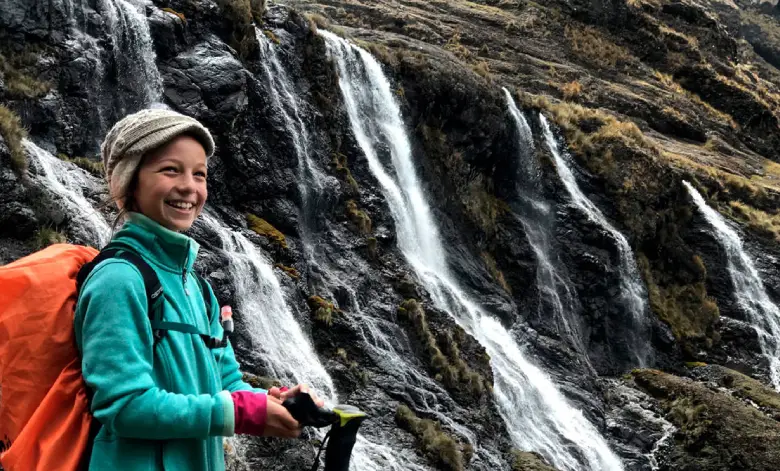
Table of Contents
Where Is the Lares Trek Located in Peru?
The Lares Trek is located in the Cusco region in southern Peru, in the province of Calca . This route will take you through stunning landscapes, picturesque Andean villages, and immerse you in the rich Quechua culture. The Lares Trek is an excellent choice if you want to avoid crowds and explore high-mountain landscapes at their best.
Altitude of the Lares Trek
One of the first questions any traveler asks is, “At what altitude will I be during the Lares Trek?” It’s important to note that this adventure will take you to significant altitudes, making acclimatization essential. During the hike, you’ll be at altitudes ranging from 2,800 to 4,600 meters above sea level. Therefore, it’s crucial to take the necessary time to acclimatize properly before starting the trek.
Places You’ll Visit on the Lares Trek
One of the most exciting things about the Lares Trek is the opportunity to explore remote and picturesque places in the Peruvian Andes. Here’s a list of some of the highlights you’ll visit during your journey:
1. Lares Valley
The journey begins in the Lares Valley, a beautiful and peaceful corner of the Peruvian Andes. Here, you can interact with local communities and get a close look at their way of life. You’ll also have the opportunity to soak in the relaxing Lares hot springs to recharge before continuing your hike.
2. Quechua Communities
Throughout your journey, you’ll pass through various Quechua communities, such as Huacahuasi, Patacancha, Cuncani, and Mas. These communities will welcome you with open arms and offer you an authentic glimpse into Andean culture. You can interact with the locals, learn about their traditions, and taste delicious local foods.
3. Lakes and the 7 Waterfalls
Nature will amaze you with the beautiful Laguna de Yanacocha, Aruray Cocha, and Yurak Cocha, surrounded by snow-capped peaks. This crystal-clear lake is a perfect place for stunning photos and enjoying the peace and serenity of the surroundings. You’ll also be able to see the beautiful 7 waterfalls or canchis paccha.
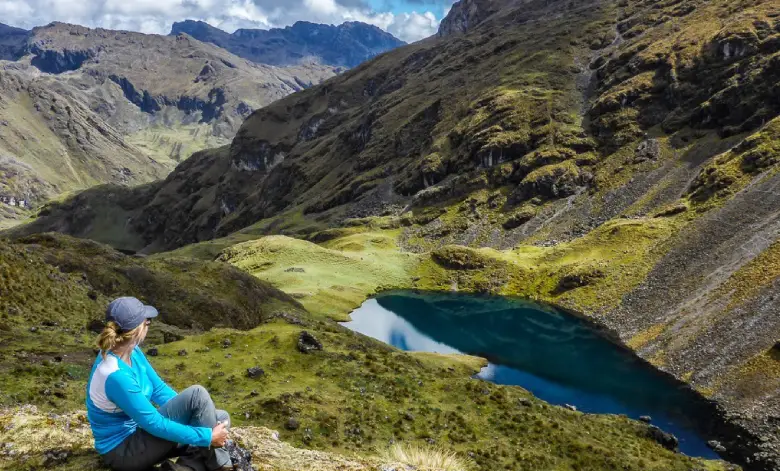
4. Ollantaytambo Village
The Lares Trek culminates in the picturesque village of Ollantaytambo. This place has a unique charm, with cobblestone streets and impressive Inca ruins. From here, you can take a train to Machu Picchu and continue exploring the wonders of the region.
What Is the Best Time to Do the Lares Trek?
The best time to do the Lares Trek in Peru is during the dry season, which spans from May to September. During this period, the weather in the Cusco region, where the Lares Trek is located, is more stable, with a significantly lower chance of rain. This means you’ll have more sunny days to enjoy the hike and panoramic views without weather interruptions.
Additionally, daytime temperatures are usually more pleasant during the dry season, making hiking and exploring the area easier. However, keep in mind that nights can be cold due to the altitude, so make sure to pack appropriate cold-weather clothing.
Why Choose the Lares Trek to Machu Picchu?
The Lares Valley Trek to Machu Picchu is an ideal choice for those seeking an authentic experience, interaction with local culture, stunning natural landscapes, and the opportunity to explore one of Peru’s most iconic destinations: Machu Picchu. This route combines the best of both worlds and provides you with an unforgettable experience on your trip to Peru.
Choosing the Lares Trek offers a unique and enriching experience for several reasons:
- Less crowded than other routes: Unlike the classic Inca Trail, the Lares Trek is usually less crowded, allowing you to enjoy a quieter and more authentic experience in nature.
- Interaction with local communities: During the Lares Trek, you’ll have the opportunity to interact with indigenous communities living in the region. This will allow you to learn about their culture, traditions, and way of life, providing you with a unique cultural experience.
- Stunning landscapes: The Lares route will take you through breathtaking landscapes, including mountains, valleys, lakes, and hot springs. You’ll have the opportunity to appreciate the natural beauty of the Peruvian Andes in all its splendor.
- Relaxing hot springs: Along the way, you can enjoy the Lares hot springs, known for their therapeutic and relaxing properties. It’s a perfect way to rest and rejuvenate after days of hiking.
- Access to Machu Picchu: The Lares Trek also takes you to the famous Machu Picchu citadel. You’ll arrive at this iconic archaeological site and explore it in detail, making this route an excellent choice if you want to combine the hike with a visit to Machu Picchu.
- Support for local communities: By choosing the Lares Trek, you’re contributing to the sustainable development of local communities. Tourism in this region helps generate income and opportunities for the people who call this area home.
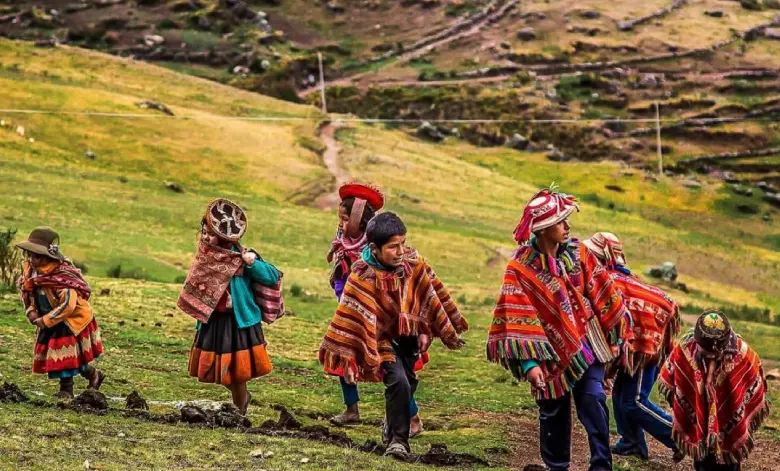
Tips for Enjoying the Lares Trek to the Fullest
To fully enjoy your hike, follow these tips:
- Physical preparation : Before embarking on this adventure, make sure you’re in good physical shape. Hiking at high altitudes can be demanding, so it’s important to be prepared.
- Acclimatization : Dedicate at least a couple of days to acclimatize in Cusco before starting the trek. This will help you avoid altitude sickness and fully enjoy the hike.
- Pack light : Carry only the essentials in your backpack. Less weight will make your hike more comfortable.
- Clothing : Dress in layers and be prepared for weather changes. The weather can be unpredictable in the mountains.
- Respect for culture : Always show respect for local communities and their culture. Learn some basic phrases in Quechua and be kind to the residents.
- Water and food : Carry enough water and energy snacks to stay hydrated and energized during the hike.
The Lares Trek in Peru is an experience that will connect you with the natural and cultural beauty of the Andes. As you venture into spectacular landscapes and meet the people who call these lands home, you’ll have an adventure to remember for a lifetime. Get ready for an exciting exploration of the land of the Incas!
Make your dreams of exploring Inca Culture come true with our Peruvian travel agency that stands out for offering quality services and personalized attention at every stage of your journey. Our Peru vacation packages are meticulously designed to cater to all your travel preferences, whether you’re in search of an exciting adventure, a relaxing break, or unforgettable vacations. We provide flexible options so you can enjoy the experience that best suits your desires.
Related Topics
- Things to do in Huaraz, the best attractions to see and visit
- The Best Tourist attractions in Machu Picchu – Discover Them!
- Choquequirao How to Get There: The Hidden Jewel of the Andes
- 5 Tips for Doing the Salkantay Trek and Enjoying It Better
Check out our treks

Choquequirao Hike 4 days
Cusco Moderate to high difficulty Total distance 62 Km Maximum altitude 3.050 m Up to 12 people Daily departures
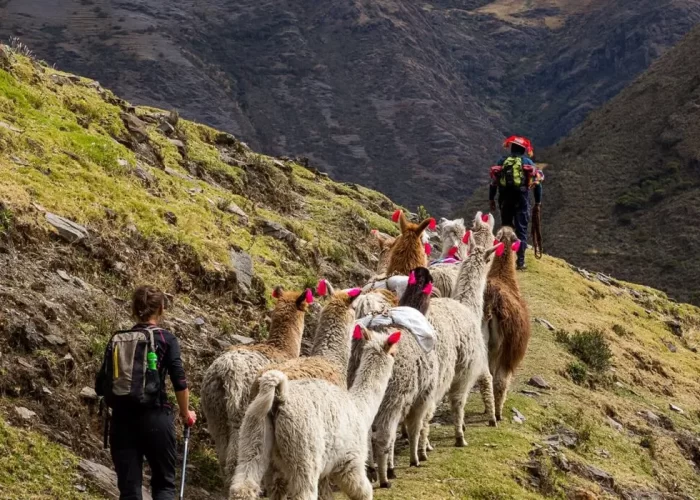
Lares Valley Trek to Machu Picchu 4 days
Cusco Moderate to high difficulty Total distance 33 Km Maximum altitude 4.700 m Up to 12 people Daily departures
Recent Posts

- Madre de Dios 0
Most Popular Packages
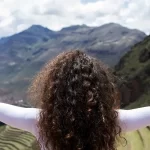
Colonial Lima and Sacred land of the Incas 7 days
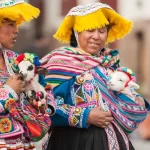
Spectacular Peru 10 days
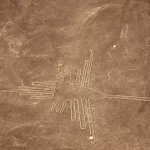
Origins of the Incas 10 days
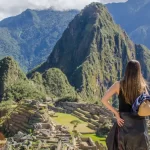
Classic Machu Picchu 5 days
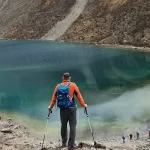
Machu Picchu Challenge 8 days
Subscribe to our newsletter.
Need Help? Chat with us

- Best Hikes In The World
- Appalachian Trail
- European Hikes
- Nepal Hikes
- Patagonia Hikes
- See All Hikes
- Mount Kenya
- Mount Kilimanjaro
- Mount Toubkal
- See All Mountains
- South Africa
- New Zealand
- Switzerland
- United Kingdom
- Packing Lists
Lares Trek – The Culture Hike To Machu Picchu
Hikes , Machu Picchu , Peru , South & Central America
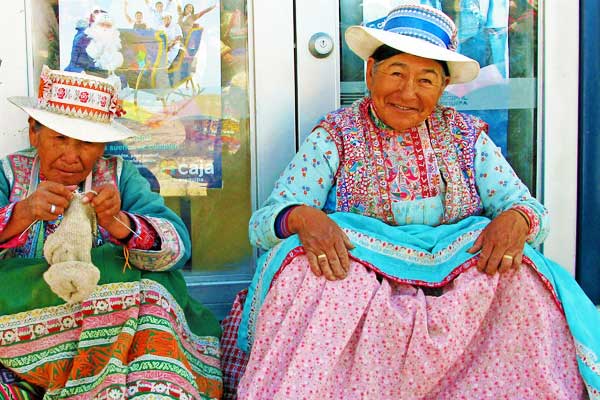
Are you planning a hike to Machu Picchu and want to try a more secluded option than the Classic Inca Trail ?
This guide will provide you with detailed information on the Lares trail, helping you decide which routes to take, how to adequately prepare and what you can expect on arrival.
Lares Trek To Machu Picchu Overview
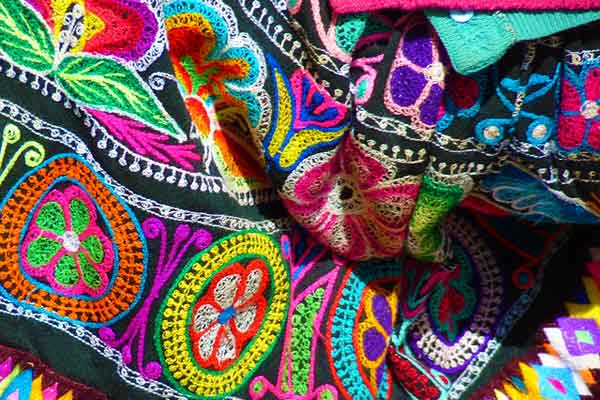
The Lares trail is a lesser-known alternative to the Classic Inca Trail in the Andes , starting near the town of Lares which is 40 miles north of Cusco. From here you will trek through the Lares Valley, which crosses part of the Sacred Valley.
You can have the option of simply hiking the 2 to 3-day trail, or incorporating a visit to Machu Picchu by extending your tour by a day or two.
Notably, you will not need a permit to trek the Lares trail, which means that you can arrive in Cusco and be on the trail within a day or two of your arrival.
However, it is still necessary for you to book train tickets to Aguas Calientes, accommodation in Lares and entrance tickets to Machu Picchu in advance to avoid disappointment. This will be done by your tour operator, but do check your itinerary to ensure that everything has been booked.
The Lares Trek itself can follow a number of different routes, all of which will be outlined below. Generally, the routes end in Ollantaytambo from where trekkers can catch a train to Aguas Calientes to visit Machu Picchu, or simply return to Cusco.
Some of the considerations that influence hikers to choose the Lares Trail over the Classic Inca Trail are the fact that it’s relatively quiet and more physically manageable than the alternative.
The route also meanders through regions home to 500-year-old traditional Andean communities and you are likely to encounter local farmers or weavers in their iconic, colourful garb.
You may even be lucky enough to take part in some of the weaving activity. The handmade textiles are gorgeous and popular with tourists, so see if you can save a few Soles to bring back an authentic souvenir.
Route Options And Typical Itineraries
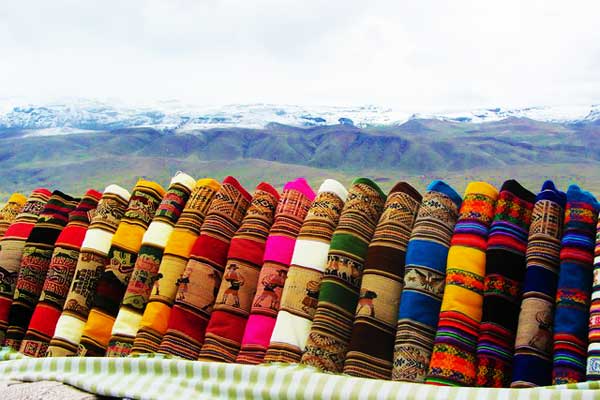
There are a number of routes that will provide a variety of experiences of the area. Below we will summarize 5 of the most popular options, none of which require a permit.
Route 1: Lares to Patacacha (aka Weaver’s Way)
The shortest, easiest and most popular of the alternative trails to Machu Picchu , the pride of South America. The route requires 3 days to hike, plus an extra day to visit Machu Picchu.
The shortest, easiest and most popular of the alternative trails to Machu Picchu. The route requires 3 days to hike, plus an extra day to visit Machu Picchu.
Day 1: Cusco to Huacahuasi via Calca and the Lares Thermal Springs
The 2-hour drive from Cusco (3400m) to Calca (2928m) generally leaves early in the morning where you can stop for breakfast. You then continue your drive to Lares for 3 more hours with the option of stopping for a dip in the thermal springs. From Lares you hike for 5-6 hours to your first campsite in Huacahuasi (3750m).
Day 2: Huacahuasi to Ipsaycocha Lake
The morning is generally spent in the Huacahuasi community watching the local weaving craft. The hike starts mid-morning by crossing the Ipsaycocha Pass (4450m), the highest point on the trek, and ends at the campsite at the Ipsaycocha Lake. The hike is short (3-5 hours) but relatively difficult.
Day 3: Ipsaycocha Lake to Aguas Calientes
The trek is all downhill and passes a number of beautiful traditional Quechua weaving communities, including the Patacancha (3700m) and the Huilloc (or Willoq). Most tour operators then organise transport to Aguas Calientes (2040m) via Ollantaytambo (2792m) from where you can easily access Machu Picchu.
Day 4: Aguas Calientes to Machu Picchu and back to Cusco
After sleeping in a hotel, you will catch an early bus to Machu Picchu where you will probably have a 2-3-hour tour around the Citadel. In the afternoon, you will return from Aguas Calientes to Cusco, so make sure you arrive at Aguas Calientes in time.
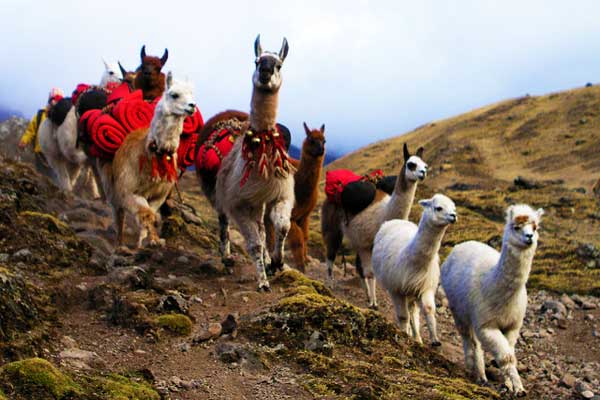
Photo by Margaret
Route 2: Quishuarani to Patacancha
This is the second most popular alternative to the Classic Inca Trail after Weaver’s Way, which it is a little bit longer.
This hike consists of two impressive passes.
Day 1: Cusco to Cancani
You will start an early drive from Cusco to Calca where you will stop for breakfast and then continue on to Quishuarani (3700m) where you will arrive at about 11:00. Here, your will start and you will trek up and down the Huilquijasa Pass (4200m) to Cuncani campsite (3750m). This takes about 5-7 hours.
Day 2: Cancani to Ipsaycocha Lake
This is the most challenging day of this route. You climb down to the Chancachaca Valley (3600m), and up to the town of Huacahuasi (3750m) (where the local residents are famous for their traditional weaving).
After a lunch of appreciating the local craft, the route continues over the Ipsayjasa Pass to the Ipsaycocha Lake campsite. Day 2 requires 6 – 9 hours of trekking.
Days 3 and 4 are the same as the Weaver’s Way above.
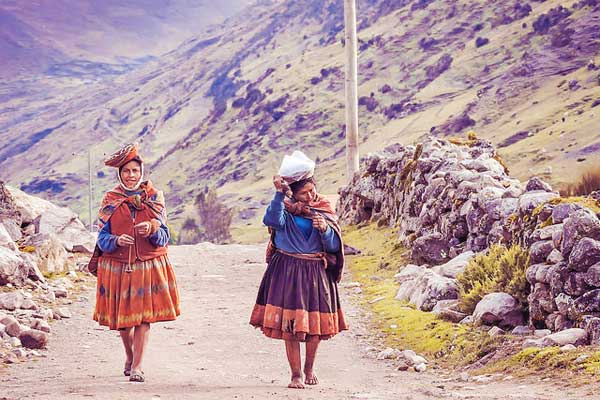
Photo by Gemma Armit
Route 3: Huaran to Yanahuara
This is the toughest and least popular Lares route.
It starts in Huaran in the Sacred Valley and follows the Pachacutec Pass (4,200m) to Quishurani (3,700m) and then down to Yanahuara (2,873m).
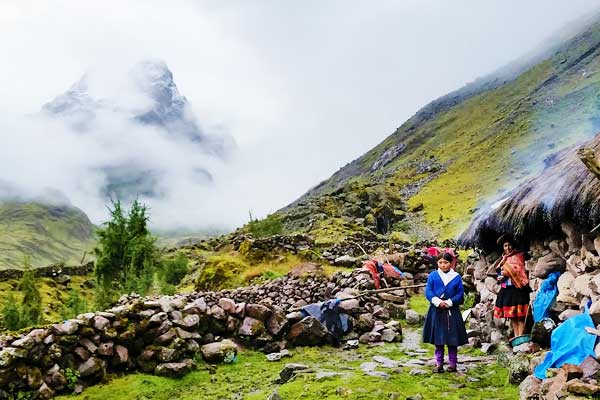
Photo by Mike
Route 4: Huaran to Lares
This route is worth considering if you have already visited Machu Picchu and you want the opportunity to meet and interact with locals.
The trail also starts from Huaran (2,885m) in the Sacred Valley and follows the Pachacutec Pass (4,200m) to Quishuarani (3,700m).
It then follows Huilquijasa Pass (4,200m) to Cuncani (3,750m), on to Vilcabamba, and finally ends up in Lares. Generally, a bus is taken from Lares back to Cusco.
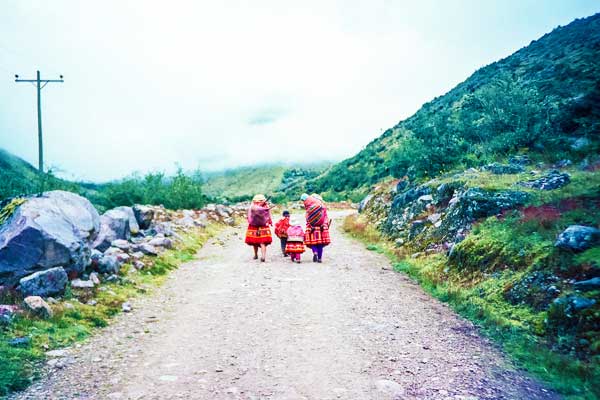
Photo by Jared Yeh
Important Details About Lares Trek
Best time to trek.
The best time for you to hike the Lares trail is between May and September, which is during the Andes dry season.
While the Classic Inca trail is known to be overcrowded during these months, the number of different route options of the Lares trail mean that the trails are relatively empty.
Nevertheless, the Machu Picchu Citadel and the hotels in Cusco are likely to be booked up way in advance and very busy, so early preparation is still important.
Remember, that while rain in the dry months is relatively unlikely, it is still necessary for you to pack rain-proof gear because rain is possible at any time of the year.
The shoulder months of the dry season, April and October, are also an ideal time to visit because the trails are especially peaceful and the chance of rainfall is still low.
As November arrives, the rainfall spikes and your chances of encountering rain along your journey is quite high. From December until March, the high rainfall and low visibility due to heavy fog makes hiking the Lares trail quite uncomfortable and we recommend that you do not plan your trip over these months.
Temperatures are moderate and relatively constant throughout the year, averaging around 22°C in the days and dropping to approximately 5°C in the night times, although temperatures are known to fall well below freezing.
Because of the range in temperatures, it is important to pack layered clothing suitable for all conditions (see our packing list for Machu Picchu ).
To see a more detailed review of the historical weather in the area, see our article on the best time to hike Machu Picchu .
Training and Preparation
To prepare for you hike in the Andes, the best you can do is going on hikes in your home country.
Weekly 3-5 hour hikes are a great way to harden your muscles, break in your boots, and give you an idea of what is to come.
However, taking this type of time is sometimes difficult and so it is a good idea to build your cardiovascular stamina by going to the gym about 3 times a week in the months leading up to your hike.
Exercises like running, rowing, cycling, and swimming will be helpful to improve your aerobic fitness.
Additionally, although the Lares Trek does not include as many stairs as the Classic Inca Trail, the summiting and descent of up to 3 passes requires strength in your leg muscles.
This can be attained by adding lunges, squats and skipping into your exercise routine.
Acclimatization and Altitude Sickness
The effects of altitude sickness – including headaches, fatigue and nausea – can become apparent at anywhere above 3,000m in altitude.
All of the route options spend most of the hike above this point, so precautions must be taken to limit the likelihood of being badly effected by altitude sickness.
Some of the most important things to remember are to drink plenty of water, to avoid the use of drugs or alcohol and to spend an adequate amount of time in Cusco acclimatizing.
However, it is important to be fully educated on the potential risks you are taking in entering thinning air, so we recommend you read our guidance article on altitude sickness.
You might also potentially consult a doctor if you would like to procure medication which will alleviate some of the most uncomfortable symptoms.
Unlike the Classic Inca Trail, the Lares Trek does not require permits.
This being said, be sure to book accommodation and entrance to Machu Picchu well in advance, especially if you have chosen to do your hike during the dry season.
The Lares Trek is moderately difficult, with slight variation depending on which route you choose. The difficulty ranges from 2/5 to 3/5, requiring trekkers to traverse either 2 or 3 passes or high altitude.
The routes are not technically challenging at all, although many tour companies recommend that you carry a walking stick to improve your balance and lighten the load.
If you are aerobically fit, and have relatively strong leg muscles, you should be able to manage the hike in terms of fitness – it is the effects of high altitude that really pose a challenge to many regardless of age, or fitness levels.
For this reason, make sure you are familiar with the symptoms of altitude sickness.
Frequently Asked Questions
Am i going to be carrying my own things.
Look carefully at what is included in the tour that you book. Some tours provide porters to carry the general equipment like tents, food and cooking gear, expecting you to carry your personal items yourself.
Other deals provide llamas, pack mules or horses to carry your personal items, recommending that any day kit is carried in your daypack or backpack . If your tour does not include a porter for your personal equipment, it is usually possible for the company to organize an extra porter to carry your things at an additional cost.
What are the toilet facilities like?
Most of the campsites that you will be staying at will be kitted with private toilets. However, these may be pretty run down and “low-tech”. Check with your tour company which campsites you will be staying at to get an idea of the facilities.
Is it possible to do the trek without a guide?
Yes, it is possible to trek without a guide, but is it not recommended for several reasons.
Firstly, some of the paths can be quite obscure and there are usually not enough other people to rely on for directions.
Next, the risks of altitude sickness can be mitigated by advice and directions from a knowledgeable guide. And finally, one of the great joys of the Lares Trek is meeting and interacting with locals, which requires someone who speaks Quechua.
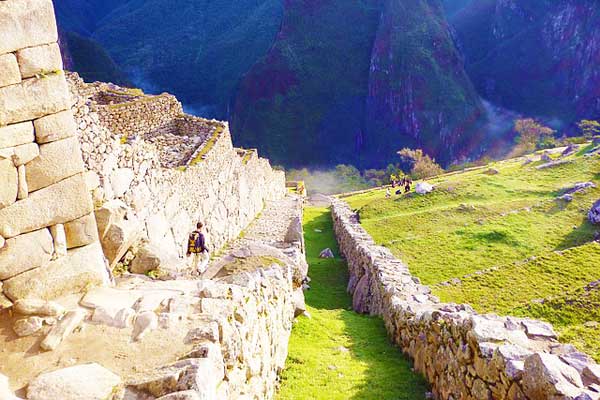
Recommended Guidebook
The Lonely Planet Peru Travel Guide is one of the most detailed, yet easy to digest guide to the Peruvian Andes and has most of the treks and routes in it.
Other Hiking Articles:
- Hiking the Inca Jungle Trail
- Permits for hiking the Inca Trail
- Hiking the Vilcabamba trail
- Trekking the Salkantay trail
- South American Hikes
- South American Mountains
References: Wikipedia , Lonely Planet
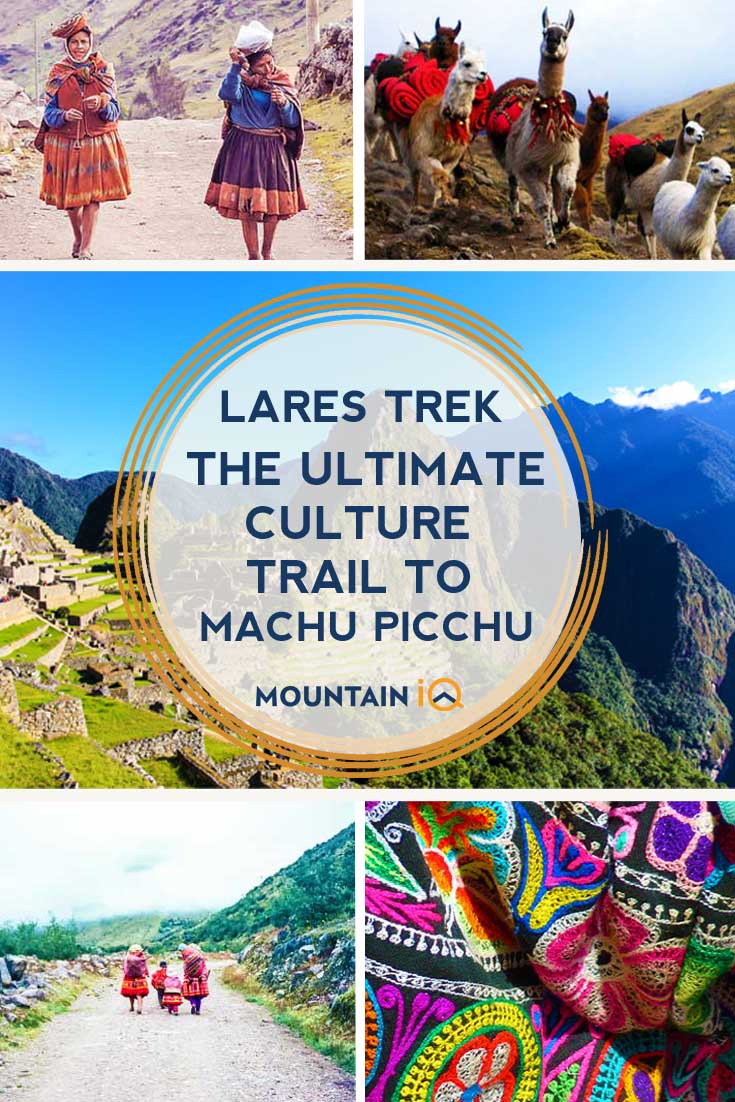
About the author
Mark Whitman
Mark has trekked extensively in Asia, Europe, South America and Africa. He founded Mountain IQ in 2014 with the sole aim to be the best online information portal to some of the most popular mountain destinations around the world. When not writing for Mountain IQ, Mark is out exploring the outdoors with his wife!
Leave a Reply
Your email address will not be published. Required fields are marked
We work with local guides to offer great value adventures at unbeatable prices
+51 986857391
Redes Sociales En
Find Us On:
Waman Adventures

- Machu Picchu
- Treks to Machu Picchu
- Festivities and Events
- Travel guides
The Definitive Guide to the Lares Trek to Machu Picchu
Ultima actualización en 30 April, 2024 por Gonzalo Rodrigo Tapia Condori
Last Updated on 30 April, 2024 by Gonzalo Rodrigo Tapia Condori
Exploring ancient Inca trails and majestic scenic routes of the Lares Trek is delving into a unique adventure that transforms and connects the traveler with the authentic essence of the Andes; this trekking is renowned for its extraordinary natural and cultural richness . Additionally, immerse yourself in a hidden treasure amidst this impressive landscape: the Lares hot springs that rejuvenate your body and mind to continue your adventure with renewed energy.
In this comprehensive guide by Waman Adventures , we provide you with all the necessary details and recommendations to plan and fully experience this truly memorable journey. Whether you opt for the 4-day trek or the combined route with the iconic Short Inca Trail, this adventure will offer you a profound immersion into the extraordinary natural, cultural, and spiritual richness of this region. Let yourself be enveloped by the magic of the Andes and discover everything that the Lares Trek has in store for you in the following sections.
GENERAL INFORMATION ABOUT LARES TREK
What is lares trek.
Lares Trek is one of the alternative trekking routes to Machu Picchu that winds through the high Andes , taking hikers through charming traditional Andean villages, where they can immerse themselves in the authenticity of local life. Additionally, it offers a unique experience by allowing adventurers to explore the wild and extraordinary biodiversity of the Andes. Lares Trek is recognized by travelers and travel blogs as the “Ultimate Cultural Route” for hiking in Cusco .

Enjoy the feeling of conquering the Lares Trek to Machu Picchu.
Where is Lares Trek?
Lares Trek is located amidst the mountains surrounding the Sacred Valley of the Incas in the Cusco region, Peru. This hiking route, an alternative to the Inca Trail, traverses a variety of stunning landscapes, including glacial lagoons, mountain passes, the relaxing hot springs of Lares, traditional Andean villages, and a series of Andean endemic ecosystems.
Where is the town of Lares?
The town of Lares, from which the trek takes its name, is located in the Andes mountain range, in southern Peru. It’s approximately a 3-hour drive from the city of Cusco, in the Lares district, Calca province.

You will pass through beautiful villages and observe the Andean people’s daily life.
What is the altitude of Lares Trek?
The Lares Trek trail spans a range of altitudes, starting from 2,800 meters above sea level (masl)/9,186 feet in the early hours of hiking, and ascending to higher altitudes of up to 4,800 masl/15,419 feet, typically reached on the second day of the trek.

The contrast between Andean life and landscapes is incredible.
Does Lares Trek allow me to visit Machu Picchu?
Absolutely, Lares Trek has become a great alternative to the Inca Trail, as it also offers you the opportunity to visit and explore the famous Machu Picchu Archaeological Complex, which you will visit on the last day of the trek, whether you choose the 4-day Lares Trek or the 5-day Lares Trek with Short Inca Trail.
DIFFICULTY, PREPARATION, CLIMATE, AND ACCLIMATIZATION
Difficulty of lares trek peru.
This trek is considered of moderate difficulty , with an average of 6 hours of hiking per day. Therefore, it is important for travelers to be in good health and have adequate physical condition, as they must endure walking for several hours at an average altitude of 3,500 meters above sea level (11,482 feet).
The Lares Trek is similar in difficulty to other trekking routes to Machu Picchu, such as the Inca Trail and the Salkantay Trekking. Therefore, it is not necessary to be an expert mountaineer or athlete; only the best attitude and a decent state of health are required.

You will cross flat terrain, which will make the trek a pleasant experience.
Is Lares Trek Peru Dangerous?
Certainly not. While this outdoor adventure involves a level of risk and challenge, do not let that worry or discourage you. By following the guide’s instructions and choosing a professional, legal, and experienced agency, you will be safe at all times. Remember that Lares Trek is an incredible experience worth enjoying, and with the proper precautions, you can do so with complete peace of mind.

Enjoy the Lares Trek and the living culture and traditions of its dwellers.
How Long is Lares Trek to Machu Picchu?
The duration of Lares Trek will depend exclusively on the version you choose to do and the agency you hire, as there are currently different offers (3, 4, and 5 days), and all of them offer you an incredible experience; you just have to choose the one that suits you best. Here are the 4 and 5-day versions:
- Classic Lares Trek: This version is the most well-known and favored by all travelers; it lasts for 4 days and 3 nights , where you will spend the third night in a hotel in Aguas Calientes, so that on the last day you visit Machu Picchu and take the best photographs.
- Lares Trek + Short Inca Tra il: Typically, this version lasts for 5 days and 4 nights , as it allows you to do the famous Short Inca Trail trek.
BOOK THE LARES TREK TO MACHU PICCHU!
Discover the beauty and importance of the Peruvian Andes on our classic Lares trek, the ideal option for those who wish to live a unique experience. Free yourself from crowded palces, while observing rural Andean life and learning about their customs.
How Many Kilometers is Lares Trek?
The distance ranges from 30 to 40 kilometers; this also depends on the version you choose to do. Here, you will also discover how many miles Lares Trek is:
What is the Highest Point of the Lares Trek Hike?
During the Lares Trek tour, you will reach a maximum altitude of 4,813 masl/15,480 feet, which you will reach by conquering the Sicllakasa Pass , from where you will have an exclusive privileged view of the surroundings.
How to Combat Altitude Sickness on Lares Trek?
Part of the adventure is the challenge, and as such, there is the famous altitude sickness, a symptom that travelers suffer when they exceed 3,000 meters above sea level, which includes symptoms such as dizziness, vomiting, diarrhea, headache, and dehydration.
To avoid having a bad time , we suggest you follow our recommendations and thus have a safe experience on Lares Trek:
- Avoid consuming alcoholic beverages
- Drink plenty of water
- Eat light and nutritious foods
You can also consume coca tea to speed up the adaptation process; however, it is recommended not to drink excessive amounts and not at night, as that could cause insomnia.

Tips for better and faster acclimatization
Important: In case you are not cautious and do not take into account the symptoms and recommendations, you could suffer more serious consequences such as pulmonary edema.
Do I Need to Prepare for Lares Trek?
Definitely yes, and not because it is an extremely difficult route, as it is considered a trail suitable for all audiences in good physical and health condition.
Once your reservation has been confirmed, you must start preparing to conquer the altitude. For this purpose, we have designed some recommendations for proper preparation.
- Perform cardiovascular exercises: you must strengthen your respiratory and cardiac resistance due to the steep ascents and high altitudes on the first two days of trekking.
- Perform muscle strengthening exercises: although our horses and muleteers will indeed carry your luggage (06 kg), you must take into account that personal items have to be in your backpack and that each day you will walk for approximately 06 hours.
- Trekking or mountaineering: months before taking off on this great adventure, you can attempt some other treks or hikes in order to adapt your body to nature and gain more sense of hiking.
- Prepare yourself mentally: this step is something many people ignore, but they could not be more mistaken. Remember that this is a challenge bringing mental and emotional tests to be aware of to beat.

Training before attempting the hike is something we recommend.
What to Do in Cusco Before Lares Trek Peru?
Days before doing Lares Trek or any other hiking route, you must stay in the city of Cusco for at least 1 day, or 3 days as the most recommended for acclimatization to the altitude; your body will thank you for it. During this stay, you can take 1-day or half-day tours, which will allow you to learn more about this great city and also help you to speed up the process. You can choose from the following:
- City Tour of Cusco: Half-Day
- Sacred Valley Tour + Chinchero | Full Day

Beautiful places to visit during your time in Cusco
CLIMATE IN LARES TREK
The climate in the Andes is unpredictable, and Lares Trek is no exception. Considering that the trail is open all year round, it’s important to know that the annual temperatures range between 21 °C during the day and 4 °C at night. Remember that each season has its own characteristics.
Rainy Season in Lares Trek
It usually starts in November and ends in March. During this season, rainfall is more frequent, and the trail may be a bit muddy, as well as the camping areas. On the other hand, the vegetation enters its peak stage, and the entire trail offers incredible natural scenery.

Enjoy the trek, even under the rain.
Lares Trek in November
- November marks the beginning of the rainy season ; however, rainfall is not yet so frequent, and the climate remains warm both day and night, with average temperatures of 18 °C (64 °F) during the day and 3 °C (37 °F) at night.
Lares Trek in December
- Rainfall becomes more frequent, but temperatures remain warm during the day at 19 °C (66 °F). Nature begins to take more prominence, with cooler temperatures of 4 °C (39 °F) at nigh t.
Lares Trek in January
- In this month, rain is present 70% of the days , and waterfalls or small streams become more prominent as their flow increases, perfect for unforgettable photographs. Daytime temperatures hover around 17 °C (63 °F), with nighttime temperatures dropping to 2 °C (36 °F).
Lares Trek in February
- Known as the rainiest month of the year , you will enjoy a temperate climate during the day at 16 °C (61 °F), with some presence of mist that gives the trail a mystical touch, and nights cool down to 1 °C (34 °F).
Lares Trek in March
- Rainfall begins to decrease, and the approach of the dry season is felt, so nights feel colder at 0 °C (32 °F) . However, it is a great month to hike this trail and take the best nature photographs, with highs of 17 °C (63 °F).
Dry Season in Lares Trek

The sun will be your best companion at every step.
Lares Trek in April
- The rainy season ends , and the dry season begins, with the weather becoming more stable. Daytime temperatures are generally sunnier at 20 °C (68 °F), and rainfall begins to diminish, with lows of 2 °C (36 °F).
Lares Trek in May
- Days continue to be dry and stable , with daytime temperatures warmer at 22 °C (72 °F). During the trek, you can enjoy sunny days and clear landscapes, with cooler nights at 3 °C (37 °F).
Lares Trek in June
- Days become drier with a drier winter climate , meaning that rainfall is practically nonexistent. During your trek, you will enjoy radiant sunshine that accompanies you every step of the way, with highs of 20 °C (68 °F) and lows of -1 °C (30 °F).
Lares Trek in July
- Nighttime temperatures are colder at -3 °C (27 °F) , so you will need to dress warmer, and during the day, the weather is even sunnier and clearer, with winds starting to take prominence, with highs of 21 °C (70 °F).
Lares Trek in August
- The trail becomes drier; however, there is a possibility of light rain during the treks, and while walking, you will be accompanied by refreshing winds, with highs of 22 °C (72 °F) and lows of -2 °C (28 °F).
Lares Trek in September
- Known as the windiest month of the year , which will accompany you during your trekking days, and you may witness more light rain, so you must prepare the appropriate clothing. Temperatures vary between 20 °C (68 °F) during the day and -1 °C (30 °F) at night.
Lares Trek in October
- It is the month that marks the end of the dry season , and as the days go by, rain will take center stage, so you should take advantage of doing the Lares Trek at the beginning of this month when sunny days still prevail, with highs of 19 °C (66 °F) and lows of 1 °C (34 °F).
So when is the best time to do the Lares Trek?
To answer this question, we must understand that the Lares Trek trail is available all year round, but its visit is not recommended during the month of February . It is also important to remember that there are only 2 climatic seasons, the dry season and the wet season.
First, think about your goals and expectations. For example, if you want a tougher experience, the wet season is the want cause in that season the weather is harsh and unpredictable with many storms, lightning at higher altitudes, and snow is very common. Furthermore, if you are traveling with your children and expecting warm and stable weather, the dry season is the right one in order to avoid the sickle of nature.
Whatever your choice, you will enjoy an exceptional adventure, but to make everything clearer, we will show you the advantages and disadvantages of each season month by month.

Hikers near Cuncani under clear sky
According to most travelers’ opinions, the best season is during the dry season, as the terrain is firmer, and there is no presence of rain. But the final decision is yours. The choice is entirely yours!
RESERVATIONS AND DOCUMENTATION FOR THE LARES TREK
Is it necessary to book the lares trek in advance.
Lares Trek is less known than the Inca Trail, and therefore the influx of tourists is lower . However, we recommend booking at least 3 months in advance to secure your entrance tickets to Machu Picchu for your chosen date. Similarly, booking in advance provides the opportunity to coordinate all services and equipment for your trip more effectively.
How to Book the Lares Trek?
- 4 days Lares Trek
- 5 days Lares Trek + Short Inca Trail
- Passport photo
- Date of birth
- Nationality
- Email address
- We will send you a reservation confirmation by email, which you can print or save on your device.
- This will allow you to start preparing for the adventure of your trip.
What is the price of Lares Trek?
The price of the Lares Trek varies depending on the trek version and the operating travel agency. In general, we can estimate a price range ranging from $569 USD to approximately $1,000 USD per person.
This amount will also depend on the number of travelers and the type of service requested, whether in a group or private mode.
WHAT TO PACK FOR LARES TREK?
What is a duffle bag.
A duffle bag is a large, sturdy bag designed to carry equipment and supplies during expeditions or hiking trips . These bags typically have a durable construction, with water-resistant materials and reinforced straps or handles for easy transport across various terrains.
In the specific case of Lares trek with Waman Adventures, the duffle bag carries up to 6 kg of a traveler’s personal belongings.
- Sleeping bag (can be rented from us, weighs 2 kg).
- Lightweight shoes or sandals for the camp.
- Thermal jacket/windbreaker.
- 4 or 5 shirts.
- 2 to 3 pairs of trekking pants.
- 4 sets of underwear.
- 4 pairs of trekking socks.
- Quick-drying towel.
- Eco-friendly soap.
- Toothbrush and toothpaste.
- Facial cream.
- Power bank.
- Plastic bags.
- Swimwear (disposable).
Note: These items will only be available at each camp.
- Equipment for a small backpack or Backpack Day:
- Hats and sunglasses.
- Waterproof jacket.
- Fleece jacket.
- Trekking poles.
- Insect repellent.
- Hand sanitizer.
- Toilet paper.
- Personal medication.
- Camera and batteries.
- Extra money for souvenirs, snacks, drinks, and tips.
Note: Try to include these accessories in a small backpack that is accessible to you throughout your journey.
Who will carry my luggage on the Lares Trek?
Normally, all packages offered by travel agencies provide a muleteer service for the Lares Trek 4 days or the Lares Trek with Short Inca Trail 5 days , who are responsible for carrying your luggage (max. 6 kg per traveler) and also part of the necessary equipment for you to enjoy all our services.

Mules trying to take over the Sikllacasa Pass.
Note: In case you wish to bring extra luggage, it is recommended to hire an additional muleteer, whose service costs $80.00 USD per traveler and can carry up to 7 kg of additional luggage.
Why are trekking poles important on the Lares Trek?
The terrain you will traverse during this hike is rocky and uneven in some sections, so trekking poles will be your best support both on ascents and descents. The poles make the journey more bearable by allowing you to distribute weight more evenly and reduce the impacts of walking.
Are trekking shoes important for doing the Lares Trek?
A good pair of trekking shoes can make a difference when embarking on excursions in rugged and rough terrain. Choose wisely and consider the following qualities:”
Definitely yes, a good pair of trekking shoes can make all the difference when hiking on rough and rugged terrain. Choose wisely and consider the following qualities:

Characteristics of good trekking shoes.
FLORA AND FAUNA IN LARES TREK
Flora of lares trek to machu picchu.
On the first hiking day, it’s common to encounter lots of eucalyptus trees at the foothills of the Sacred Valley. Once you get started hiking and climbing through the mountains, you will appreciate how the flora will change; I mean, the eucalyptus trees will disappear at some point and Unca, Chachacomo, and Queuña trees, which are native, will gain dominance in the area.
Also, the trees are sometimes covered with vines and tangles making the vegetation very thick and impossible to pass through. Along the route, there are many types of flowers, some of them are blooming on ground level, and some of them are scrubs or have tubular shapes.
Finally, there are potato crops and other agricultural areas that real Andean people have been harvesting since the Inca’s time.

The domestic and exotic flora is incredible
Fauna of the Lares Trek to Machu Picchu
Hikers come across some villages and towns and some typical fauna such as alpacas, cows, bulls, hens, and guinea pigs are present near humans.

Domestic animals you will find on the trek, the guinea pig, sheep, and llamas
However, there is also the possibility of sighting wild animals such as pumas, birds , Andean foxes, vizcachas, and skunks is possible.

Fauna of the Lares Trek
Andean culture in the Lares Trek
The cultural importance of the trek to Lares is something very valuable both for travelers who dare to travel this path and for the inhabitants of the local Andean communities. Since it becomes a beneficial, enriching, and authentic experience, where living customs and traditions are transmitted in unique moments of coexistence that only the Lares Trek tour can offer you.

Andean culture is worth it.
Scenic landscapes of the Lares Trek
Natural beauty cannot pass inconspicuously because every hour the landscape is always changing, and once you take over the Sikllacasa Pass, you will witness lakes and rocky slopes and cliffs while descending to Cuncani.

Exclusive and dreamed landscapes along the route.
LARES HOT SPRINGS
Lares hot springs has 6 pools, one cold and five hot (36°C to 44°C), with depths ranging from 1.40 to 1.60 meters. Its healing properties are due to minerals such as potassium, sodium, zinc, among others.
The Lares Hot Springs are famous for their outstanding therapeutic properties. These waters offer a natural treatment for muscle and bone pain, as well as a remarkable ability to reduce stress and bodily tension. Its mineral components, such as potassium, sodium, zinc, and calcium, among others, combine to provide health benefits such as improving arthritis, osteoporosis, and stomach pains, as well as facilitating the rehabilitation of bone injuries.
In addition to their healing properties, these waters promote relaxation of the body, helping travelers from hikes to release tensions and find a state of general well-being. In short, it’s a natural and rejuvenating wellness experience.

Lares Hot Springs during Lares Trek
Important: The presence of minerals in the water gives it a yellowish color, so the use of disposable swimwear is recommended.
Can you do the Lares Trek without a Guide?
The answer is yes; however, we do not recommend making this decision because the trail is not well marked, which could lead to getting lost during the trek. It’s also important to consider the altitude, the type of terrain, and the necessary equipment for this adventure.

The guide is a knowledgeable local person who knows the route perfectly.
Choosing a Tour Company
Remember that when hiring an experienced and legal travel agency like Waman Adventures , you ensure having the best adventure. We will provide food for each day of the tour (breakfast, lunch, and dinner), necessary equipment (tents), and above all, the security of having highly experienced and trained staff (guides, horsemen, and cooks).

Waman Adventures guarantees you the best camping and dining experience.
Can Children and People Older than 60 Years Attempt the Lares Trek?
No rule or regulation prohibits any child under 12 or an adult over 60 from attempting the Lares Trek. However, Waman Adventures, as a responsible agency, recommends that the child be at least 12 years old and the adult be between 50 and 55 years old at most. But don’t let this discourage you, as you can still do the trek as long as you follow these recommendations:
- A responsible adult must accompany the children at all times to ensure their safety.
- If you are over 50, you must be in very good health, have physical endurance, and undergo thorough medical checks before doing the trek. Also, travel insurance is essential.
- In both cases, it is highly recommended to acclimatize for 2 days in Cusco before the trek.
- If you have any special personal medication, take it with you at all times during your trip and inform the sales and guide staff.
Are there hotels on the Lares Trek?
There are no hotels on the Lares trail, as this is a hike through the mountains and the Peruvian Andes. During the first two days, you will spend the night in comfortable and cozy tents, providing the best camping experience with top-notch equipment.
On your third day arriving in Aguas Calientes, you will spend the night in a comfortable hotel, where you will rest for the eagerly awaited Machu Picchu tour.
Are There Restrooms on the Lares Trek?
If you refer to public restrooms available along the trail, the answer is no. However, Waman Adventures provides the most modern portable toilets, which will be available at each resting/camping area and exclusive to the group.
Is there phone reception along the Lares Trek?
In the first two days, you will have phone reception at some points of the trek. At the clinch point, there is internet and good phone reception. Then, when you climb more and more, you will get reception. There is phone reception and internet while climbing to the highest point of the trek, but after passing it there is no more until Lares.
Medical Kit or First Aid Kit on the Lares Trek
The First Aid Kid is essential when doing outdoor activities. Waman Adventures provides confidence and security to all our travelers that they are in good hands and accompanied at all times by fully qualified staff.

The importance of having a medical kit is indisputable.
Hygiene Products
Carrying a hand sanitizer is extremely important, as it will allow you to consume your food, such as snacks, energy bars, nuts, etc., safely and completely free of germs. It will help you avoid any infection or stomach discomfort that could jeopardize your health and your experience during the trek.
What about medication?
In case you are a person with special medication requirements, it is strongly advised to have them on hand at all times and inform the guide about your health condition before embarking on the trek, so that our staff is aware of your medical situation.
What food is provided on the Lares Trek to Machu Picchu?
The offer of breakfasts, lunches, and dinners depends on each travel agency. At Waman Adventures , we offer the widest range of the best trekking dishes, which our chefs have designed to have the most nutritious and delicious options in each culinary offer.
- Each season, the offers vary, and we show you a list of possible foods that you can enjoy:
- Breakfasts: hot chocolate, teas, coffee, coca tea, orange juice, papaya, toast, cereals, milk, oatmeal, scrambled eggs, omelets, and fruit salad.
- Lunch: quinoa soup, chaufa, vegetables, stuffed potatoes, ceviche, meat skewers, chicken, and fish, accompanied by appetizers and desserts.
- Dinner: Andean pizza, pasta, sautéed vegetables, and delicious desserts.
- Happy Hour: hot milk drinks, coffee, teas, cookies, popcorn, and stuffed wantan.
- The diversity of food offered on the trek to Lares.
I am vegetarian. Can I do the Lares Trek?
If you are a vegetarian, vegan, or have any food allergies, you just have to inform us at the time of making your reservation, and our professionals will organize and coordinate your meal alternatives at no additional cost.
Can I buy snacks on the Lares trek?
It is highly recommended that you bring your own snacks, which you can buy in the days before in the city of Cusco and as a last resort in Ollantaytambo. During the first 02 days of trekking, you will only find small improvised stalls that usually sell basic snacks and some rehydrating drinks, for which you must have money in “Soles.”

You will be in the city of Ollantaytambo briefly
How much money should I take on the Lares Trek?
There is no exact amount, as while it is true that tourist packages cover most costs such as food, water, tickets, and transportation, there are some costs along the tour for which you will need to carry cash in coins and small bills, preferably in Soles (Peru’s national currency), which will cover possible expenses such as:
- Snacks and drinks.
- Entrance fee to the bathrooms of the Machu Picchu archaeological complex.
- Tips for support staff and guides.
- Lunch in Aguas Calientes or Machu Picchu Pueblo.
- Conclusion about the Lares Trek to Machu Picchu.
Some final recommendations during the Lares Trek
To ensure that your experience during the Lares Trek is safe and completely enjoyable, we suggest following the indications of the professionals and also the following recommendations:
It’s Not a Competition
You don’t have to be the first to reach each point; enjoy the entire tour experience, take a break when needed, and take the time to capture the best photos of the trail.
Be Empathetic
During your trip, you will meet new people with whom you can share pleasant and anecdotal experiences. If they get tired, you can help them overcome this challenge and enjoy the beautiful journey together through the Andes.

Share this pleasant experience with other travelers and your own friends.
Is the Lares Trek worth it?
The Lares Trek is a great trekking option in Cusco, as it will not only take you through beautiful trails and small villages full of living culture but also allow you to get to know and explore the Machu Picchu world wonder.
You will connect and spend pleasant moments with the high Andean inhabitants, who will welcome you with open arms and the warmth typical of their culture, where you will learn more about their way of life and language. Do the Lares Trek, known as the “Ultimate Cultural Route.”

Now you know everything about this incredible journey through the Peruvian Andes by reading this complete guide to Lares Trek . May your journey on the Lares Trek be filled with discoveries and unforgettable moments! May every step you take bring you closer to the greatness of history and nature that awaits on those trails, culminating in a visit to Machu Picchu, the most incredible archaeological complex in South America.

Experto en turismo, fotografía y viajes, apasionado por explorar el mundo y compartir sus experiencias a través de palabras y fotos. Con años de viajes y fotografía, ha capturado la esencia de diversos destinos, desde selvas tropicales hasta ciudades históricas.
View all posts
OTHER INTERESTING BLOGS
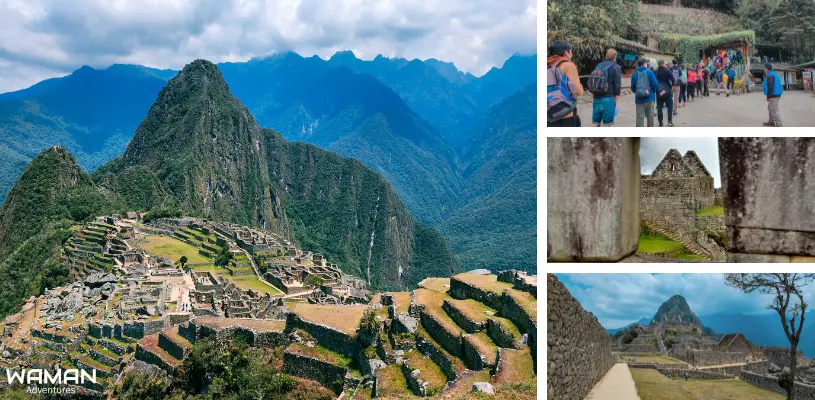
MACHU PICCHU TRAVEL GUIDE: ROUTES, TIPS AND RECOMMENDATIONS
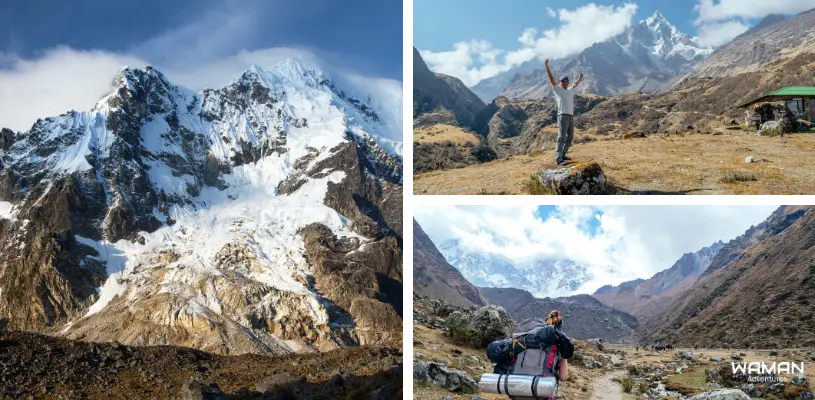
THE ULTIMATE GUIDE TO CONQUERING THE SALKANTAY TREK
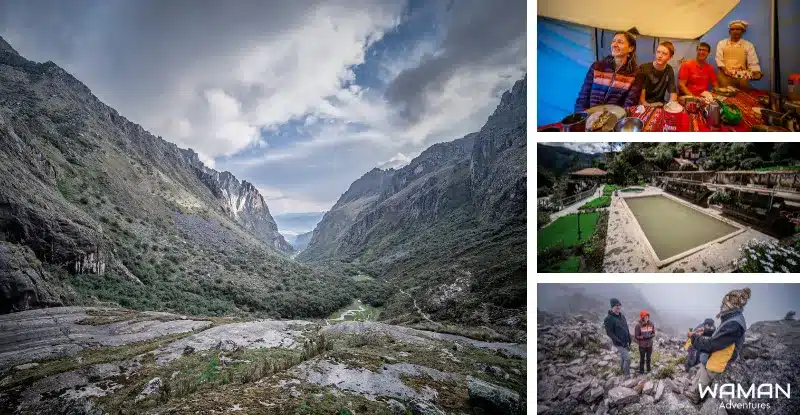
THE DEFINITIVE GUIDE TO THE LARES TREK TO MACHU PICCHU

ALL ABOUT ENTRANCE TICKET TO MACHU PICCHU
If you liked this article and the information you found, give us 5 stars, table of contents.
- International

Don't miss our posts
Subscribe to our newsletter and receive offers, news and more!
SUBSCRIBE TO OUR BLOG!
And receive all our news.


Most Recent: Reviews ordered by most recent publish date in descending order.
Detailed Reviews: Reviews ordered by recency and descriptiveness of user-identified themes such as waiting time, length of visit, general tips, and location information.
Also popular with travellers

Lares Trek - All You MUST Know BEFORE You Go (2024)
- Lares Valley (Full Day) (From AU$78.50)
- All Inclusive - 4 Days Lares Trek To Machupicchu - Private Experience!!! (From AU$1,148.51)
- Lares Trek to Machu Picchu: 4-Day Tour (From AU$921.47)
- 4 Day - Lares Trek to Machu Picchu - Group Service (From AU$1,385.13)
- Lares Trek 4 days with Panoramic Train (From AU$1,068.31)
- (15.94 km) Sacred Dreams Lodge
- (11.49 km) Hospedaje K'uchuwasi Backpacker
- (12.39 km) El Mono Sabio
- (7.65 km) Eco Lodge Cabanas
- (9.14 km) Hospedaje Paraiso
The Ultimate Guide to the Lares Trek: A Cultural Journey to Machu Picchu

- Post author: Mark Ching
- Post published: 15 February 2024
- Post category: Inca Trail / Travel Life / Travel Tips
The Lares Trek stands as a remarkable alternative to the famous Inca Trail, offering a unique blend of cultural immersion and breathtaking landscapes. This lesser-known route winds through the Peruvian Andes, traversing remote Quechua villages and showcasing the majestic beauty of snow-capped peaks. The Lares Trek adventure culminates in the awe-inspiring citadel of Machu Picchu, rewarding trekkers with an unforgettable experience of history, nature, and adventure.
Key Takeaways
- The Lares Trek offers intrepid travelers a truly immersive experience, combining breathtaking scenery with rich cultural encounters along the way
- The Lares Trek presents a moderate to challenging hiking experience, suitable for adventurers seeking a deeper connection with the Andean way of life
Essential Information about the Lares Trek

The Lares Trek presents a moderate to challenging hiking experience, suitable for adventurers seeking a deeper connection with the Andean way of life . Trekkers can anticipate diverse terrain, including mountain passes, valleys, and high-altitude plateaus, all while immersing themselves in the rich cultural heritage of the region.
The climate along the Lares Trek varies significantly depending on the altitude and time of year. While days can be warm and sunny, temperatures can drop sharply at night, especially at higher elevations. It’s essential to pack layers and be prepared for potential rain, particularly during the wet season from November to March.
The primary language spoken along the Lares Trek is Quechua, the ancient language of the Incas. While some locals may speak Spanish, especially in more touristy areas, it’s beneficial to learn a few basic Quechua phrases to communicate with villagers and enrich your cultural experience.
Peru operates on Peru Time (PET), which is 5 hours behind Coordinated Universal Time (UTC-5). It’s important to adjust your schedule accordingly, especially for transportation and tour departure times.
Visa Information
Most visitors to Peru, including citizens of the United States, Canada, and the European Union, do not require a visa for stays of up to 90 days. However, it’s essential to check current visa requirements before traveling and ensure that your passport is valid for at least six months beyond your planned departure date.
General Safety Tips
Overall, the Lares Trek is considered safe for travelers, but it’s essential to take precautions, especially regarding altitude sickness and proper hiking equipment. Trekkers should acclimatize in Cusco before beginning the journey and listen to their guides’ instructions regarding safety protocols.
Packages for Your Lares Trek Adventure

Numerous tour operators offer packages for the Lares Trek, ranging from budget-friendly options to luxury experiences. These packages typically include transportation, meals, camping equipment, and guided tours, providing trekkers with everything they need for a memorable adventure. It’s advisable to research different operators and read reviews to find the package that best suits your preferences and budget.
Experience the Lares Trek with Lima, Peru
Discover an alternative route to Machu Picchu that is equally as great but less crowded than the Inca Trail via the Lares Trek. This high altitude trek will please hikers interested in interacting with the local communities and seeing their way of life in the countryside.
Experience the Lares Trek with Cuzco, Peru
Live a real cultural experience through this Lares Trek adventure. You will enjoy a decent amount of hiking and get some amazing views of the snow-capped mountains. The main draw of the Lares Trek is hiking to remote Quechua villages where locals are dressed in their traditional clothes.
Enjoy the Lares Trek in 5 Days
Enjoy stunning views of the snow-capped mountains in the Lares Trek and v isit the archaeological site of Machu Picchu.
FAQs About the Lares Trek

Can you compare it with the Inca trail?
While both the Lares Trek and the Inca Trail lead to Machu Picchu , they offer distinct experiences. The Inca Trail is more crowded and requires a permit obtained months in advance, whereas the Lares Trek provides a quieter, off-the-beaten-path journey through remote villages and stunning landscapes.
How Many Days is the Trek?
The typical Lares Trek itinerary spans 4 days and 3 nights, allowing trekkers to acclimatize gradually to the altitude and immerse themselves in the local culture. However, shorter and longer options are available, depending on the tour operator and traveler’s preferences.
Where to Stay?
Accommodations along the Lares Trek typically consist of camping in tents provided by tour operators. Some packages may include homestays in local villages, offering a unique opportunity to interact with indigenous communities and learn about their way of life.
Best Time to Go?
The best time to embark on the Lares Trek is during the dry season, from May to September, when the weather is relatively stable, and rainfall is minimal. While trekking is possible year-round, the wet season from November to March brings heavier rains and potentially hazardous trail conditions.
How Far in Advance to Book?
It’s advisable to book your Lares Trek adventure several months in advance, especially if you plan to travel during the peak season from May to September or require specific departure dates. This allows ample time to secure permits, accommodations, and transportation, ensuring a smooth and stress-free experience.
What is the Reward?
The ultimate reward of the Lares Trek is the chance to witness the breathtaking beauty of the Peruvian Andes, from towering peaks to lush valleys dotted with alpacas and llamas. Additionally, reaching Machu Picchu at the end of the journey provides a profound sense of accomplishment and an opportunity to explore one of the world’s most iconic archaeological sites.
How Much Does it Cost?
The cost of the Lares Trek varies depending on the tour operator, the level of service provided, and the time of year. On average, a 4-day trek can range from $500 to $1000 per person, including transportation, meals, permits, and camping equipment. It’s essential to inquire about additional fees and optional extras, such as equipment rentals or entrance fees to Machu Picchu.
What to Pack?
When packing for the Lares Trek, consider the varying weather conditions and terrain you’ll encounter along the trail. Essential items include:
- Sturdy hiking boots
- Lightweight, breathable clothing
- Waterproof jacket and pants
- Warm layers for cold nights
- Sun hat and sunglasses
- Sleeping bag and sleeping pad
- Personal toiletries and medications
- Snacks and hydration supplies
- Camera or smartphone for capturing memories
Do People Speak English?
While some guides and tour operators along the Lares Trek may speak English, it’s not universally spoken in remote villages. Learning a few basic Spanish phrases or Quechua words can enhance your ability to communicate with locals and enrich your cultural experience.
Sample Itinerary For Your Adventure in the Lares Trek

Embark on an authentic cultural journey with the Lares Trek adventure. Immerse yourself in ample hiking amidst breathtaking vistas of snow-capped peaks. The highlight of this trek lies in traversing to secluded Quechua villages, where inhabitants don their traditional attire, offering a glimpse into centuries-old lifestyles that have remained largely unchanged. Witness their distinct way of life before concluding your cultural odyssey with a guided exploration of the awe-inspiring wonder of Machu Picchu.
Lares Trek to Machu Picchu 4D/3N
Day 1: cuzco - wakawasi.
Today, you will be picked up at your accommodation between 5:00-6:00 am and transferred by bus to Lares Town (2,900 m). After a relaxing stop at the Hot Springs (at an extra cost), embark on a 6-hour trek to the town of Wakawasi (3,850 m). Along the way, enjoy stunning views of glaciers, wildlife, and local communities, immersing yourself in the Andean way of life.
Day 2: Wakawasi - Patacancha
Embark on a 4-hour trek to the top of Ipsayccocha Pass (4,400 m), where you’ll savor breathtaking vistas before descending to a picturesque lunch spot by the lake. Continue hiking for 3 more hours to Patacancha town (3,800 m), where you’ll camp amidst llamas, alpacas, and native crop plantations, surrounded by the tranquility of the Andean landscape.
Day 3: Patacancha - Aguas Calientes
Set out on a 4-hour hike to Ollantaytambo, where you’ll enjoy lunch before boarding a train to Aguas Calientes, the gateway to Machu Picchu. Spend the night in a hotel, and if time permits, explore the vibrant streets filled with cafes, shops, and bustling markets, soaking in the atmosphere of this charming mountain town.
Day 4: Aguas Calientes - Machu Picchu - Cuzco
Rise early and catch the bus to Machu Picchu, arriving just as the mist dissipates in the morning light. Enjoy a guided tour of the archaeological site, learning about its history and significance, before exploring at your leisure. Optional activities include climbing Huayna Picchu Peak (additional cost) for panoramic views of the citadel. Return to Cuzco by bus in the evening, concluding your unforgettable journey through the Andean highlands.
The Lares Trek offers intrepid travelers a truly immersive experience, combining breathtaking scenery with rich cultural encounters along the way. From remote Quechua villages to the iconic citadel of Machu Picchu, this trek is a journey of discovery, adventure, and personal growth. Whether you’re drawn to the rugged beauty of the Andes or the vibrant traditions of indigenous communities, the Lares Trek promises an unforgettable adventure in the heart of Peru’s highlands.
Share with the world Share this content
- Opens in a new window WhatsApp
- Opens in a new window Facebook
- Opens in a new window X
- Opens in a new window Pinterest
- Opens in a new window LinkedIn

You Might Also Like

Discover the Magic of Brazil: A Comprehensive Guide to an Unforgettable Vacation
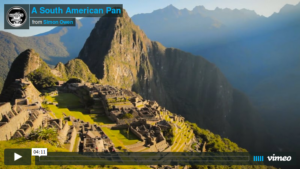
Latin America Honeymoon Video

Inca Trail Express Trek to Machu Picchu: A Journey of Introspection and Romance
- Traveler Blogs
Social Projects
- Inca Trail Availability
- Office: +51 84 254278
- WhatsApp: 202-550-8534
- USA Rep: 202-550-8534
- Manager's WhatsApp: +51 986 029262
- Owner's WhatsApp: +51 947 824774
Lares Trek to Machu Picchu 4 Days / 3 Nights
Lares Trek to Machu Picchu: A particularly special adventure, the Lares trail takes the road less traveled to Machu Picchu.
The Lares Trek offers a unique and rare perspective into the true Andean lifestyle, as trekkers walk through remote villages and visit family homes for an intimate look into the culture and customs of the locals. Trekkers will also get to soak in famous natural thermal baths, trek past waterfalls, and visit the salt mines that make up a significant portion of the local economy. And, of course, witness the sacred ruins of Machu Picchu!
Highlights: Natural hot springs, striking salt mines, remote villages, connection with locals, Machu Picchu Considerations: Since you are hiking in the Alpine, this is one of our coldest treks. Please be prepared with lots of warm layers. Difficulty: While all treks in the Andes are challenging, this hike moves a bit slower than others making it a favorite of our youngest hikers. Season: Year-round.
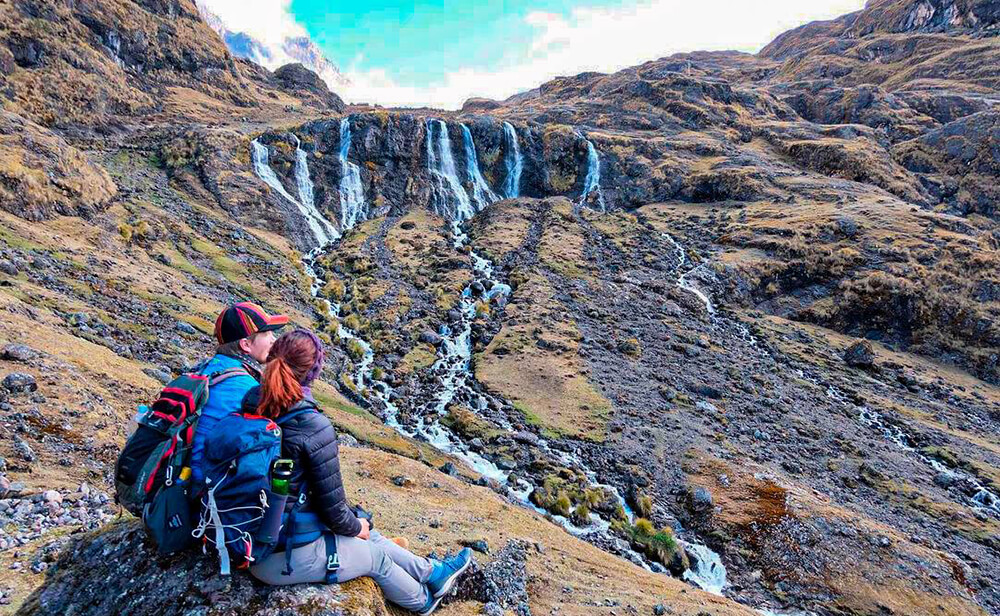
Lares Trek to Machu Picchu 4-Days Trip Details
- Price & Availability
Travel Info
Packing list, porters & horsemen.
This four-day Lares Trek to Machu Picchu includes 2.5 days of alpine hiking and local village visits.
Soak in Calming Hot Springs: Before hitting the trail, you can prepare your muscles for the challenge with a soak in rejuvenating and relaxing thermal baths. This is the perfect way to prepare your body and kick off your trek.
Learn About The Local Villages On Our Most Cultural Trek: The beauty of the mountains is parallel to the generosity of the people you will meet on this marvelous cultural tour. While all treks in the Andes are challenging, this hike moves a bit slower than others making it a favorite for families with young hikers.
The great Lares trek lets you interact with small remote local communities in the Andes. You can meet local people and participate in their traditional Peruvian lifestyle.
Visit Historical Peru Salt Mines: The Lares Valley’s incredible landscapes, views, flora, and fauna will leave you speechless. Plus, the hike itself is an exciting challenge to complete. During your Lares Trek, you will also visit the Salt mines in Maras, where you will see the traditional way the locals still get salt to this day. You’ll even have the option to purchase some to take back home.
Explore Machu Picchu: Alpaca Expeditions’ Lares Cusco trek package will end with a night in a hotel in Aguas Calientes. Then you’ll wake up for an early morning beautiful train ride to visit Machu Picchu for your guided walking tour on the 4th day. This tour of Machu Picchu really is the best way to finish your amazing adventure with Alpaca Expeditions.
Itinerary Overview
- Day 1: Thermal Baths – Kiswarani Waterfalls – Camping ( Trekking Distance : 10 km/ 6.21371 miles)
- Day 2: Condor Pass – Cancha Cancha Village – Camping ( Trekking Distance : 14 km/8 miles)
- Day 3: Huaran – Maras Salt Mines – Train to Aguas Calientes – Hotel ( Trekking Distance : 9 km /6.2 miles)
- Day 4: Machu Picchu Day ( Typical time back to Cusco : 8:30PM)
Day 1: Soak in Hot Springs and Reach Your Campsite Under The Falls
Cusco – famous thermal baths – kiswarani waterfall campsite.
We’ll pick you up from your hotel at 5 a.m. to begin the famous Lares Trek to Machu Picchu. Pick up locations can be from any hotel, condo, or apartment located in the cities of Cusco, Urubamba, Huaran, or Pisaq. It’ll be a three-hour drive along the beautiful landscape of the Sacred Valley and through the Andes. Once we arrive at the Lares Hot Springs site, you’ll have your first breakfast accompanied by views of the Andes Mountains. Then, you’ll enjoy the hot springs, which are divided up between various pools ranging from freezing to hot water. They’re all composed of pure volcanic water, which is medicinal and considered to be good for your bones, stress, muscles, and headaches. After soaking in the pools for a while, you’ll drive 20 minutes to the trailhead. Punta Carreteraat 3,300m / 10,827 ft above sea level. This is where you’ll meet up with your horses, riders, and give them your duffle bags. After, you’ll begin your expedition to Machu Picchu with a two-hour gradual uphill hike. That’s when we’ll reach our lunch spot at the first village called Kiswarani. This section of the hike is considered the potato valley area, because people farm many varieties of organic potatoes. Your guide will also point out some indigenous medicinal plants growing along the way. Then, we’ll arrive at our lunch spot where you’ll enjoy your first homemade meal prepared by our trekking chef.
After lunch, our horsemen (llameros) will do a ceremony with llamas showcasing these beautiful animals. Llamas were considered sacred to the Incas and fundamental to their economy. Our llameros will introduce you to these animals and discuss their importance and why owning one was a sign of privilege. Today they’re disappearing due to a variety of different reasons. We hope to continue the tradition of the Incas and give some llamas work. We do this to support the community that helps protect them. Llamas are pleasant to walk with and are friendly animals. Just don’t get too close, they might try to kiss you.
You’ll also have time to explore the village and visit some local homes. You can learn about the lifestyle and ancient traditions of the local people. If there is time, we’ll visit the schoolhouse where the kids still speak their native language Quecha. You may also bring toys, notebooks, or school supplies to distribute. Perhaps you may even teach them a few words in English. It’ll be another two hours of gradually uphill hiking until we arrive at the campsite. There you’ll be welcomed by our trekking staff, who’ll have your tents set up. We’ll enjoy some hot drinks as the sky darkens and the stars start appearing. Finally, you’ll enjoy a lovely dinner prepared on-site. If you want to keep star-gazing, you may stay up for a while longer or if you’d rather you can go to your tent.
Trekking Distance: 10 km/ 6.21371 miles Camp Elevation: 3,850 meters / 1,2631 ft Weather: Cold
Day 2: Summit Condor Pass and Explore a Traditional Andean Village
Quiswarani – condor pass – cancha cancha village.
Today you’ll be woken up around 5 a.m. with our service of hot drinks. You’ll have spectacular views of the colorful lake and the valley of Kiswarani. You’ll see the local people will already be up and about, taking their llamas and alpacas out to graze. Breakfast will be served once you have finished packing your gear. Then we’ll fill up our water bottles, organize snacks, and you’ll begin your expedition to Machu Picchu. It’ll be a three or four-hour climb to get to the summit of the mountain. This pass is called Pachacute or Condor Pass. We’ll zigzag our way up to compensate for the steep uphill. The views of the area are breathtaking, you’ll see lakes, waterfalls, llamas, and alpacas. We’ll have an emergency horse to ride in case you get tired and can’t walk anymore. Once you arrive at the Condor Pass, you’ll be above the clouds and above the mountain peaks. Then you’ll be able to enjoy the astounding 360-degree view. In front of you will be the beautiful mountain of Pitusiray, which is at 5,700 m/ 18,700 ft high. Then there’s the Condor pass at 4,680 m/ 15,354 ft. Afterward, we’ll enjoy a hot drink service that your porters will carry with them. We’ll take advantage of some phenomenal photo opportunities and then start our descent. You’ll then begin the one hour downhill descent towards El Mirador (Vista Point), where you’ll enjoy lunch. There’ll be some llamas grazing nearby. After lunch, you’ll hike the last three hours downhill. There’ll be fantastic views of many lakes, llamas, and alpacas, before arriving at your campsite. Which is the village of Cancha Cancha, the only village that does not have modern technology. Located at (3,750 m / 12,303 ft), where people still practice original Inca traditions. In this Incan village 85 percent of the houses are still built by ancient construction methods. Including houses made of stone and grass-thatched roofs. Unlike any other village in the Lares Valley, this village has no electricity or cars. Here, you’ll not only enjoy the wilderness but your porters will also set up your tents. You’ll have some time to meet with the local children. We provide them with food and school supplies. We invite our travelers to share this support in the education and the health of this native village. You can bring anything you would like to give to these Quechuan-speaking children that they could use for school or home. When you’re done, your guide will take you to one of the local family’s houses. Here you’ll learn about the lifestyle of the locals. You’ll learn about the traditional hand-woven textiles made of llama and alpaca wool. In the evening you’ll enjoy hot drinks and dinner.
Walking Distance: 14 km/8 miles Elevation Gain: 830 meters / 2,723 ft Camp Elevation: 3,750 meters / 12,303 ft Weather: Cold
Day 3: Visit The Maras Salt Mines And Reach The Sun Gate
Cancha cancha – huaran – maras salt mine – ollantaytambo – aguas calientes.
Our porters will wake you up with a hot drink and you’ll have some time to pack your bags and enjoy breakfast. After breakfast, you’ll have time to explore the village and visit the local elementary school. Here they still teach the ancient Inca language, Quechua. Once you’re ready, you’ll begin the last leg of your Lares trek. It’ll be four hours of walking downhill along this lovely path. You’ll pass by more llamas as well as alpacas. We’ll pass by farms where they grow potatoes, fava beans, and many other traditional crops in traditional Incan style. You’ll have the chance to learn about Peruvian agriculture. You’ll learn from people who still farm by hand with traditional Inca farming tools. Now, we’ll start to descend to the warmer area of the Sacred Valley. You’ll start to feel the changes of the micro-climate and start seeing crops that are different. Around the Sacred Valley people farm corn, quinoa, kiwi, peaches, avocados, and other types of fruit. This area has a lot of Inca history and you’ll end your tour at the Sacred Valley village of Huaran that sits at 2,700 m / 8,858 ft. Here you’ll say goodbye to your horses, horse riders, chef, and porters. From Huaran, we’ll catch an Alpaca expeditions van and make the short drive into the valley to visit the Salineras salt pans, in the town of Maras. Here, at 11,000 feet above sea level a saltwater spring gushes forth and spills down the side of the mountain. Over 3,000 small evaporation chambers have been created and look as if they’re tumbling down the mountainside. These have been in use since pre-Incan times. The salt is said to have healing properties because it’s filled with natural minerals, some of it even comes out pink. Local families each own one of these pans and make their living supplying salt to the towns around the area. There is a small shop on-site if you care to take some salt home with you.
After visiting Salineras, we’ll climb aboard the Alpaca Expeditions van for a 45-minute drive. This’ll go along the Sacred Valley to Ollantaytambo. Ollantaytambo is the only living intact Inca village. It still has many Inca water channels, houses, and walls. Your guide will take you around to view this small town until it’s time for dinner, which will be at a local restaurant. We’ll then catch the 7 p.m. train for Aguas Calientes, the town below Machu Picchu (train times may vary, depending on availability). Upon your arrival in Aguas Calientes, you’ll check-in to your hotel and relax.
Walking Distance: 9 km /6.2 miles Aguas Calientes Elevation: 2,000 m / 6,562 ft Weather: Cold in the morning, warm in the afternoon. Watch out for mosquitoes this day. Accommodations: inti punku (or similar)
Day 4: Explore Machu Picchu and Start Trip Back To Cusco
Machu picchu – ollantaytambo – cusco.
Day four is the most magical day because you’ll finally experience Machu Picchu. You’ll wake up early to catch one of the first buses (around 5:30 a.m.) for the 30-minute ride up to Machu Picchu. You’ll see the stunning Sunrise over the ruins. Your guide will take you for an informative two-hour tour. Afterward, you’ll have time to explore on your own and hike Huayna Picchu if you choose to (this is a separate entrance ticket and costs $75 per person). In the afternoon, you’ll catch a two-hour train back to Ollantaytambo. Then you’ll travel by bus back to Cusco, where we’ll transfer you to your hotel. Weather: Warm and humid
- If you want to stay an extra night in Aguas Calientes, please let us know in advance. We can adjust your train tickets and arrange for a hotel if you would like us to help.
- Rangers do not allow people to carry large backpacks inside Machu Picchu. Only day packs are allowed inside.
- No trekking poles are allowed in Machu Picchu.
- Snacks and water are allowed, but they must be inside your backpack.
- Professional Guides: All of our guides studied English and tourism at Cusco National University. They all grew up in the Cusco region, and love teaching others about their heritage.
- Briefing: The night before your Lares Trek to Machu Picchu, you’ll come to our office at 6:30 PM for your briefing with your trekking guide. You’ll receive your duffel bag for your items. These must include your sleeping bag and air mattress. (ours weigh 2.5 kg and 1 kg respectively). All duffel bags will be carried by your porters and will only be available at your campsite each day (morning and evening). Any items that are needed while hiking should be packed in your daypack.
- Porters & Horsemen: We include a personal porter who is responsible for carrying your duffel bag containing your items. There is no additional fee for this. Your duffel bag will be provided at your briefing the night before. This is to be filled with the things you’ll need for the next night and day. You will not have access to your duffel bag until you arrive at your evening campsite.
- Emergency Horse: All of our alternative treks include an extra horse for our clients to use if they need a break from trekking.
- Hotel: The trek will include two nights of camping. One night close to local villages and one night in a hotel in Aguas Calientes, the town below Machu Picchu. We include a 3-star hotel, typically at Inti Punku (or similar) if available. Your booked hotel will be on your final invoice, and upgrades are always possible.
- Transportation: You’ll have transportation included for this trek. You’ll be picked up directly from your hotel around 4:30 a.m. ( unless you are staying in Ollantaytambo, then earlier) and brought to the trailhead to begin your trek. Hiking will end on day three, and you’ll head to Ollantaytambo. Once your hike is over, you’ll take the train to Aguas Calientes where you’ll spend the evening in a hotel. Your departure and return train to Aguas Calientes as well as back to Ollantaytambo will be on the Expedition Class Train. Your return train from Aguas Calientes to Ollantaytambo can be upgraded to the Vistadome Class Train for $75 per person. Once you arrive at the train station, you’ll be brought back to your hotel in Cusco. Also included is your round-trip bus ticket from Aguas Calientes to Machu Picchu.
- Equipment: Alpaca Expeditions has the best equipment. We use Eureka Timberline 4 person tents that are shared by only two people. You’ll have a spacious dining tent to enjoy your meals in.
- Food: The Alpaca Expeditions chefs cook delicious meals that many previous trekkers have loved. We honor all food restrictions, so be sure to add any that you have on your booking form and let your guide know at your briefing. Food is typically all served family-style. You’ll enjoy breakfast, lunch, and dinner each day for the trek along with a happy hour of tea and snacks. A snack will be provided each morning for you to enjoy along the hike. Your last meal with your chef will be after breakfast on day four. Lunch on the last day is not included.
- Water: Beginning from your first lunch until your last breakfast, Alpaca Expeditions will supply all the water needed. This water is boiled, filtered, and then cooled before distributing. You must bring personal water bottles and or a camelback. We recommend carrying about 3L worth. You’ll be able to refill your water at each meal.
- First Aid: Every Alpaca Expeditions guide has received training in first aid from a physician. We conduct mandatory training sessions every February for all Alpaca Expeditions employees. Your tour guide will always have a first-aid kit for basic medical situations (traveler´s diarrhea, cuts, scrapes, etc.) and oxygen. We’ll get you off the trail as quickly and comfortably as possible if needed.
- Extras: We believe it’s the attention to small details that separates us from other tour companies. Every trekker receives a small pillow to sleep with, a foam mattress for insulation, a day pack cover to protect their things while hiking, and a rain poncho.
- Satellite Phones: Our top priority will always be the safety of our clients and our team. While all our guides are prepared and trained to deal with issues clients have on the mountain. Being a phone call away from any doctor, hospital, or friend helps everyone feel assured that they’re safe. Radios, which all our guides have, are limited in how far they can reach. So, Alpaca Expeditions has added Satellite Phones to every trek. Every guide will have a fully charged phone that can be used anywhere on the mountain. And they can be used by our clients for non-emergencies as well. While they’re not cheap to use, they are available.
Not Included
- Rentals: Every trekker needs a sleeping bag when camping. Inflatable air mattresses and walking sticks (with rubber tips) are optional but encouraged. If you don’t want to bring any of the above, they are all available for rent: Sleeping Bag: $20 Inflatable Air Mattress: $15 Walking Sticks (Pair): $15
- Huayna Picchu: Huayna Picchu is the mountain that stands next to Machu Picchu. It’s a 45-minute hike to the top. Going back down is quite steep if you’re scared of heights. You would do this after your tour of Machu Picchu. The cost is $75. Arrangements need to be made at least one month in advance due to popularity.
The Lares Trek can leave any day of the week, 12 months a year.
Group Tour:
$600 per person
A group tour means that it is open for other trekkers to join you. This means that your group will have varying hiking and fitness abilities. All our guides are experts on how to keep the trek moving and happy no matter how fast you hike.
Private Tour:
Private tours are available and priced by party size.
2 Trekkers: $890 per person 3 Trekkers: $850 per person 4 Trekkers: $800 per person 5 Trekkers: $750 per person 6 Trekkers: $700 per person 7 Trekkers: $650 per person 8 or more Trekkers: $600 per person
* All our tours are priced in US Dollar.
Accommodations:
This tour includes 2 nights camping and 1 night in a basic three star hotel, Inti Punku. Rooms all include private bathrooms, hot showers and wifi. Prices are based on a shared room (Double, Matrimonial or Triple available) and single rooms are available for a $30 US supplement (a ll solo travelers are given a single room ). Other hotels are available upon request at the prices listed below.
Single Room: +$30 pp La Cabana: +$40 pp shared (+$110 for a single) Casa Andina: $40 pp shared ($110 for a single) El Mapi: +$70 pp shared (+$170 for a single) Book on your own: -$30 pp
Student Discount: $25 off per person
Student discounts apply to anyone who has a valid UNIVERSITY STUDENT CARD at the time of the trek or who is 17-years-old or younger. For those using a University Student Card our under 17-years-old, we need to see a copy of their card or passport at the time of booking to receive the discount.
Please send all to [email protected] .
More Information about STUDENT CARD
Additional Items:
There are several optional upgrades you can include in this trip. Below is a quick list of prices, but check our Overview section for more details.
Huayna Picchu : $75 per person Montana: $75 per person Vistadome Train (one way): $75 per person
Getting to Cusco
The airport in Cusco currently is only for domestic flights. All international travelers by plane must disembark in Lima and go through Customs. Even if your flight to Cusco is the same day by the same airline carrier.
The best way to get to Cusco is by air, and there are several options in airlines. LAN tends to be the most expensive but has the most options and flights. Expect delays or flight cancellations. Due to the high altitude of Cusco, it tends to be difficult to land. Any acclimate weather will stop air traffic. Bus travel is always available, while the trip can be long the buses are very well maintained and comfortable. This option is strongly encouraged if coming from a city closer to Cusco, like Puno. Lima buses will take about 20 hours to arrive.
Luggage Storage
Any extra luggage you have with you can be left safely in Cusco. Your hotel is an option as well as with us at the Alpaca Expeditions while you trek. We’ll store your luggage on the morning of your trek and return it once you’re back in Cusco. Make sure your bags have tags on them, so they’re easy to locate.
Alpaca Expeditions doesn’t provide daypacks, so you need to bring your own. Try to keep your daypack light while trekking. Machu Picchu doesn’t allow packs larger than 25L. You’ll need to check your bag at the entrance if it doesn’t meet the size regulations. Checking your bag is inexpensive but often has long lines.
As soon as people book their trip to Peru, they start wondering about altitude sickness. The air at high altitudes contains less oxygen than at sea level and forces your body to work for the oxygen it needs. Over several days at high altitude your body adjusts to the lower amount of oxygen in the air. For this reason, we always recommend spending at least two days in Cusco before beginning any trek in the Andes.
With altitude sickness, you may first feel like you have the flu or a hangover. You may have a headache, tiredness, loss of appetite, nausea, vomiting, dizziness, trouble sleeping, or trouble breathing during exercise. If any of these effects become severe, please contact our office, and we’ll help you get to a doctor.
We always recommend easing into activity slowly, allowing your body time to adjust. Drink plenty of fluids such as water or coca tea. Coca tea has been used since ancient times to help prevent altitude sickness. Avoid drinking a lot of alcohol and coffee, they’ll cause you to become dehydrated. Avoid smoking. Smoking makes it more difficult for your body to get oxygen. Avoid sleeping pills. They may cause shallow breathing at night, making it more difficult for your body to absorb oxygen while you sleep.
Remember, the trek to Machu Picchu is not a race. Even those in the best shape will suffer from altitude sickness if they race to the top. Go slow, it’ll give your body time to adjust to the elevation. Your healthcare provider may prescribe medication such as Acetazolamide and Dexamethasone to help with altitude sickness. Start the medicine two days before you get to high altitude and continue to take it while you are at high altitude. You must remember that this is your holiday and don’t want to stress out about getting sick. If anything does happen and you get sick, let your guide know right away. Alpaca Expedition guides are trained to help you get through it.
Typically, the dry season in Cusco is from April through October. always be prepared for all temperatures and rain. No matter what month you are doing the trek, make sure that you have rain gear that includes a waterproof jacket, pants, poncho, and waterproof gloves. Many people forget about gloves but being cold and wet makes hiking very unpleasant.
Also, be ready for four seasons. Treks in the Andes involve various microclimates, and you’ll need to be prepared for each one. Layers are always key since they are easy to adjust to different temperature changes. Be prepared with a warm packable down jacket since the evening will be cold.
As far as Lares is concerned, this is one of our colder treks. We’ll help you sleep with insulated warm bottles to place in your sleeping bags but remember your extra layers to keep cozy.
Every Alpaca Expeditions guide has received training in first aid from a physician. We conduct mandatory training every February for every Alpaca Expeditions guide. When guiding you, they’ll have with them a first aid kit for basic medical situations.
In case you feel you can no longer complete the trek, they’ll figure out the safest and quickest way off the trail. You’ll have a member of the team escort you every step of the way until safely with a doctor. When you’re feeling up to it, we’ll make sure that you still visit Machu Picchu and re-connect with your group. This way you can finish your trip, traveling comfortably by train.
We ask that all clients let your guide know of any chronic medical issue you may have before the trek. We want to be prepared to help if something happens.
Travel Insurance
To protect your travel investment, we highly recommend the purchase of travel insurance. Getting travel insurance before you leave home is strongly encouraged and very easy. We work with a great agency in the United States, they’ve helped to make it easy and affordable. What an excellent way to protect yourself while you are visiting Peru.
If interested in booking through our trusted partner Ahart, Frinzi & Smith CLICK HERE .
Environmental Impact
Alpaca Expeditions uses biodegradable soap and transports all our garbage back to Cusco. Our porters are trained to look after the trail and pick up any waste. We also use environmentally-friendly chemical portable toilets that allow us to pack waste out. We believe in leaving no footprint behind.
Alpaca Expeditions is proud of the work we do for our community, as this is the main focus of our company. We’ve worked with villages directly to help supply them with the needs their families were missing. We’ve supported local schools by giving them computers and books. Alpaca Expeditions also sponsors a teacher at the village where most of our porters come from.
We buy all our food from local farmers and markets. We provide English classes for all our team: guides, porters, chefs, and drivers. We’re also building a house for our porters. Giving them a safe and comfortable place to stay before and after our treks.
Twice every year we bring our porters and their families to Machu Picchu. The men and women who work tirelessly have never visited the Lost Citadel of the Incas. So that makes this trip our favorite to-do. It’s an honor to show them this place.
We’re always looking to do more for our partners. Please let us know about your ideas and we’ll work to help.
Personal Porter Included
All of our camping treks include porters, who are responsible for carrying and setting up all equipment. They’ll additionally carry the duffel bag you receive at your briefing the night before your trek. No duffel bag can exceed 7kg/14lbs and must include your sleeping bag and air mat. Alpaca Expeditions gives each porter a proper uniform, salary, and insurance. They’re the backbone of our company.
ESSENTIALS:
- Valid, STUDENT CARD (if you booked as a student)
- Immigration Card (given on the plane as you enter Peru)
- Good daypack (the smaller, the better)
- Water storage: Water reservoir like Camelbaks are encouraged – but enough for at least 2-3 liters.
- Comfortable hiking boots (lightweight with good soles)
FOR YOUR DUFFEL:
Remember you are packing for 2 nights of camping and 1 night in a hotel. Porters will carry up to 8 kg of your personal items. This must include your sleeping bag and air matt (if you bring/rent one). From us these two items weigh 3.5 kg.
- 2 wicking t-shirts
- 2 hiking pants
- 4 sets of undergarments.
- 3 sets of hiking socks
- 1 Warm, down jacket: this trek includes 2 cold nights camping
- 1 Rain jacket and pants
- Headlamp: essential
- Waterproof gloves (even if they are ski gloves, take them)
- Comfortable shoes for camp
- Walking boots
- Waterproof jacket/rain poncho
- Quickdry towel. We provide small ones, you might enjoy something a little larger.
- Small bottle of soap: we provide warm water each day to clean – might make you feel fresh if you had a little soap.
- Battery Charger: There is no place to plug in while trekking!
- Large plastic bags: to help organize and keep clean from dirty.
- Sleeping bag: Recommend down bags for -10C at least
TOILETRIES:
- Face moisturizer
- Handsanitizer
- Toothbrush and paste
- Toiletpaper
- Personal medication
- First aid kit: band aids, moleskin, etc.
INSIDE YOUR DAYPACKS:
Daypacks can be any size for hiking, but we always recommend the smaller, the better. Inside Machu Picchu, no bag larger than 25L will be allowed in. If larger, you will need to store outside citadel gates.
Passport Valid, STUDENT CARD Immigration Card (given on the plane as you enter Peru)Good daypack (the smaller, the better)Water storage: Water reservoir like Camelbaks are encouraged – but enough for at least 2-3 liters.Comfortable hiking boots (lightweight with good soles)
- Water: we supply clean water at each meal. You are responsible for your first morning of water only as we won’t have time to filter water until your first lunch.
- Music (IPhone)
- Toilet paper and small plastic bag for waste
- Extra Money for Souvenirs, Drinks & Tips
The Lares Trek will include a combination of porters and horsemen to help carry all the equipment and bags needed. We also include an extra emergency horse that can be used at any time if you need a break from hiking.
Our Alpaca Expeditions porters, who we lovingly call the Green Machine, are the pride and joy of our company. We’re dedicated to making a difference in their lives and their family’s life. For that, we’re rewarded with the hardest working team in the mountains.
Alpaca Expeditions Porters:
Raul Ccolque Ccolque, the owner and general manager of Alpaca Expeditions, worked as a porter from 2000 to 2003. While he saw some companies treating their porters better than others, he felt there was not enough done for them and their families. We couldn’t have a company without our porters, and because of that we want them to be part of our family.
Our porters range from 18 years old until 55 and come from different villages in the Cusco region. We employ approximately 250 porters from the following communities:
- Comunidad Wakatinku 25 porters, located at 3800 meters
- Comunidad Llullucha 20 porters, located at 3700 meters
- Comunidad Choquekancha 25 porters, located at 3400 meters.
- Comunidad Pumapunko $ 25 porters located at 3700 meters
- Comunidad Kachin 25 porters located at 3700 meters
- Comunidad Anparaes 25 porters located at 3500 meters
Quechua is their main language and farming is their main economic activity. Being an Alpaca Epeditions porter is a second income for them.
Our Promise to Our Porters:
We clearly understand that we wouldn’t be successful without our team of porters. They’ve promised us that they’ll continually work hard to make sure each trekker has a magical journey. In return, we made a promise to them that we’ll do what we can to make this difficult job a little less daunting.
As we explained earlier, most of our porters live in a village outside of Cusco – typically 2 to 4 hours away. We cover all entrance fees (45 soles – $15 US per porter) and transportation to and from the trek for our porters, separate from their salary. They’re paid promptly after the trek eliminating the need to travel back to Cusco before heading home. Unfortunately, this is not common. They receive better wages, health insurance, and all their equipment for free, including great food to eat. We make sure they have a comfortable bed and a nice room to sleep in before (and after if needed) the trek. We visit their communities and provide needed supplies to their families like toothpaste, toothbrushes, soap, and books for students. This is just the beginning for us, and we’re always looking for ways to do more.
How much does the Alpaca Expeditions Porter Carry?
While the government allows each porter to carry up to 25kg, we keep our limit at 20kg. Each porter will carry up to 15kg from the company and 5kg of their stuff. That’s why it’s so important to keep your duffel light and not exceed our allowed 7kg. You’ll see other companies carrying more than the allotted weight – we’ll not allow our porters to carry this burden.
Keeping them Comfortable
Every year Alpaca Expeditions provides a new sleeping bag and sleeping pad for each porter. Our jackets are all lined and the boots that we provide are all waterproof.
What do the Porters Eat?
Our porters will eat the very same amazing meals you have. Our Alpaca Expeditions chef buys enough food to cook for all our trekkers and porters. We serve large portions, and none of it is wasted. Whatever is left over will go directly back home to the families of the team for them to enjoy themselves.
Helping Their Families
All our porters are Quechua language speakers who come from farming villages. They take advantage of the seasons to grow their crops and Alpaca Expeditions helps them and their community. We have different ongoing projects and hope to add many more. Some of the projects we have completed or continue doing are: Every three months, we take a kit of toiletries to Wakantinku elementary school for 204 Quechua speaking children. They range from 3 – 12 years old from kindergarten to 6th grade. When we arrived at this village for the first time a few years ago, kids had trouble keeping up with daily hygiene. We make sure they always have toothpaste, toothbrushes, soap, and hand sanitizer.
We planted more than 3,000 Queuña trees (Andean Polylepis), in the community of Wakatinku to reforest their village. This tree will be more sustainable than others they have used and will eventually be a fertilizer for their village. We cover the salary of a full-time teacher in the High School of Wakatinku every year to teach math, art, and English. This teacher has done great work and helped to graduate the first class from the village.
Every February, we invite our porters and their families to come with us to visit Machu Picchu. Last year we went with families from Wakawasi village, a community we visit on the Lares Trek. It was their first time in the ruins. We plan on doing this trip every February with new families to help them enjoy their history.
In October, we helped celebrate the end of the school year with 17 students and their parents. Week took them for a trip through the Sacred Valley and Machu Picchu. This 2-day trip followed the same itinerary that our clients enjoy.
Often our clients have asked how they can help. Some Alpaca Expeditions trekkers raised money back at home to buy some computers to donate to a local village. We matched their donation and went together to donate computers to the school in Wakatinku village. Being their first time donating computers, this was something new. We did donate more computers the next year as well.
We’re working with a local clinic to provide dental care and skin examinations for the children of the community.
We bought land in Cusco that is being constructed to create dormitory classrooms and teaching kitchens for our team. We created this for our porters outside of Cusco to have a place to sleep before their treks. We’ll have free English, computer, and cooking classes for our team and their families to use. Those are just some of the projects we’ve done and continue to do. We’re a small local company here in Cusco, who promises to be as dedicated to our team as they are to us. We’re lucky to have the best porters in the region. We feel it’s necessary to make sure they’re healthy, stable, and capable of providing for their families.
THE GREEN MACHINE
Another highlight of booking with Alpaca Expeditions is getting top equipment and probably the best food you’ll eat while in Peru.
Every camping tour includes a spacious four-person tent that will be shared by only two people so you can spread out a bit. These are Eureka Timberline all-season tents. Our rentals are top of the line: Black Diamond Adjustable Walking Sticks and Thermarest Luxury Air Matts. Sleeping Bags rented from us are mummy-style down bags and rated for 15C and liners are always included.
For more information on our equipment, CLICK HERE .
Every trek includes a chef trained in culinary school. They’ve learned the skills of mountain cooking. You’ll enjoy a full breakfast, lunch, and dinner served hot. We also include Happy Hour with snacks and some hot tea before dinner. The key to feeling good on a trek like this is eating well and staying hydrated. Meals are all served family-style, large plates for everyone to take what they like. All food restrictions are honored. It doesn’t matter if you’re vegetarian or gluten-free, you’ll always be well fed.
Alpaca Expeditions will provide water at every meal. We’ll boil, filter, and cool all water before distributing it to our clients to ensure that it’s safe for drinking. Because of this process, you do need to provide water for yourself the first morning of your trek. We won’t have a chance to get you clean water until lunch on Day 1.
Always begin your hike with 2-3 liters of water – so make sure you have a large enough water bottle or camelback to store this.
Lares Trek to Machu Picchu 4D/3N
Please fill in our BOOKING FORM carefully with your correct personal details.
Inca Trail Trek Daily Videos: See What Each Day Is Like!
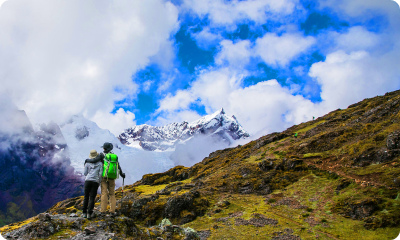
The Alpaca Difference
Alpaca Expeditions is a 100% peruvian, indigenous owned company. Started by Raul Ccolque, a former porter and tour guide, Alpaca Expeditions separates ourselves by our dedication to both our customer and our team. We work very hard to make sure that all our clients needs are taken care of throughout the tour with us. At the same time, we never forget about our brothers and sisters working tirelessly for us to make all of this possible. Responsible and sustainable tourism that gives as much to our community as to our clients.
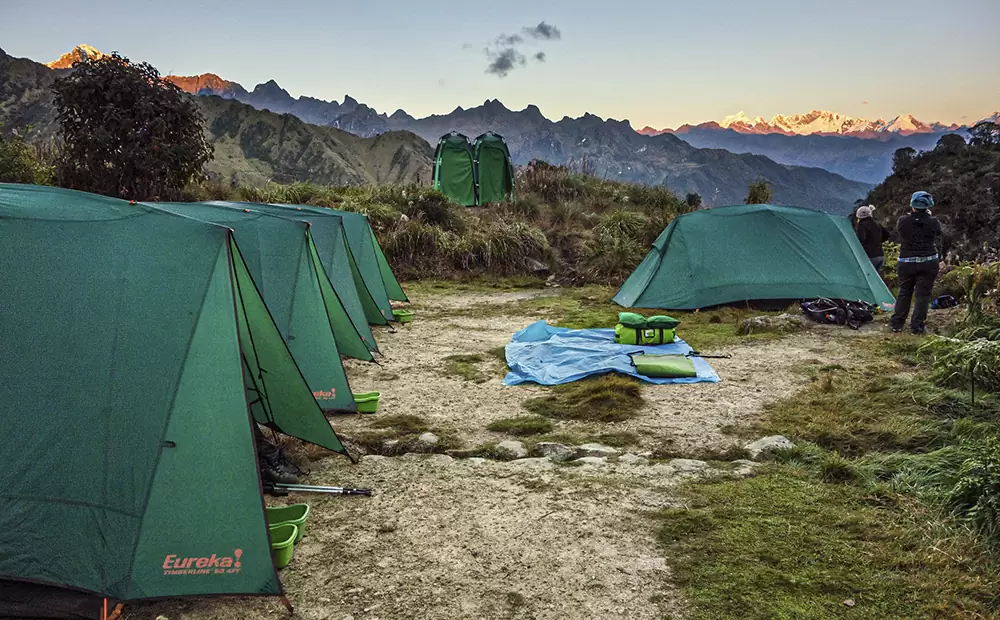
Camping Equipment
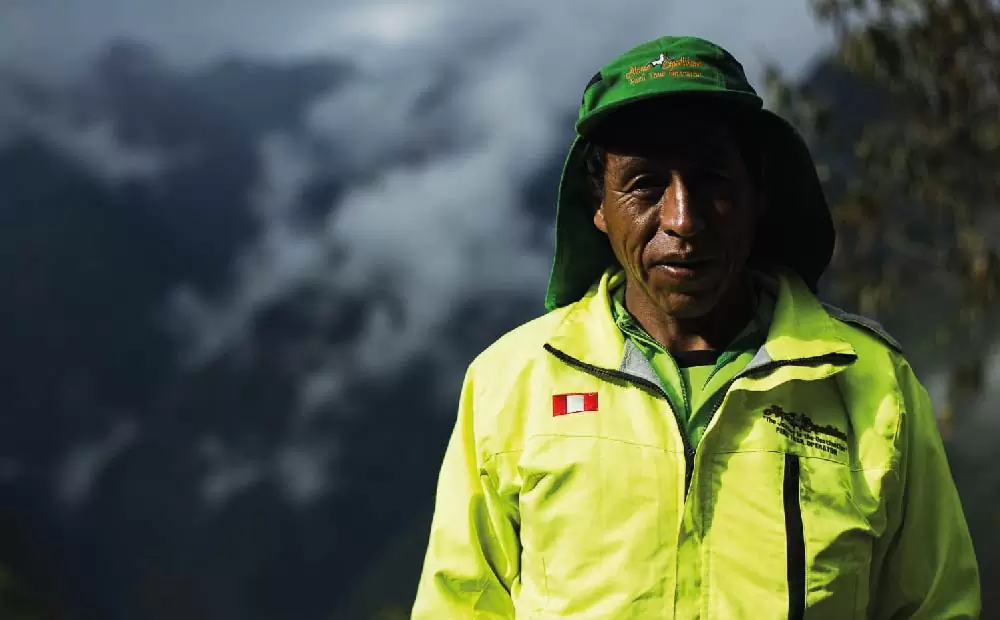
Personal Porters of 7 kg Included
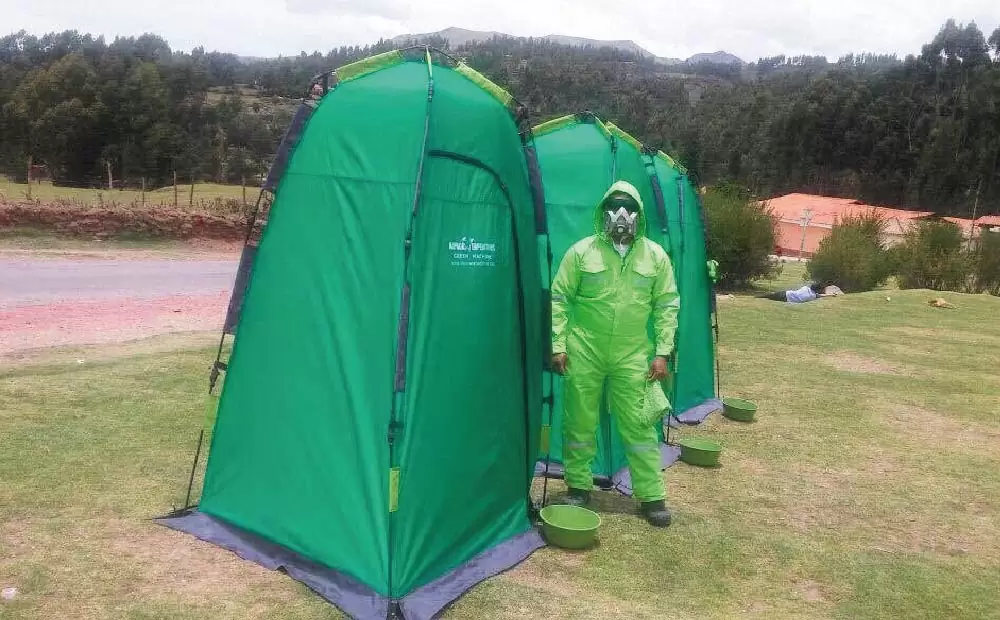
Private Toilet Tents
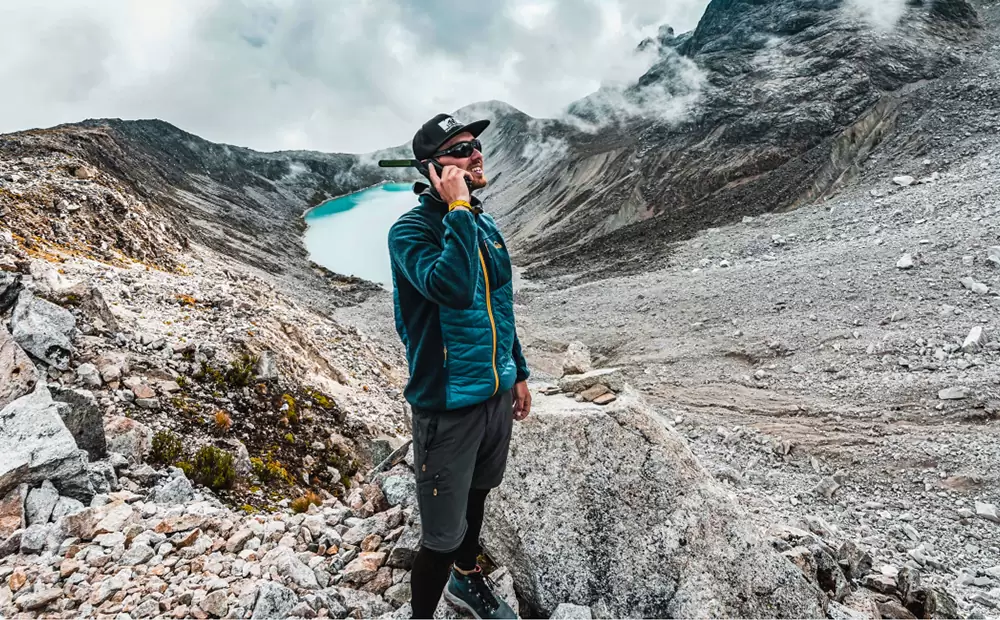
Safety on the Trail Satellite Phones
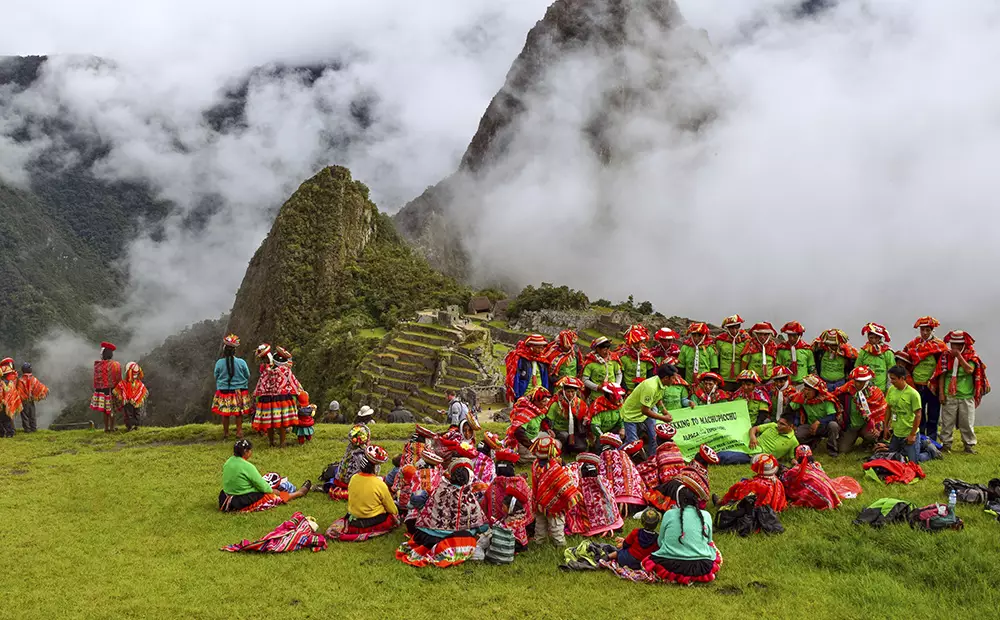
The Best Trekking Food in Peru!
Meet the ae trekking team.
Everyone on the Alpaca Team is from Cusco region, living the traditions and history they share with you while on one of our tours. Our guides are all graduates of university studying tourism, history and english. Our chefs are trained every February by a professional cooking team learning new meals, adding varieties of entrees for all types of eating. And all our porters are from HUARQUI, HUACAHUASI, PATACANCHA, QUISWARANI, CANCHACANCHA, QUEYUPAY, UMACHURCO and CCACCACCOLLO villages, very often working this job on top of maining their farms back at home. Most of our team has been with us for years, as we have the most loyal, hard working, happy employees in Cusco. We know how lucky we are to have the best team trekking and you will immediately fall in love with all the men and women who call Alpaca Expeditions their home.
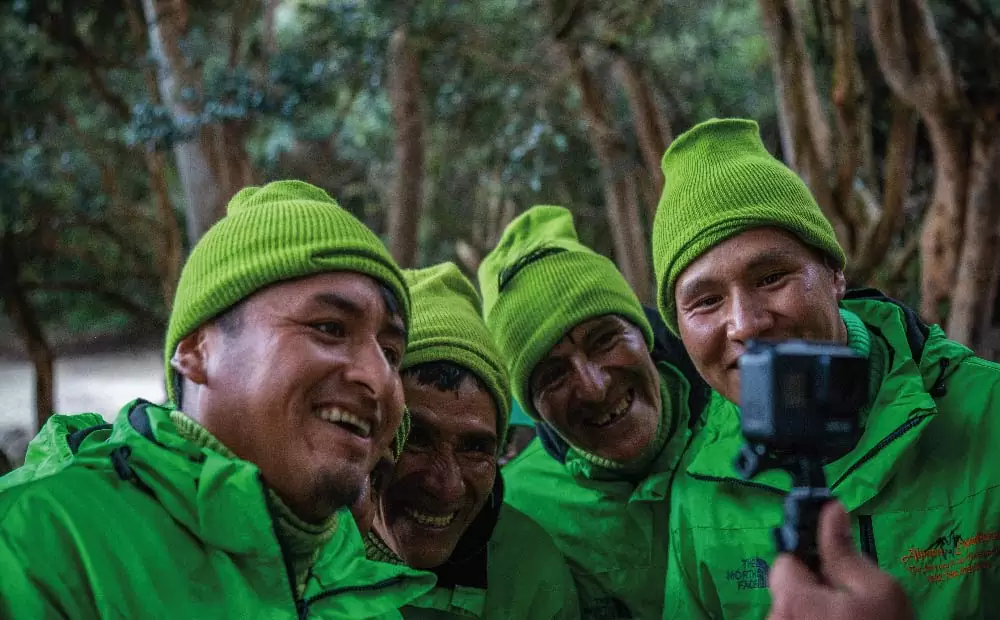
AE súper porters
Our Porters represent the Peruvian people, both men, and women who are at the heart of our...
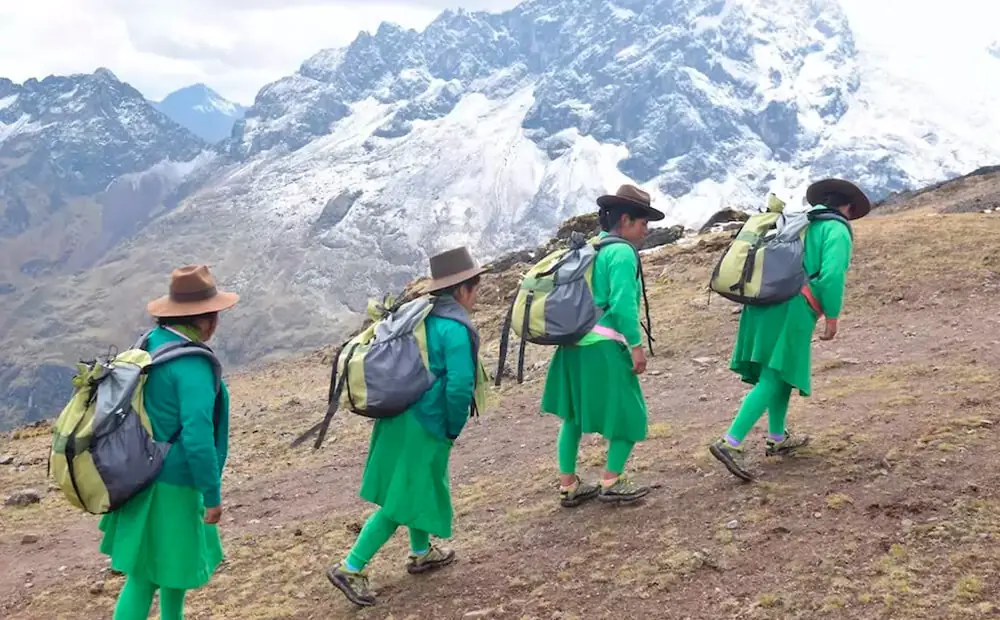
Equality Matters
Alpaca Expeditions aims to promote gender equality and empower women, hiring first Peru Wo...
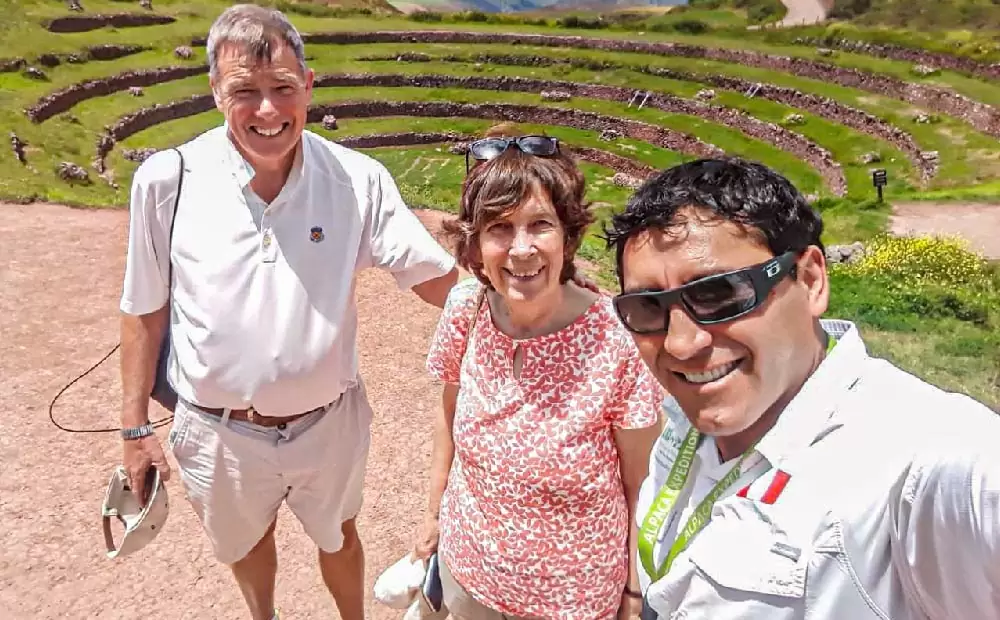
Travelling and trekking along the mountains is one of the best activities in the World. Co...
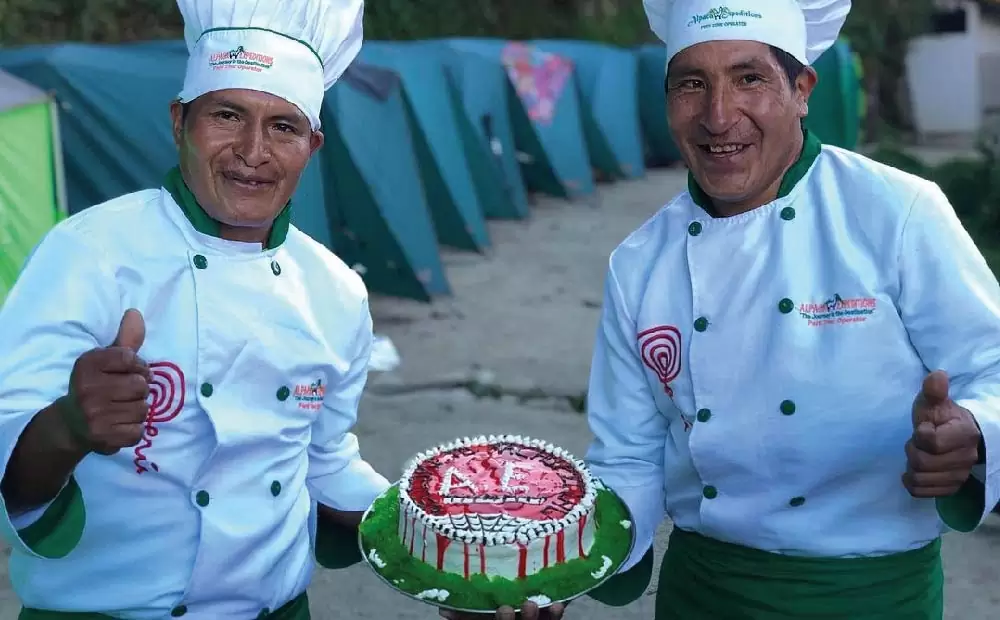
Trekking along the mountain on your way to conquer Machu Picchu is a once in a lifetime ex...
What do we do for our porters?
Alpaca Expeditions would not be where we are today without these hardworking men and women. We could not imagine a harder job and our team does it smiling. We do our best to thank them for their hard work and loyalty by doing as much as we can to make their lives and their families lives better. All our porters receive all their equipment for free from warm winter hats to proper hiking boots. They sleep in proper tents and are given warm sleeping bags for night. They enjoy the same food we serve our clients and all leftovers are donated to their families. We visit their villages with doctors and dentists, donate school supplies and sports equipment. And our favorite time of the year is when we bring a group of porters and their families to Machu Picchu to visit the ruins for the first time.
Our Porters represent the Peruvian people, both men, and women who are at the heart of our company. It is not possible to ...
Alpaca Expeditions aims to promote gender equality and empower women, hiring first Peru Women as Porters opening the door ...
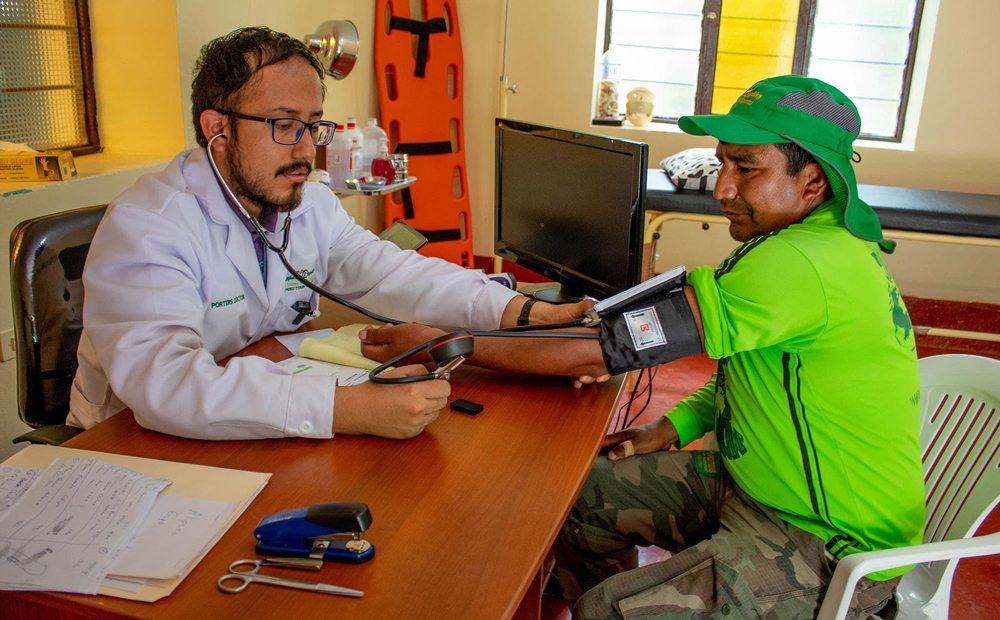
Free Medical Assistance to Porters
In 2019, we hired our first Alpaca Expeditions Medical Doctor to help tend to our guides, drivers, chefs…
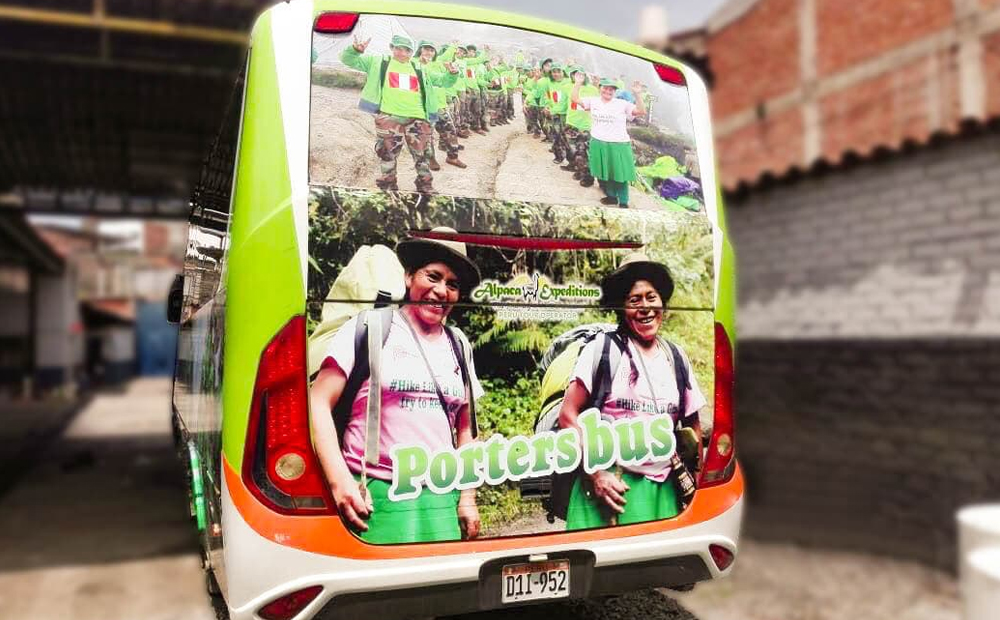
Our Porter’s bus
We treat our porters with the same dignity and respect as we do our clients. Just as our clients enjoy our…
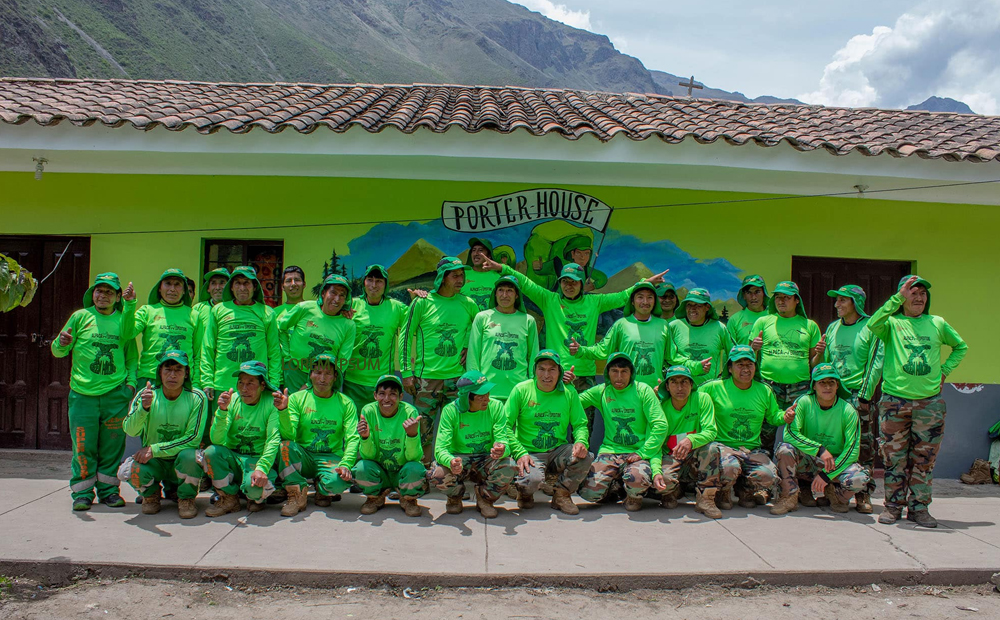
Our Porter’s House
As we mentioned above, our Porters like many Peruvian people come from distant villages to work our treks…
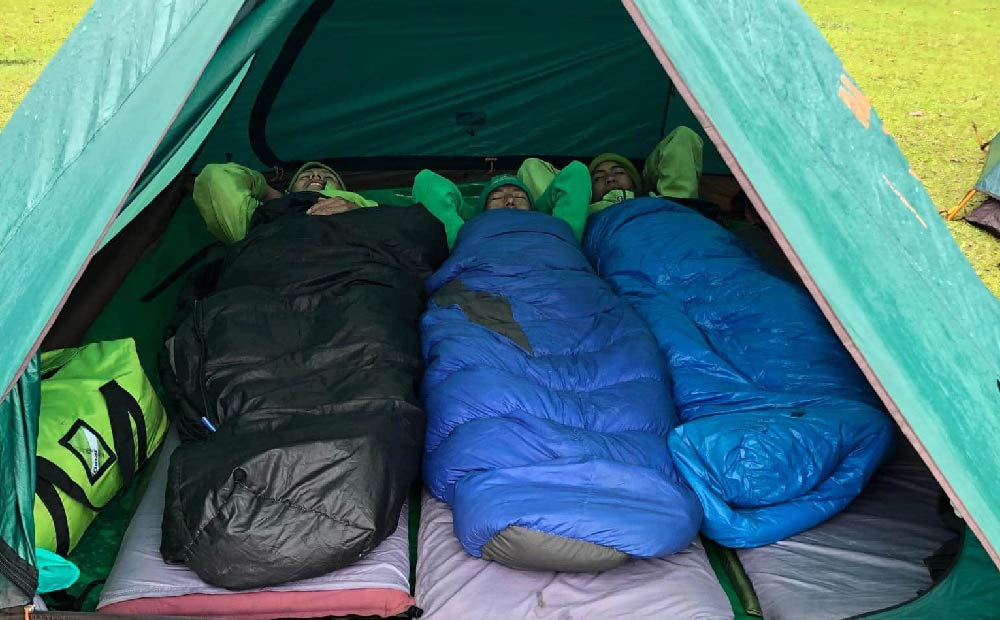
Tents and Sleeping bags
Again, this is something unique that Alpaca Expeditions provides, and sad others are not doing. We supply…
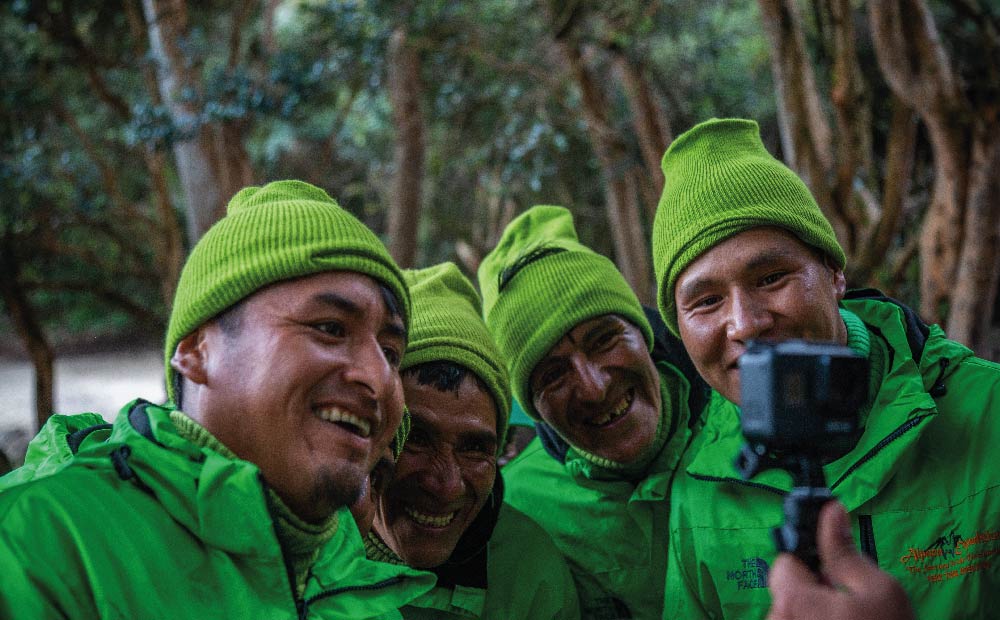
Proper Equipment for our Porters
Every porter of ours receives proper equipment. That includes moisture-wicking long/short sleeve shirts…
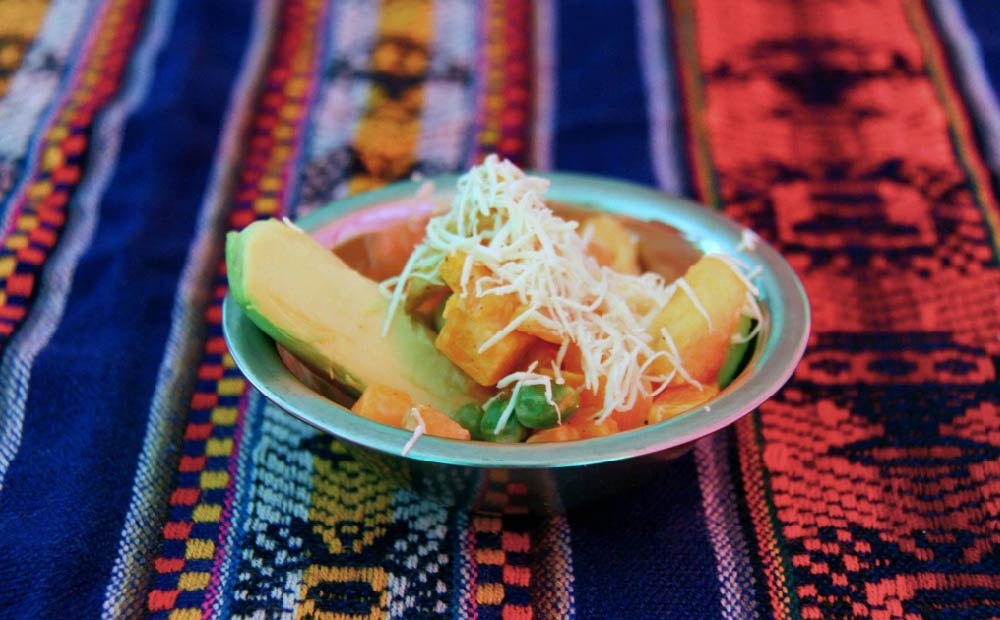
Nutritious Meals for our Porters
A general comment from trekkers on an Alpaca Expeditions tour is that we serve too much food. Well…
Videos of our Porters
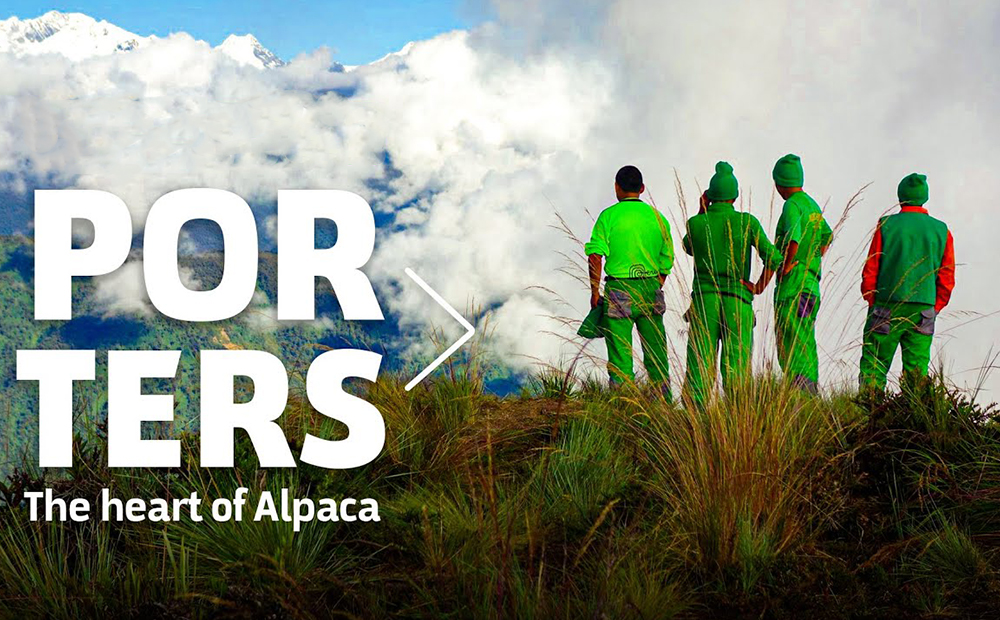
Extra information
Alpaca Expeditions is always ready to make your trip safe and as easy as possible for you. Because these trips are a bit more complicated than your typical tour, we have put together some notes on logistics, storage, and even recommendations on where to stay in Cusco. And of course our team is ready to answer any other question, as we promise to be your partner from the moment you first contact us to our last goodbye in Cusco.
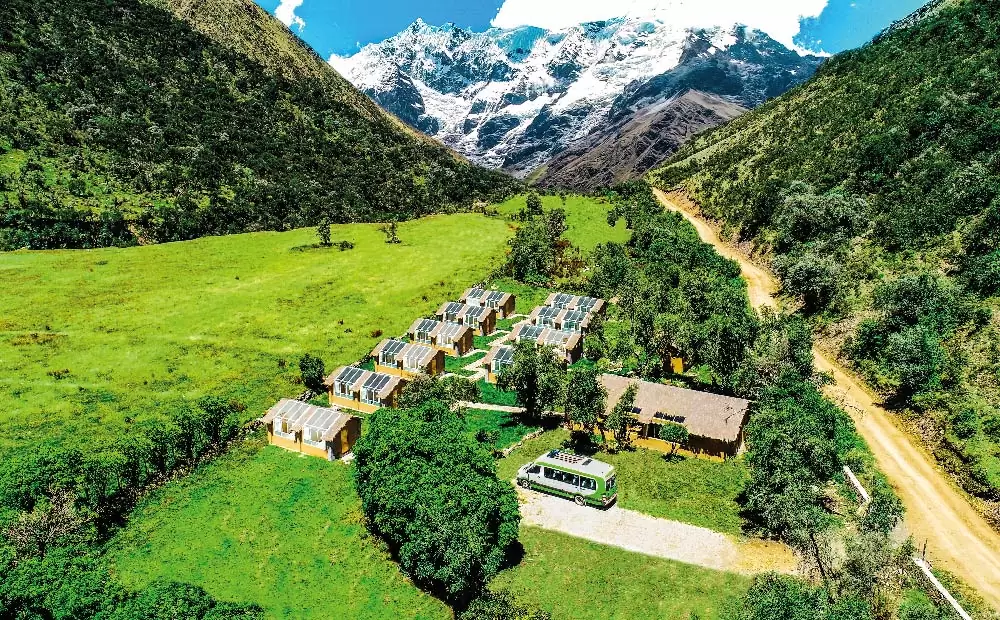
Sustainable Tourism
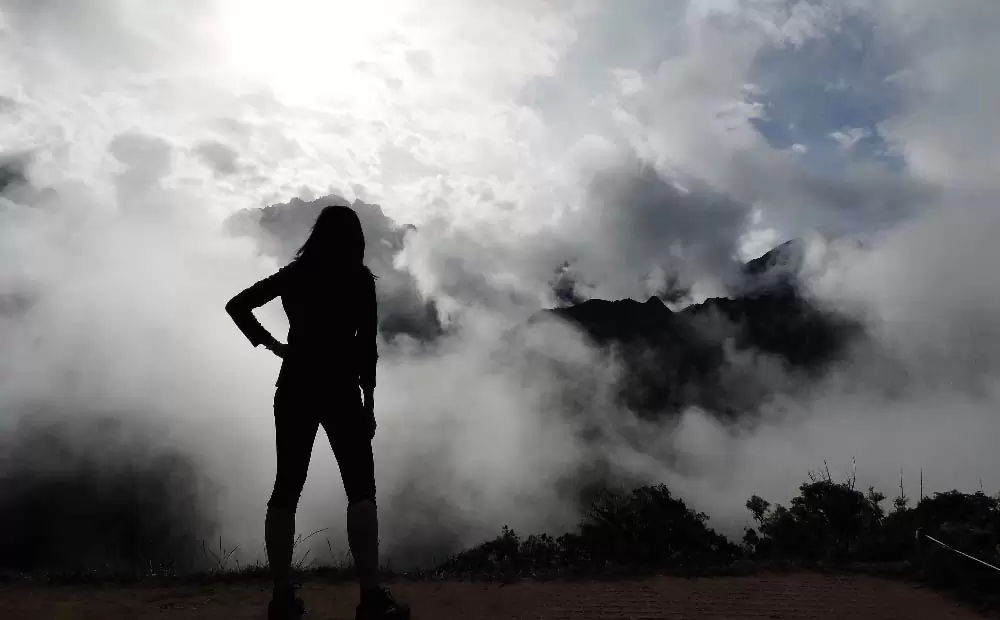
Leave your bags with us
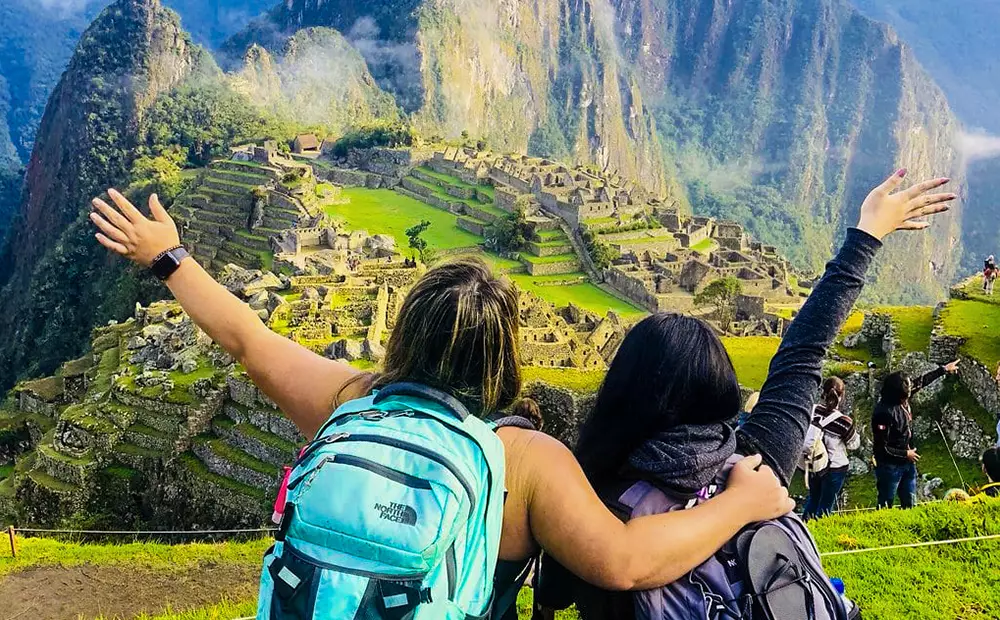
Trek Packing List
Similar tours that you may like.
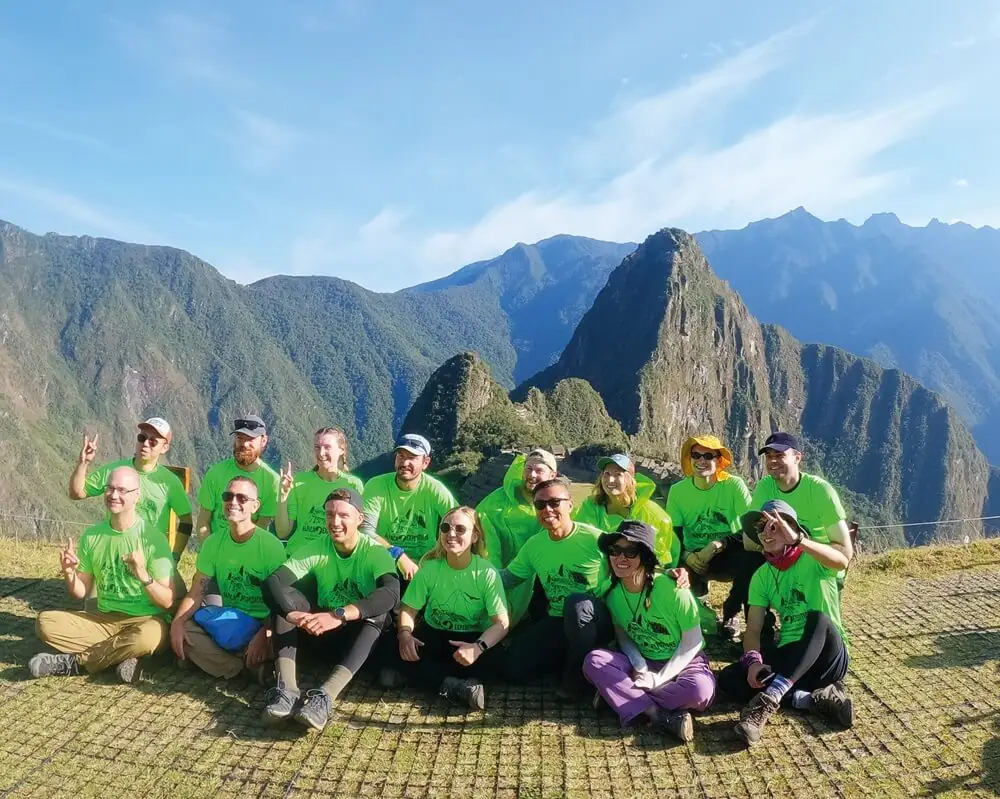
Sacred Valley & Classic Inca Trail to Machu Picchu 7D/6N
This is the ultimate package meticulously crafted to offer one of the most exceptional experiences when visiting Cusco and Machu Picchu. Exploring the
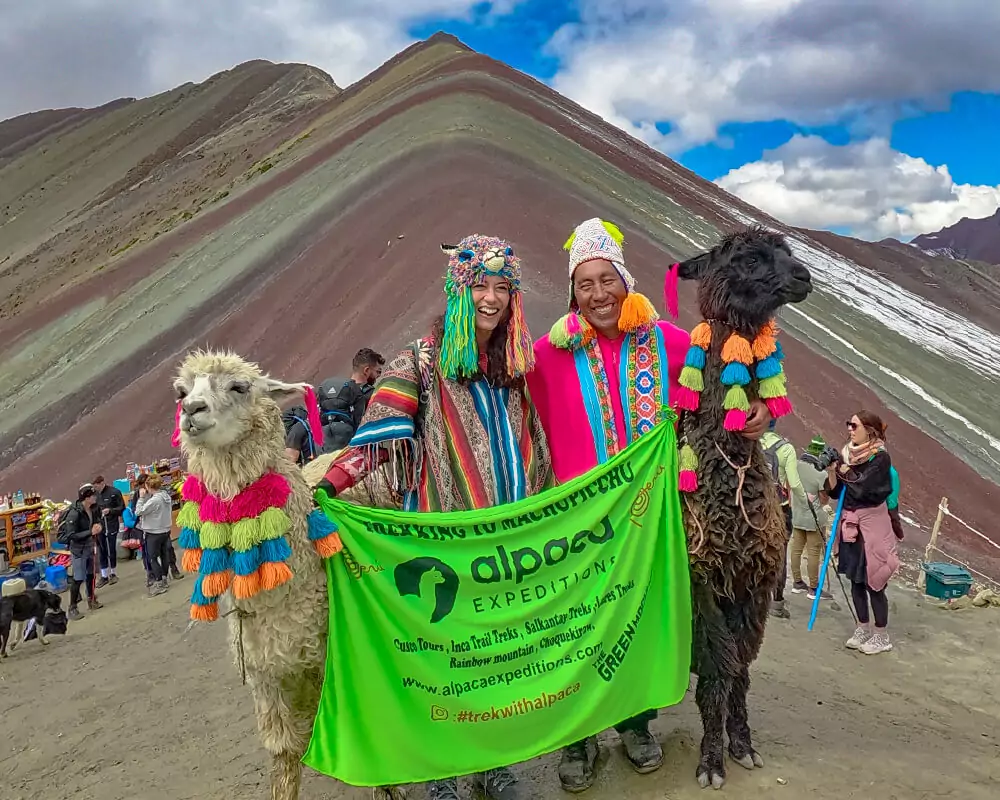
Inca Trail Hike 4D/3N & Rainbow Mountain + Red Valley 1 Day
Trip Overview Tour Type: Hiking, camping, adventure, history, culture. Total Distance: 50KM/31 Miles. Good For: Those who enjoy hiking and have a mode
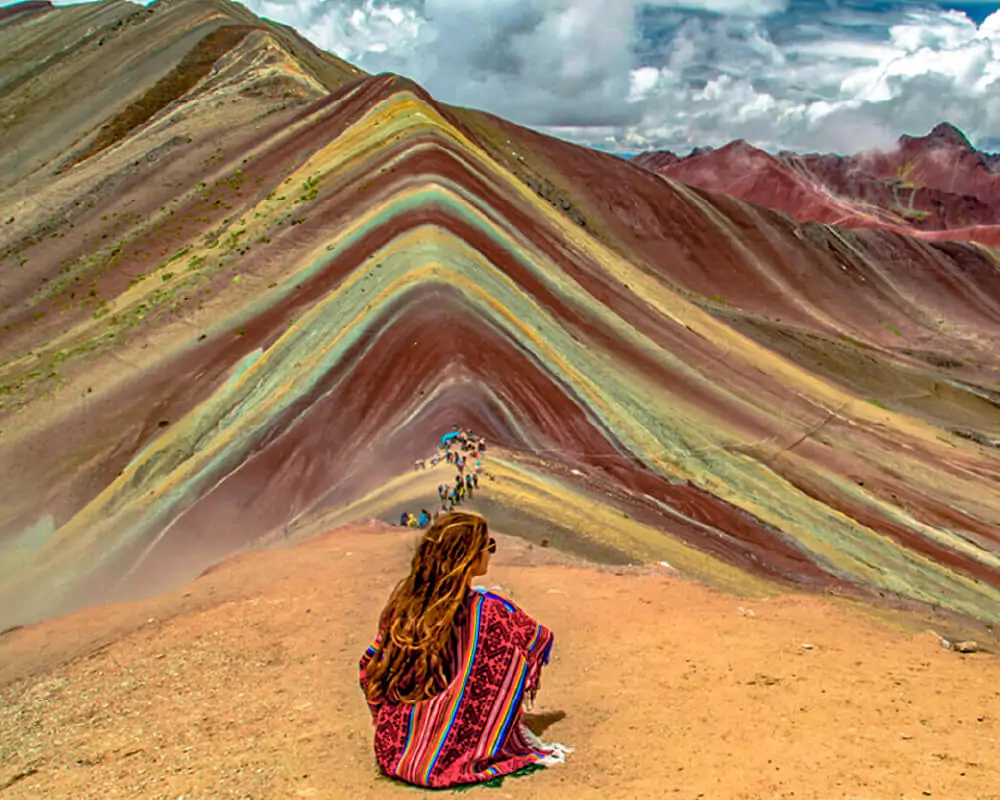
Inca Trail Hike 2D/1N & Rainbow Mountain + Red Valley 1 Day
Trip Overview Tour Type: Trekking/Hiking, cultural, adventurous Good For: Those in moderate shape, families. Difficulty: Moderate. It’s not a te
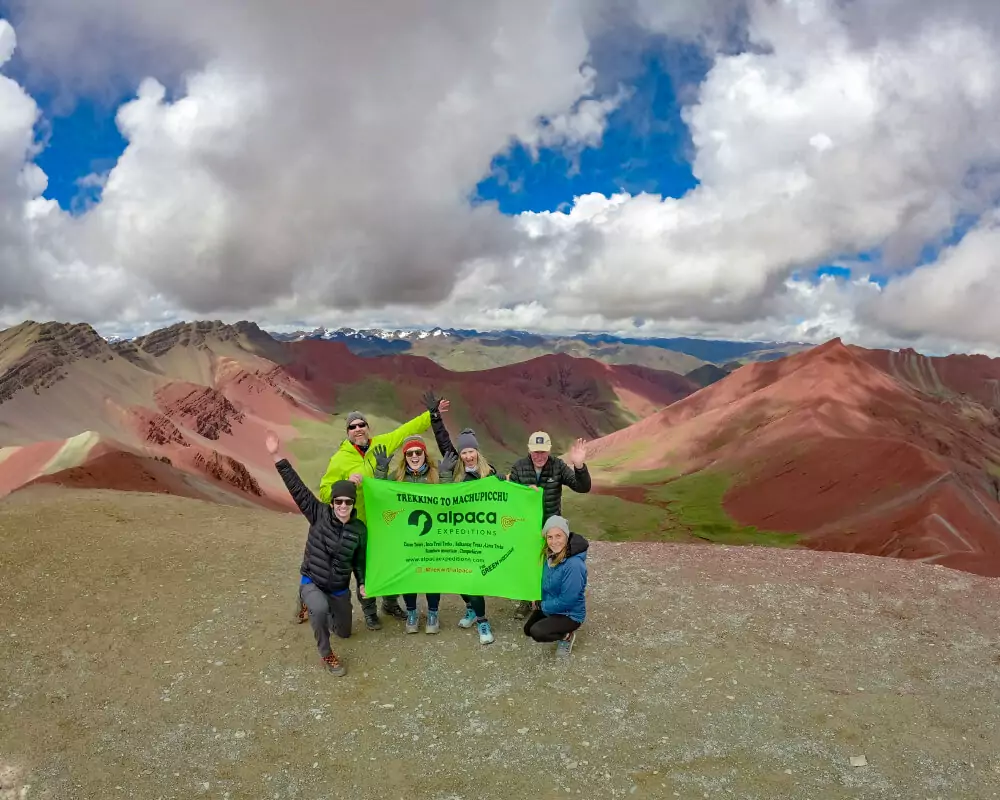
Sacred Valley Tour 1 Day & Inca Trail 2D/1N & Rainbow Mountain + Red Valley 1 Day
Trip Overview Tour Location: Sacred Valley, Inca Trail, Rainbow Mountain, Red Valley. Tour Type: Trekking/Hiking, cultural, adventurous Good For: Thos
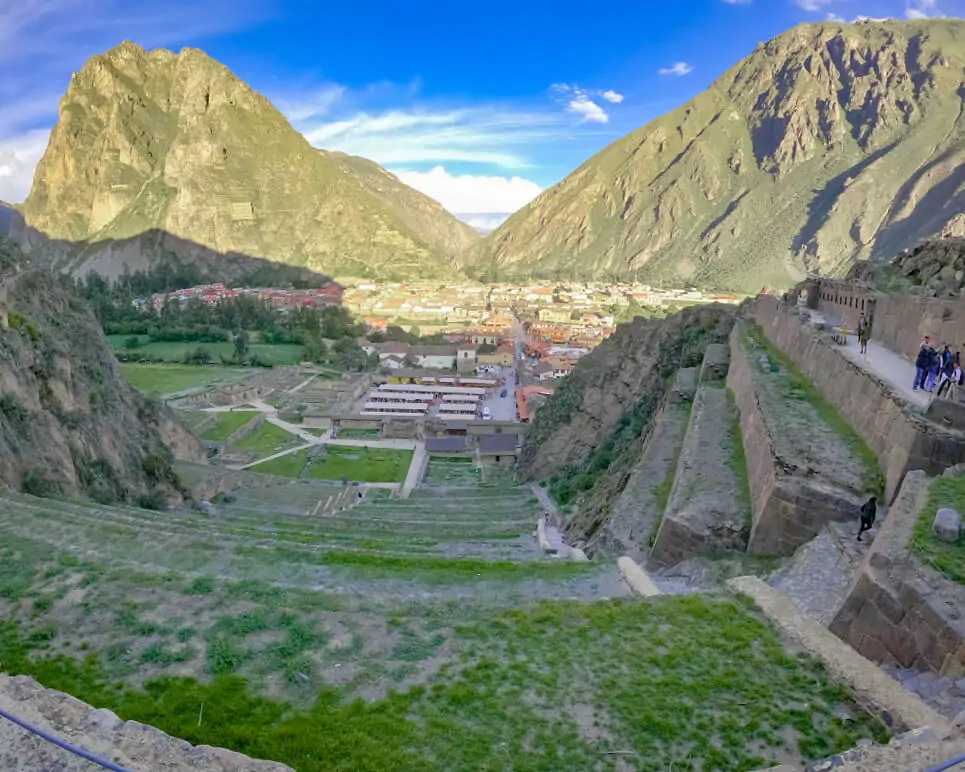
Sacred Valley Tour 1 Day & Inca Trail Hike 2D/1N
Trip Overview Tour Location: Sacred Valley, Inca Trail. Tour Type: Trekking/Hiking, cultural, adventurous Good For: Those in moderate shape, families.
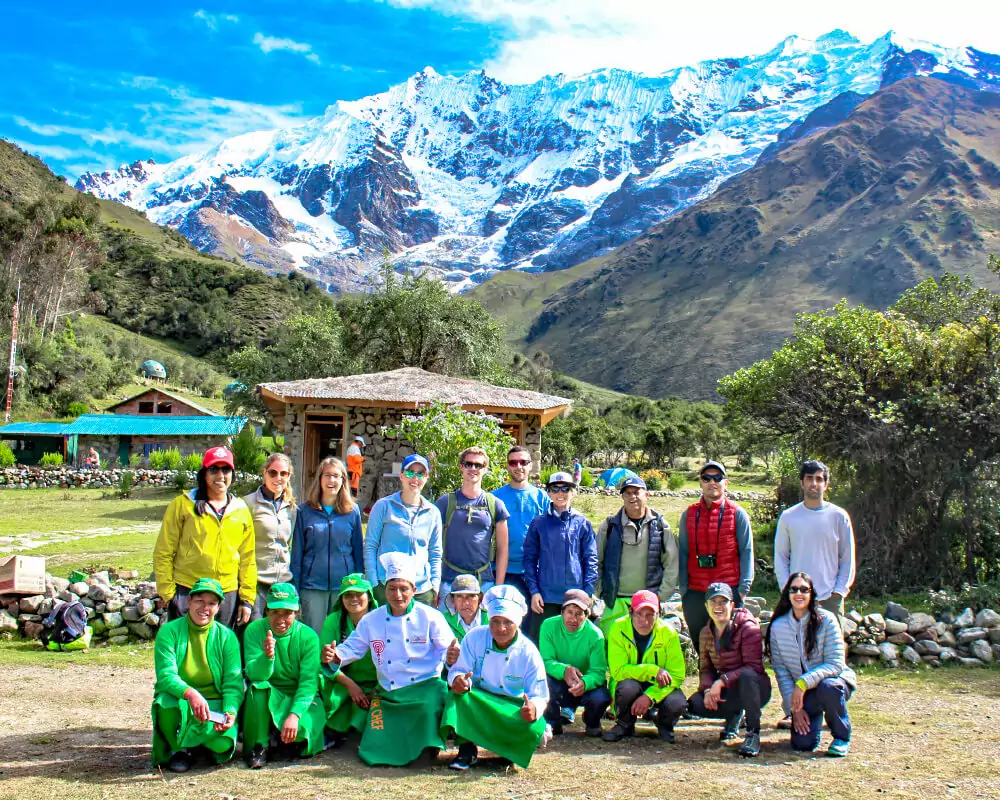
Salkantay Trek + Inca Trail 7D/6N
Salkantay Tour | For those looking to combine the best of our two most popular treks, this is for you. The Inca Trail or Salkantay Tour are a lot to t
Alpaca Expeditions Recognitions
Iso (international organization for standardization).
In the pursuit to stand out from the rest, Alpaca Expeditions has obtained four ISOs plus our carbon footprint certificate to date. These achievements result from our efforts to implement the internationally-recognized integrated management system. They also represent our commitment to all of our clients and staff of operating sustainability and responsibility in every way possible.

World Travel Awards
Alpaca Expeditions is internationally recognized as a leading tourism company in Peru. As proof, we have been awarded the World Travel Award for Peru´s Best Tour Operator 2021 for the second time.
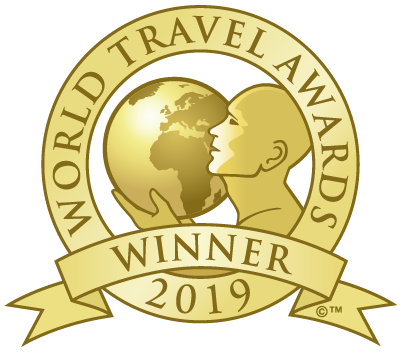
TRIPADVISOR RECOGNITIONS
Our goal at Alpaca Expeditions is to create the best experience for all of our clients. We create journeys that are to be remembered for a lifetime. Journeys you can be proud of and can share with everybody around you.
As Featured In

Connect with Us on Social Media to Discover More
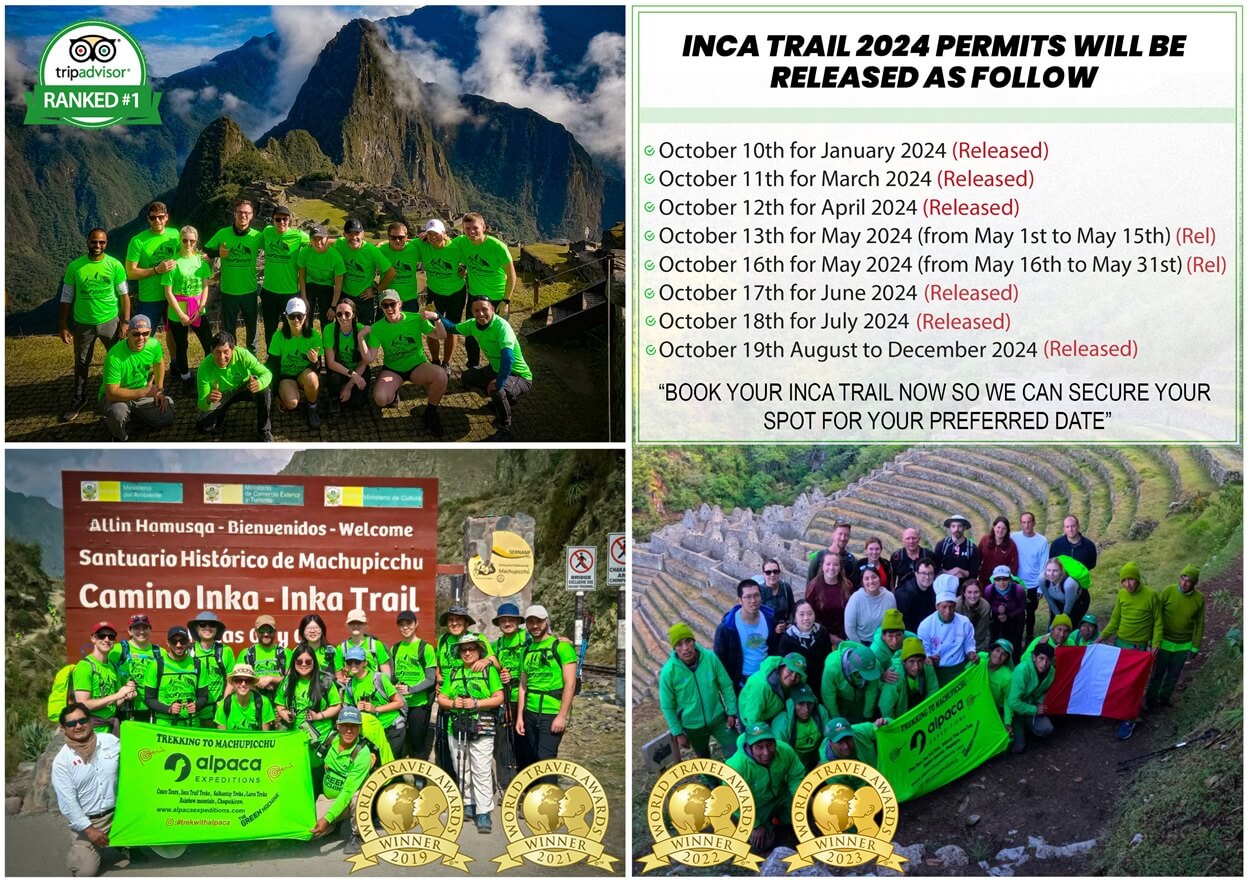
Hotel to Hotel service
Regarding the transportation provided by Alpaca Expeditions, we are committed to delivering a quality service. We strive to ensure that passengers feel supported throughout their journey. To achieve this, we coordinate closely with our guides and representatives to ensure timely pick-up at the start of their tours. Additionally, we have representatives responsible for escorting our passengers to their hotels at the conclusion of any tour.
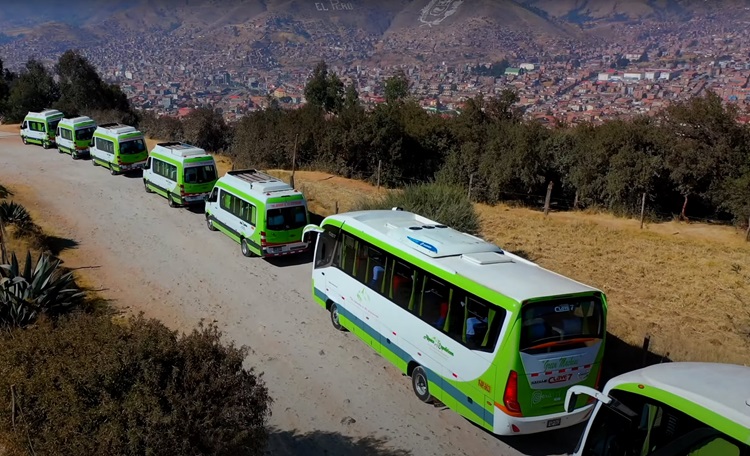
Our drivers are not only trained in customer service but also come properly uniformed, and many are fluent in English.
Typically, all transportation types are included in each of our services. For instance, if you have booked a trekking tour, we will pick you up early, typically between 4 AM and 5 AM. When visiting Cusco, it's important to note that traffic here is generally moderate. However, there are peak traffic times, such as between 7 AM and 8 AM, which coincide with school hours, and in the evening between 6:00 PM and 8:00 PM. Therefore, if you have a flight during these times, it's crucial to be at the airport at least 2 hours in advance. The drivers of Alpaca Expeditions ensure their vehicles are prepared with all necessities before each service. They are acutely aware that delays can lead to missed trains, flights, or other connections. Consequently, they are always more than punctual, arriving at least 10 minutes before the scheduled time for any service, understanding the responsibility they carry in executing these tasks.
Personal Porter of 7KG
Remember that Alpaca Expeditions offers an extra 7 kg allowance for your personal belongings on any of our tours. We include a personal porter who is responsible for carrying your duffel bag without any additional fee. You will not have access to your duffel bag until you reach your evening campsite. The bag should not exceed 7 kg, which includes 4 kg for clothes and 3 kg for your sleeping bag and sleeping mat.
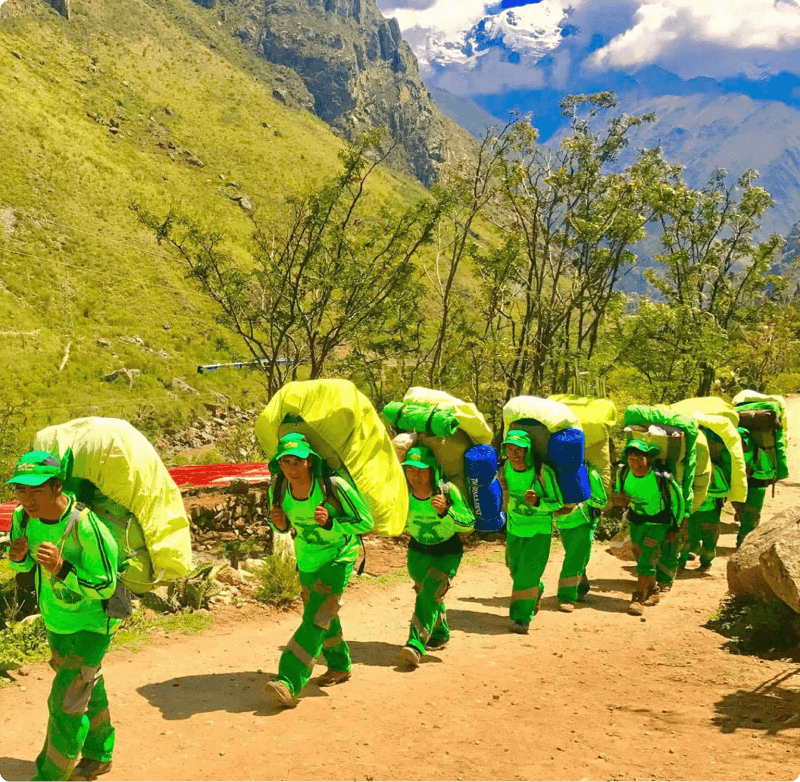
Each Alpaca Expeditions porter is paid directly after each trek, allowing them to return home more quickly. They receive better wages than our competitors, health insurance, and all their equipment free of charge, including hiking boots, pants, jerseys, fleeces, jackets, hats, flashlights, sleeping bags, and high-quality food. We ensure each of our porters has a comfortable bed in a pleasant room to sleep in before and after each trek. We also visit the communities they live in, providing toothpaste, toothbrushes, soap, and other necessary supplies to their families, along with books for their children.
This is just the beginning for us, and we are always looking for ways to do more. While the government allows each porter to carry up to 25 kg, we limit this to 20 kg to prioritize their health and safety. Each porter carries up to 15 kg of company equipment and 5 kg of personal items. This is why it is crucial to keep your personal duffel bag weight under our 7 kg limit. You might see other companies allowing their porters to carry more than the allotted weight, but at Alpaca Expeditions, we strictly adhere to these limits to ensure our porters' well-being.
Clases de Cocina
Alpaca Expeditions offers its passengers the chance to experience local cooking. We aim to immerse trekkers in Inca life by walking them through the original Inca paths and teaching them about Inca culture. Food is a significant part of Inca life, making it a special element in any tour or trek with Alpaca Expeditions.
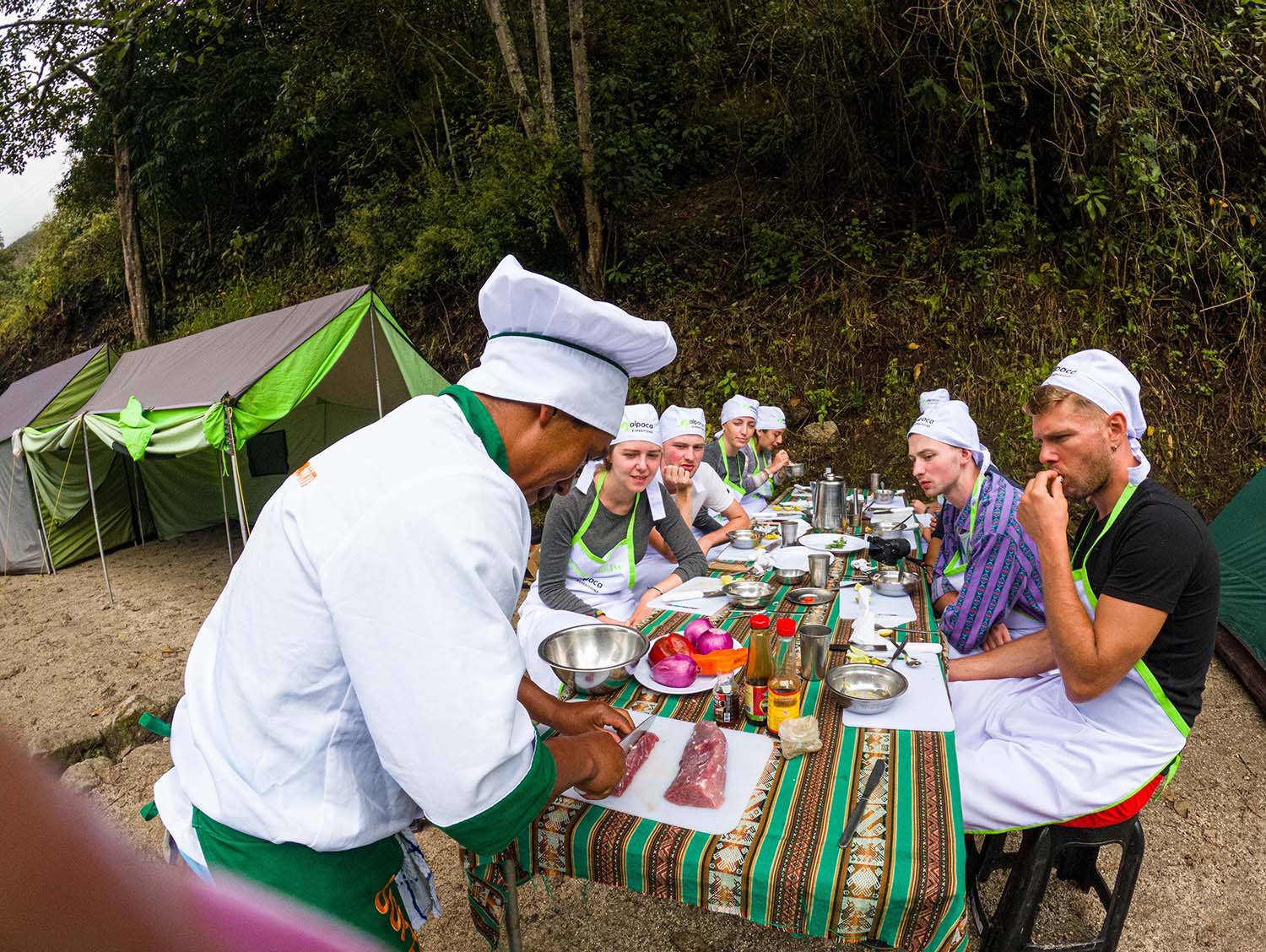
In 2022, Alpaca Expeditions introduced a cooking class as part of each of our treks, conducted by our amazing trekking chefs and interpreted by our guides.
We will transform your dining tent into a makeshift kitchen, providing all the necessary supplies to prepare a Peruvian specialty. Your chef will guide you step by step through the process of making a traditional Peruvian meal, such as Lomo Saltado, and share some essential mountain cooking tips.
Peru is recognized as a top culinary destination, largely thanks to the popularity of our renowned beef dish, Lomo Saltado. This is most often the meal you will learn to cook, but there is also the opportunity to learn how to prepare other dishes like traditional Peruvian ceviche or even our signature drink, the pisco sour.
Cooking Class on the Inca Trail: These classes are voluntary and designed to be a fun, educational experience. Our clients consistently marvel at the amazing ability of our chefs to create culinary magic on a mountaintop. As you learn to prepare and cook Peruvian specialties, you will also see firsthand how such elaborate meals can be created on a small campsite stove.
Enjoy a cooking class in the mountains and be sure to take plenty of photos, just in case your friends won't believe your incredible experience.
Satellite Phones
The best way to hike in the mountains of Peru is to completely disconnect from technology, especially the internet and cell phones. The most impressive and exciting aspect is the opportunity to experience the true and wonderful nature that we often miss when we are at home, watching TV or absorbed in our cell phones during our leisure time. The feeling of being disconnected from work and the daily routine left at home is incredible.
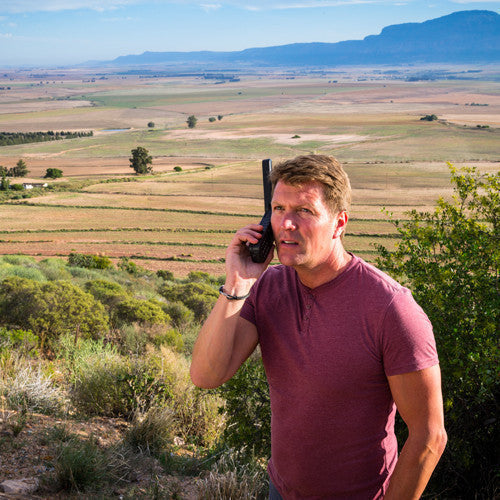
However, this remoteness means limited access to emergency resources. That's why Alpaca Expeditions has invested in satellite phones for every trek.
We are prepared to assist you in case of any emergency, particularly health-related issues. For this reason, Alpaca Expeditions has invested in satellite phones, as they are one of the most crucial tools for any operator trekking in remote areas where telephone or television signals are absent. This means that every guide on our treks will be equipped with a fully charged satellite phone as well as radios. While these are primarily for emergencies, we allow our clients to use them at any time.
We ask that you cover the cost, which is $2.50 per minute. This fee can be paid in cash at our office or via PayPal once you have completed the trek.
Being just a phone call away from any doctor, hospital, or friend helps everyone feel assured of their safety. Radios, which all our guides carry, have limited reach, so Alpaca Expeditions includes satellite phones to ensure that we can connect no matter where we are on the mountain.
Portable private toilet
We understand that our clients will need restroom facilities at various times and locations during their journey. Along the Inca Trail, there are restrooms available, particularly those belonging to the communities near the trail. Alpaca Expeditions provides portable toilets to enhance this service, which will be set up at each meal site or campsite.
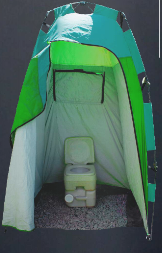
As with any mountain trip where we are exposed to nature, it is possible to use natural areas as restrooms. However, it is crucial to be mindful of the waste we generate, such as toilet paper or wet wipes used for cleaning. These should be carried with us and not discarded on the ground or left along the trail. Remember, the Inca Trail is a protected area overseen by a government institution. In places where garbage bins are unavailable, particularly at our camps, we provide special plastic bags for waste. Our porter team will be responsible for carrying out our waste.
Please be aware that although there are designated bathrooms for men and women, in practice, both genders often use the same facilities. Functionally, there is no significant difference between men's and women's bathrooms. Therefore, it is common for people of all genders to use whichever bathroom is available.

Destinations
Trekking type, lares trek peru - the best alternative to machu picchu, by rintsje bosch.
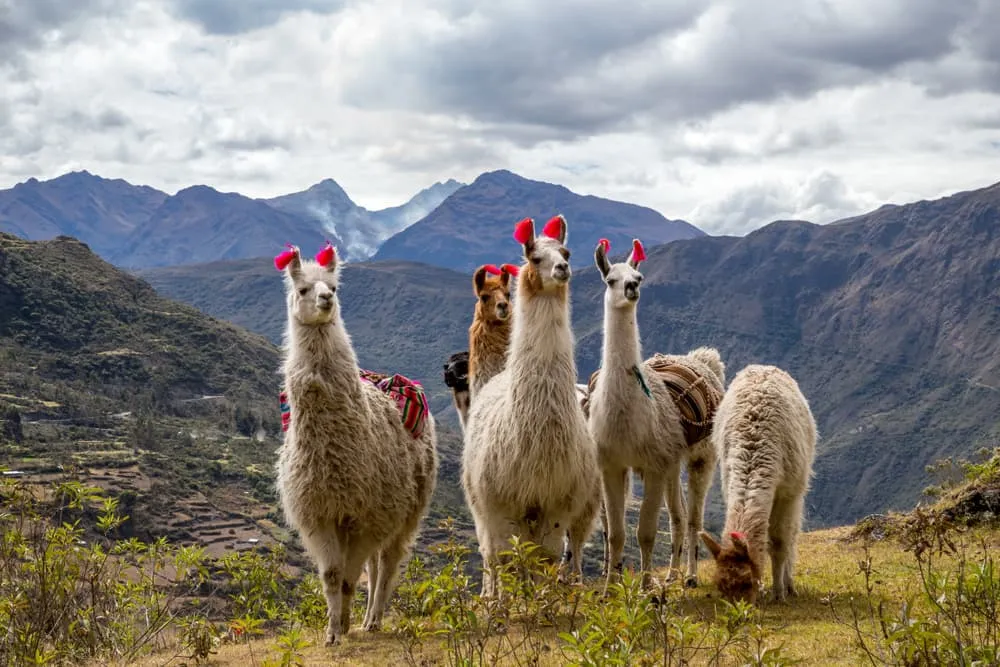
You want to do the Lares Trek in Peru. Why else would you be here? You’ve done all the research about the Inca Trail and Machu Picchu. You’ve found out the permit situation is real or you just know that the Lares Trek is better than all the other treks to Machu Picchu. Good on you! You are right. The Lares Trail will deliver. Nature, history, the altitude, remoteness, no crowds and the beautiful Quechua culture on and next to the trails. Are you hearing Machu Picchu calling? Choose the Lares Trek.
Most people end up choosing the Lares Trek because they started researching their dream destination Machu Picchu, ended up at the Classic Inca Trail and then found out there are no more permits available for their dream dates. If Machu Picchu is the goal and you realize the Incas built trails all over the place, you will understand that the alternative Inca Trails are maybe not so alternative at all. They served a purpose, just as that famous Inca Trail did.
See what we did there? It doesn’t really matter which trek to Machu Picchu you choose. But what does matter, is that if you have to compare all the treks, the Lares Trek will likely become your favorite.
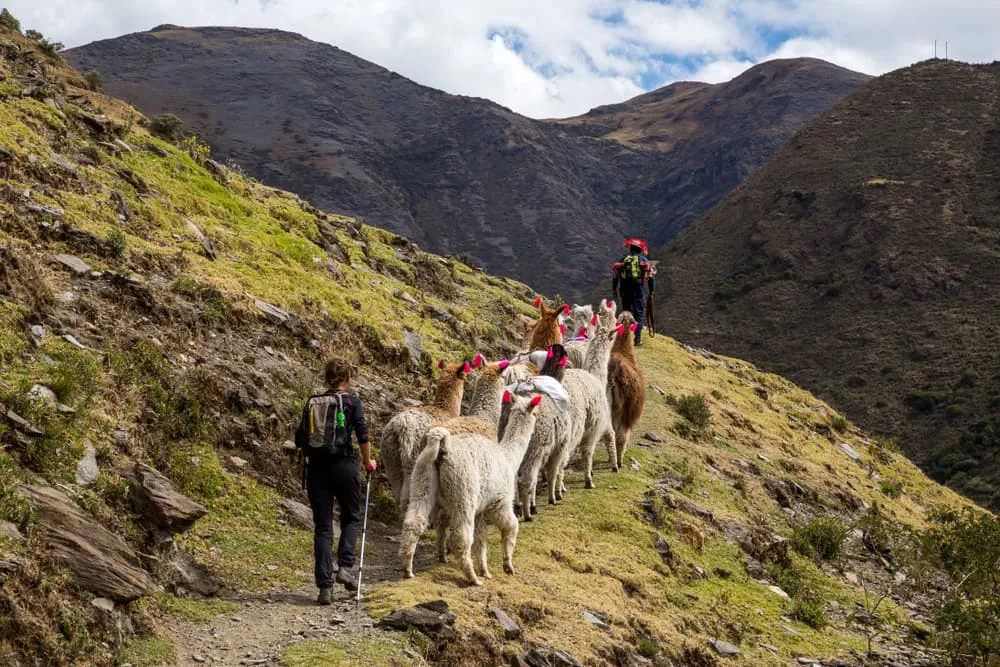
What Is The Lares Trek?
Lares trek vs inca trail - why the lares trail, best season for the lares trail, costs of the lares trek and machu picchu, lares trek peru itinerary, how high is the condor pass, lares trek altitude - how high is the lares trek, packing list for the lares trek, how to get fit for the lares trek, where to book the lares trek.
The Lares Trek is one of many Inca Trail options leading to Machu Picchu. The trail, however, doesn’t stop at Machu Picchu, but every Lares Trek includes some transport from Huaran to Ollantaytambo and from there you take a train to Aguas Calientes. Although you can do the trek in 5 days, most people choose to do it in 4 days. Of those 4 days, you are effectively only trekking for 3 days. The 4th day is spent in Machu Picchu, the Lost City of the Incas. In terms of the actual route itinerary, there are in fact a number of variations on the Lares Trek, most finish at Ollantaytambo.
The Lares Trek isn’t just an alternative for an overbooked Classic Inca Trail. The Lares Trek has a lot to offer for people who are looking for a combination of nature, history and local culture. Treks depart in Cusco and take you to the Lares Hot Springs. Before you actually get to tie your laces and get ready for the trek, you will relax your muscles in the thermal bath. After having enjoyed the warm water, you still want to take it easy and thus the first day you only trek for about two hours.
From the village of Quiswarani (Sometimes also Wacawasi) the trek continues via the 4300 meter high Condor Pass to the Canchachanca community. This is where the Lares Trek sets itself apart from other treks in the Cusco Region. Chances are you will be interacting with local Quechua people a lot. The last bit to Huaran or Pumamarka is the crown on the trek. Here you slowly get yourself ready for your personal discovery of the cherry of the cake Machu Picchu.

Ultimate Lares Trek

Classic Lares Trek
The Lares Trek is dubbed the Ultimate Cultural Trek. On the Lares Trek, you don’t just get to experience the thrill of hiking a part of the Inca Trail system, you actually get to meet the descendants of those people who built the Inca Trails and Machu Picchu. It gives your Inca Trail experience so much more color and it also adds context to your visit to Machu Picchu.
Another drawcard for the Lares Trek is the fact that you don’t need any trekking permits. You just need a ticket for Machu Picchu, but this isn’t as much of a hassle as the permits for the Classic Inca Trail. All trekking packages for the Lares Trek include tickets for Machu Picchu.
The Lares Trek is also considered to be easier than most of the other treks on the Inca Trail system. Compared to the Classic Inca Trail, for example, there are a lot fewer steps and this makes for a more gentle trekking experience.
On top of all of that, the Lares Trek is simply a lot quieter. Fewer numbers of people on the trails make this trek the calm way to get to Machu Picchu. On the Lares Trek, you can experience the Andean for yourself.
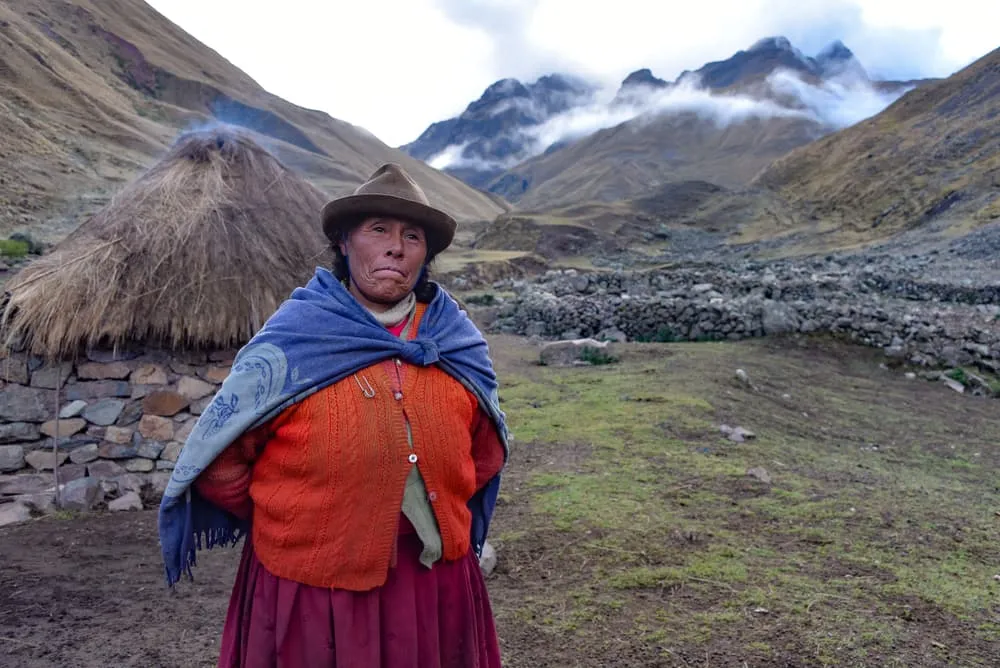
The best time to hike the Peruvian Andes is from April to October when the weather is relatively warm. In the months of June, July and August the nights are cold and a four season sleeping bag is recommended. The rainy season lasts from November to March, with February as the highlight. In this month the Inca Trail is closed for maintenance. Rainy season or not, prepare for sun and rain. The mountains make the weather pattern unpredictable.
Dry season (April – October)
Day: 20’C – 25’C / 68’F – 77’F
Night: -1 – 7’C / 30’F – 45’F
Rainy season (November – March)
Day: 17’C – 22’C / 62’F – 71.6’F
Night: 4’C – 7’C / 39’F – 45’F
A typical Lares Trek can be done in 4 or 5 days. The number of days depends the price of the trek. Prices vary between 500 and 700 EUR or USD per person. This always includes accommodation, transfers, food, and entry to Machu Picchu, the Lost City of the Inca. Here you can find different offers for the Lares Trek .
There are a few different ways to the Lares Trek. There is the Lares Trek via Wacacasi and Pumamarka and then there is the way via Canchacancha. The latter is one of the best sellers at Bookatrekking.com and it is a route we can highly recommend. Below you can find an outline of a standard 4-day itinerary for the Lares Trek. This itinerary is based on the Lares Trek as offered by Trexperience .
Cusco – Lares Thermal Baths – Kiswarani Falls
Kiswarani waterfall campsite.
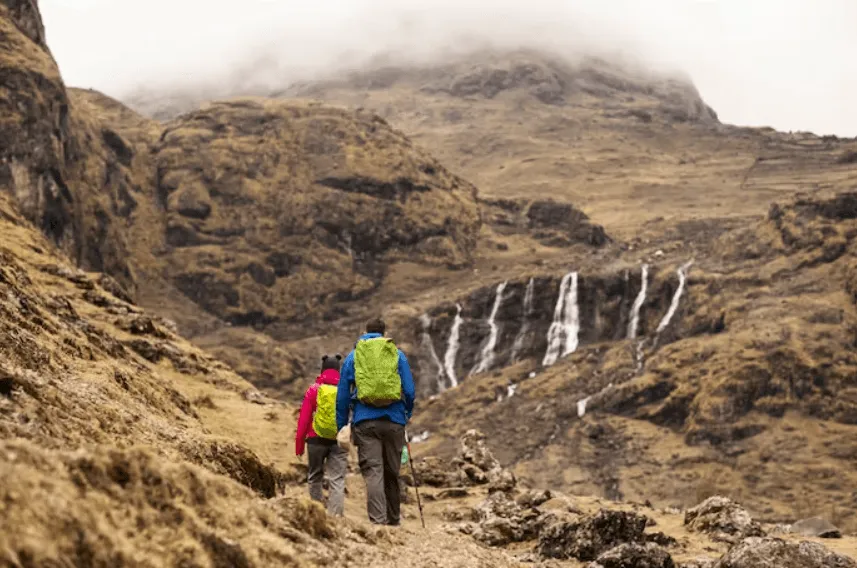
Kiswarani Falls – Condor Pass – Cancha Cancha Village
Cancha cancha village.
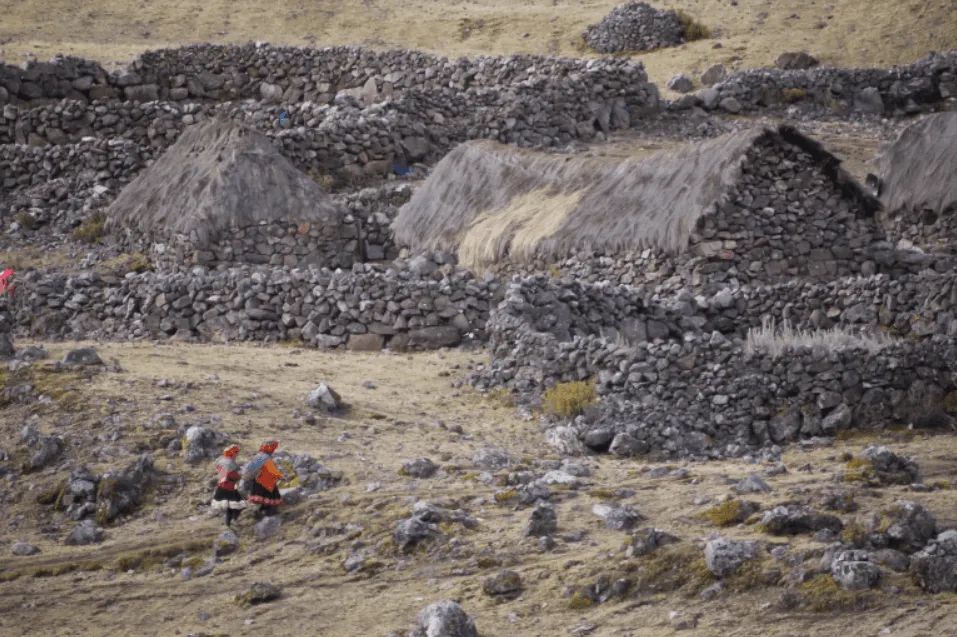
Cancha Cancha Village – Huaran – Ollantaytambo - Aguas Calientes
Aguas calientes.
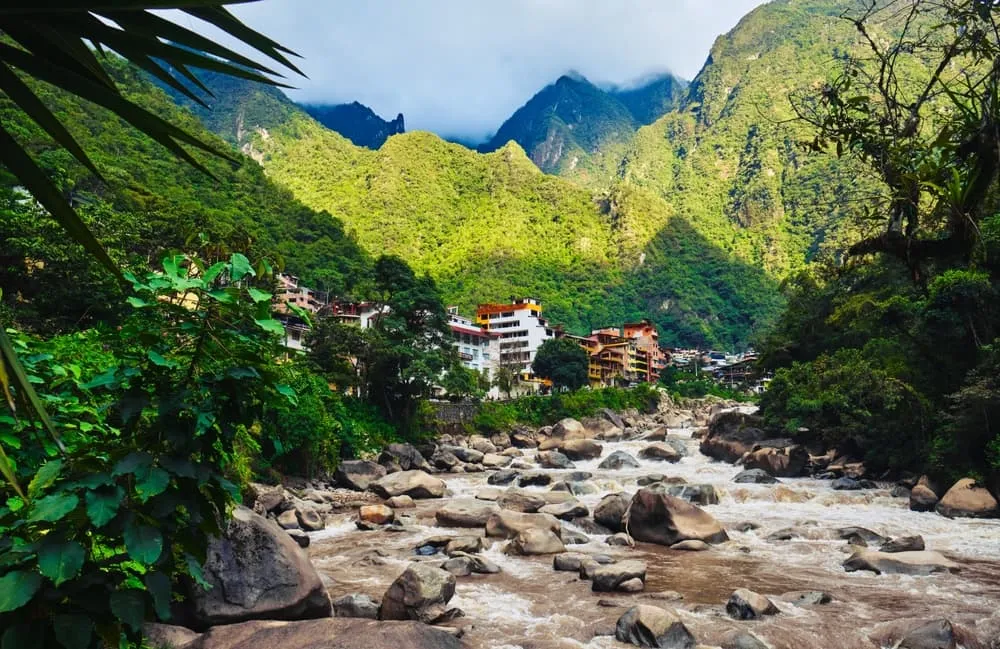
Machu Picchu (Lost City of the Incas)
The Condor Pass is your biggest obstacle during the Lares Trek. The pass has an altitude of 4,300mt/14,107ft above sea level. On a typical Lares Trek, you are most likely to cross the Condor Pass on the second day. It is key to take it easy while crossing the pass. If you are prone to altitude sickness, then this is where it can happen. Fortunately, once you have crossed the Condor Pass, you will descend pretty quickly. This will aid your acclimatization and should settle the worst symptoms of altitude sickness.
The Lares Trek is high. It is basically as high as the Salkantay Trek and you could say it is also just as difficult. The highest point, the Condor Pass, is about 300 meters lower than the highest point of the Salkantay Trek, which lies at 4600 meters.
During the Lares Trek, you also sleep at fairly high altitude. The first two nights you will be staying at around 3700 meters and the last two nights you will be spending at around 2700 meters. It is high, but with the right acclimatization, the Lares Trek is definitely doable.
For your daypacks
Additional items for your duffel bag.
One sure way to get good at what you do is to practice. The best practice for hiking is hiking. Seeing that you are interested in the Lares Trek, we assume that you already like hiking. Hike a bit more. If you are lucky enough to be surrounded by hills or even mountains, it is time to see them more often. When? If you are new to this, we suggest starting six months before your planned departure by simply going for an hour (or two) hike a week. When you get the hang of it, after about three weeks, it’s time to beef up your intensity. Bring a pack of 10 to 15kg and add a longer hike of three hours to your week. If this lifestyle is new to you, you will soon reap the benefits of trekking .
After a good few months of solid hiking, it is time to put your endurance to the test. Do back to back long hikes. You can simulate a few days of constant trekking by going hiking for a few days. Easy at that. Plan a smaller trekking holiday or keep it simple by hiking your favorite route on repeat. If you are comfortable hiking for 4 hours a day, 3 days in a row while carrying a 10kg to 15kg backpack, you will be fine.
Moderate Strength Exercise
You will need to get a bit stronger. One way to get stronger is to do some basic strength work. You don’t need a gym membership, as merely using your bodyweight can already give you the results you are looking for. Once or twice a week, depending on how you are feeling, you can do two sets of 10 lunges, 10 squats, and 10 step ups. If you want to push yourself a bit more, you can try to add some pull ups and push up to your routine. Going the extra mile in your strengthening is, however, really not necessary. You can already enjoy trekking when you just stick to the basics. This is not a fitness competition.
That should get you fit!

Not sure yet or want to discuss your plans for the Lares Trek with one of our trekking experts? Get in touch today and turn your dreams into memories!
You can book the Lares Trek in Cusco during your travels but it is better to book your Lares Trek in advance. The Lares Trek always includes Machu Picchu at the end of the journey. For Machu Picchu you need tickets and they need to be organized in advance. Trekking companies always need some time to book these tickets. It is therefore convenient to book in advance, online.
On Bookatrekking.com you can easily compare and book local providers and hikes. In addition, we have the lowest price guarantee. Have you found the Toubkal ascent of your dreams? In that case, you can proceed with the booking. At Bookatrekking.com you pay a deposit of 15% of the total amount. You pay the remaining amount on location prior to the trek directly to the trekking company.
Find here all our trekking options for Peru and check this page to get all our quotes for the Lares Trek . Have you checked our Peru travel guide yet?

Also Interesting
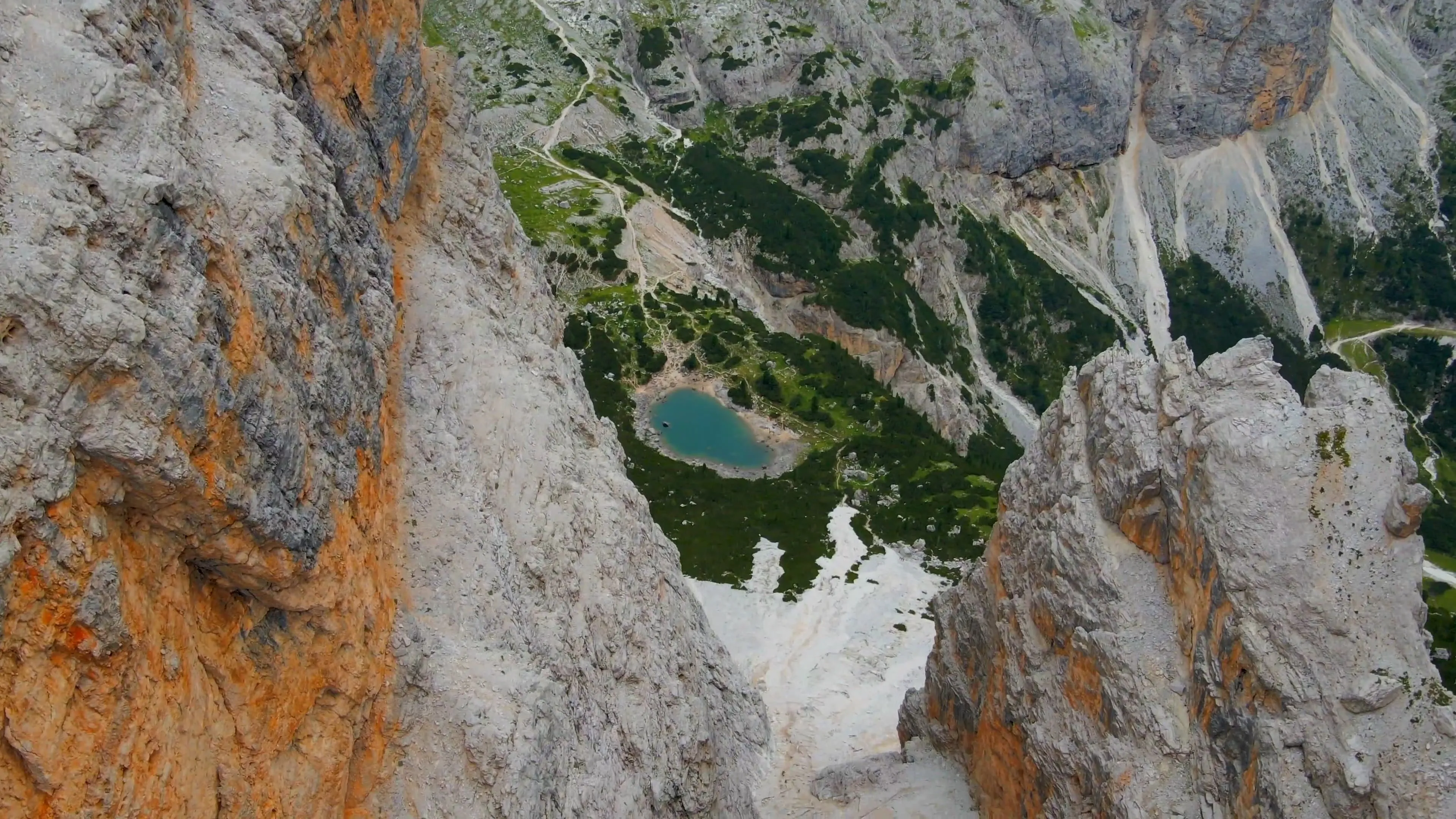
Alta Via 1: Map, Difficulty, and Route on the Italian Dolomites
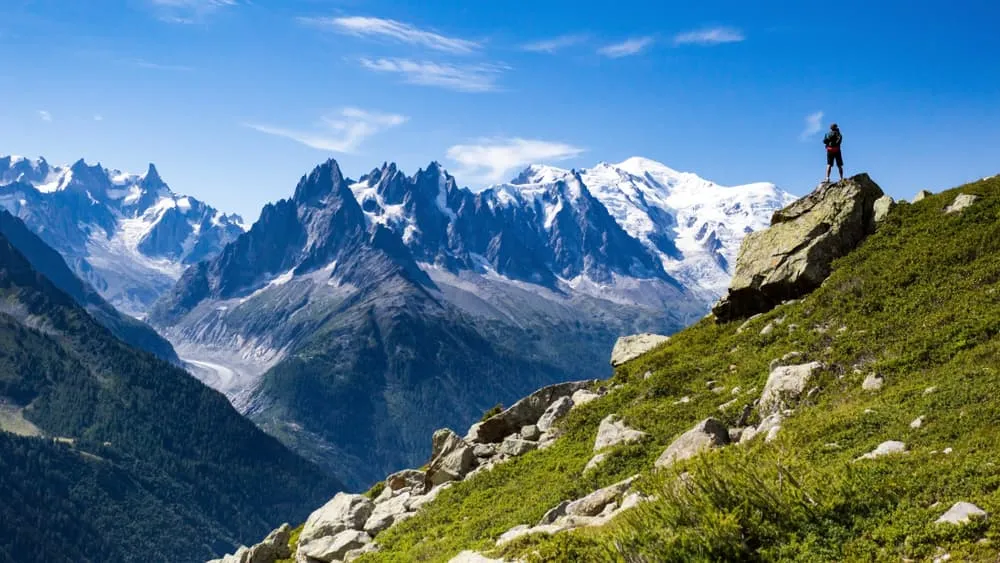
Tour du Mont Blanc: All You Need To Know
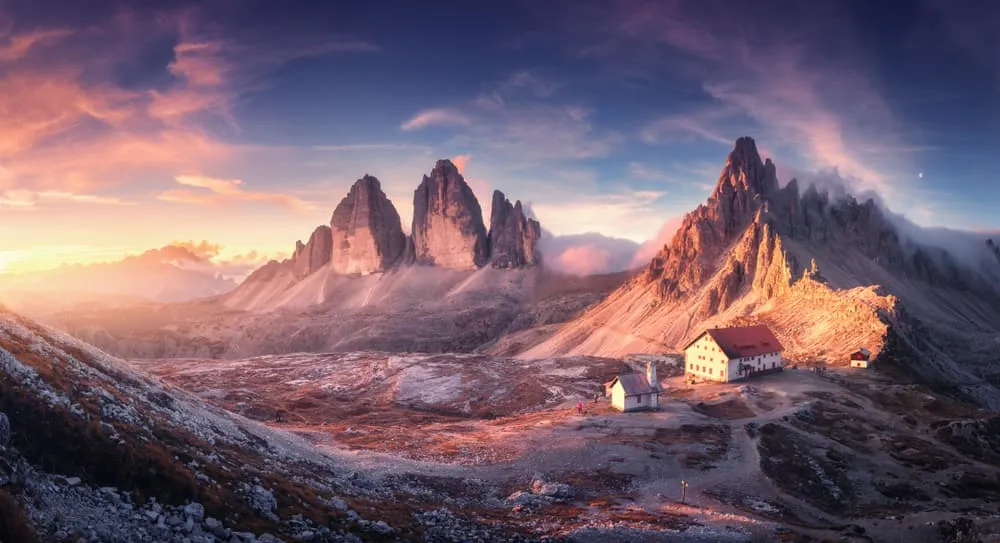
Dolomites Hiking: The 8 Best Options for Hiking Hut-to-Hut in Italy
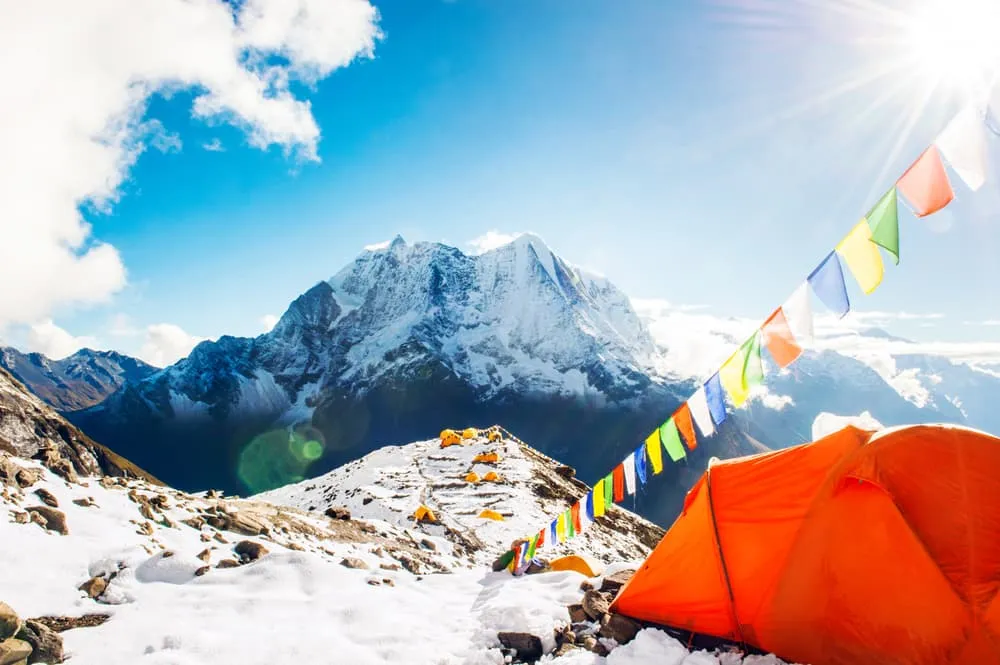
Everest Base Camp: A Trek to The Roof of The World
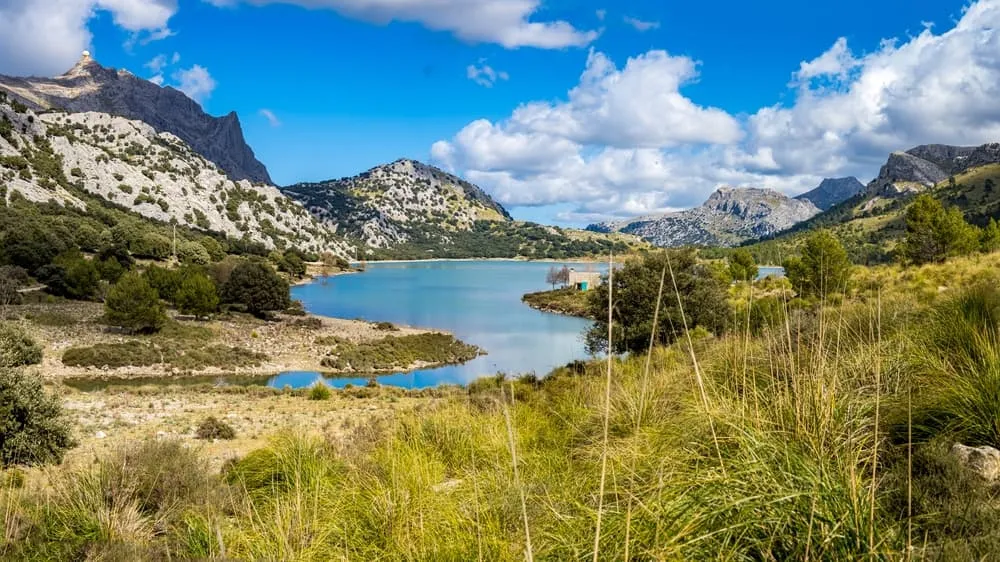
Hiking the GR221 in Mallorca: Everything You Need to Know
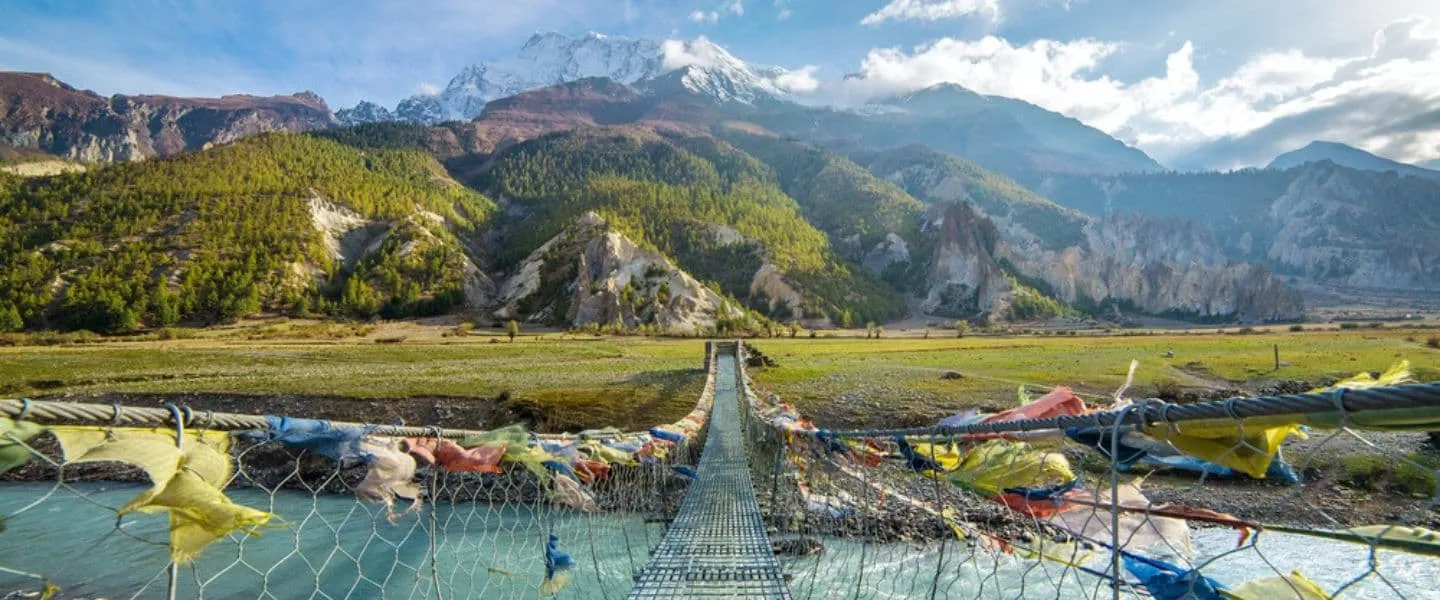
Annapurna Circuit Trek: How to Hike Around the Annapurnas
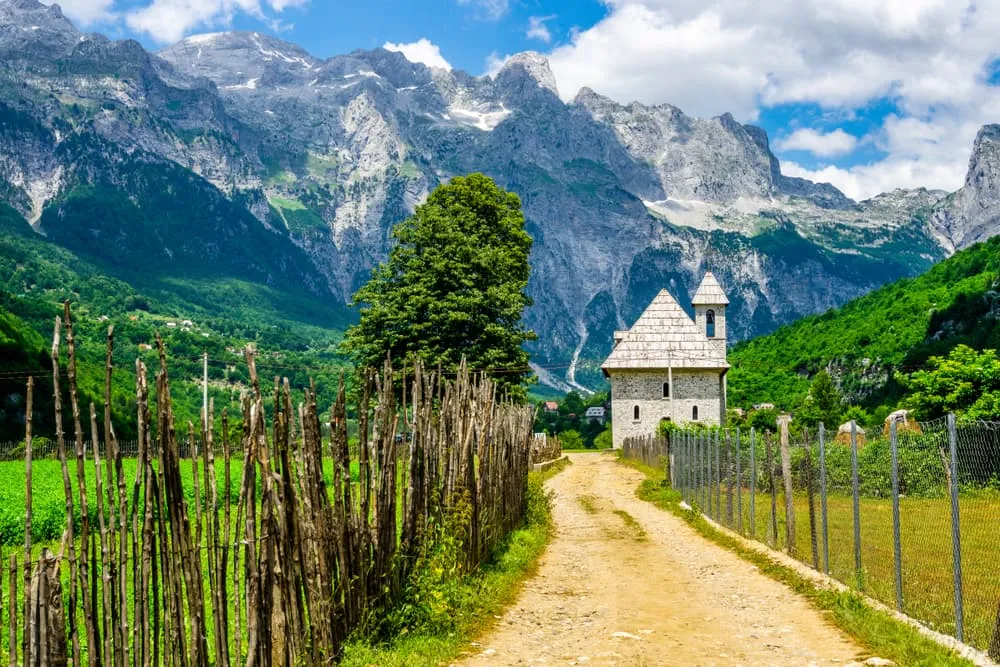
Peaks of the Balkans Trail: All You Need to Know

Hut-to-Hut Hiking in the Pyrenees: The 4 Best Walks
Get weekly inspiration with the best treks.

Nature and people – the Inca Trail alternative
While hundreds of people walk the Inca Trail to Machu Picchu every day, in the nearby Lares Valley there’s a more intimate alternative where just a handful of trekkers get up close with the locals.
Written by Michael Turtle
Michael Turtle is the founder of Time Travel Turtle. A journalist for more than 20 years, he's been travelling the world since 2011.
Michael Turtle is the founder of Time Travel Turtle and has been travelling full time for a decade.
Updated: August 10, 2023
The Lares Trek to Machu Picchu with G Adventures
If you’re considering the Lares Trek vs the Inca Trail, you might be interested to know the differences. Here’s my experience doing the Lares Trek with G Adventures to Machu Picchu in Peru.
From the top here, you can see out over one of the highest parts of the Peruvian Andes mountain range, cold and bare. The world looks different at 4800 metres.
This is the highest altitude I’m hiking to on my journey along the Lares Trek, an alternative to the Inca Trail in the mountains around Cusco on the way to the sacred city of Machu Picchu. The air is thin up here and breathing is difficult.
Every step up the thin path of loose rocks towards the summit was painful. At the top, I’ve been greeted with a desolation fitting for the natural conditions. Only a strange statue of Jesus, adorned with offerings from other trekkers, offers a sign of life.
The walk up here has not been all like this, though. In fact, it’s strange to feel such isolation.
While the Inca Trail is the more famous walk in this region, Lares offers a more intimate experience with the local environment and cultures. Only a few people walk this way each day and it’s less of a ‘trail’ and more of an ‘adventure’.
I would highly recommend it for so many reasons. Not only do you get much more spectacular views than you’ll find on the Inca Trail, it’s also a much more authentic experience.
This is no chain of tourists following right after each other. This is a genuine exploration of the mountains of Peru around Machu Picchu.
Along the way we pass through villages and are greeted by children from nearby communities. One afternoon, as we trek along a larger dirt road, I suddenly find myself walking step in step with a small herd of alpacas. A whistle pierces the air and another one joins the group.
Around a bend, I catch sight of a woman – the source of the whistle – and her two young children dressed in the ponchos and large-brimmed hats indigenous to this land. They are taking their animals back from the grazing areas to their village.
I feel like I’m being herded in some ways. I’m certainly not the herder. But as we continue to walk along, more animals join us – sheep, horses and llamas.
This is as close to peak hour as this part of the world gets and I’m caught up in the middle of it, following along in the same direction as the local people and their animals.
A young girl takes an interest in me and shows off a newborn lamb that she’s carrying, umbilical cord still attached. An older man smiles and mocks a gesture of strength when I seem surprised at how much he’s carrying on his back.
When I ask one woman whether I can take a photo of her, she seems unhappy and demands a ridiculous amount of money – more to stop me than because she actually expects it.
It’s a contrast to most of the locals I have met along the way but, although I have tried to act respectfully, it’s an important reminder that everyone here is an individual living their lives, not some part of a homogenous tourist attraction.
The local people do benefit economically from the trekkers who come through, though. It’s only a small number of travellers – our group is just six people and we see others only once, as they pass in the opposite direction on the second day – but it’s enough.
I’ve organised my trek through G Adventures and it has supported the campsite we’re staying at this evening in the community where the farmers are from.
G Adventures helped with the initial funding to develop the campsite and after it became economically sustainable and begun to provide a profit for the local people, the tour company left them to it and the community now owns and manages the site itself.
In return for a few dollars for each person who stays, the local community provides a hall to use for cooking and dining, clean toilets, showers and space to pitch tents. It was only opened earlier this year and is the first community-owned ecological campsite in Peru.
It’s just one way I feel like I am helping the communities along the trail we are following for these three days.
At a couple of the small collections of houses, someone will be selling bottles of water, soft drink – or even beer one time. I’ve brought some fruit and small toys with me and I give them to the children when we come across this little stores.
There’s an opportunity on the second day to buy some warm clothes from four women who set up a mini market near our tents. (I’m impressed with the way they don’t hassle or try to call me over but just wait patiently in case any of us are interested.) And, of course, there are the men who are helping us with the walking itself.
Although the six of us trekkers are carrying daypacks with things like water bottles, rain jackets and cameras, the rest of our bags for the trek are carried on the backs of horses and alpacas.
Unlike the Inca Trail where no animals are allowed in order to preserve the environment, we can use beasts of burden here because the numbers are relatively insignificant.
After each meal, we set off while a small group of local helpers pack up the camp and load the bags onto the animals. At some point they then pass us, the horses and alpacas galloping along and the guys almost running to keep up with them.
By the time we arrive at camp for the next meal, everything is set up and the water for the tea is boiling.
I’m not sure how the animals and the guys leading them got over this mountain pass that I’m now standing on. They ran past us almost two hours ago and I wouldn’t be surprised if they ran the whole way up.
I look back down the slope, counting the places I stopped to briefly rest and catch my breath. I’m up to ten and haven’t looked beyond the past few hundred metres.
But there’s relief when I turn around and look down in the other direction, into a valley with a greening gradient along the slope and a sundrenched floor further down.
That’s where we’ll camp tonight (well, somewhere down there, at least) next to a river with a small waterfall to lull us to sleep. Not that I’ll need it, I’m sure. This may now be the downhill part but there’s another four of five hours until we stop for the night.
We’ll be back with the people, though, surrounded by a new panorama of landscapes away from the cold harsh wind up here. (You can see more photos of the landscapes of Lares in my post here .) And that’s what this Lares Trek is all about.
Time Travel Turtle was a guest of G Adventures but the opinions, over-written descriptions and bad jokes are his own.
More stories about Peru
- The best things to do in Peru
- What to expect when you visit Machu Picchu
- What to do in Cusco
- Why Chan Chan is so important
- Things to do in Arequipa
- A tour into Colca Canyon
- Take a flight to see the Nazca Lines
- The creepy mummies of the Chauchilla Cemetery
- Hiking in Huascarán National Park
- The fascinating heritage of Chavin de Huantar
- How to visit Caral from Lima
9 thoughts on “Nature and people – the Inca Trail alternative”
Thank you for sharing pictures of your off-the-beaten path adventure through Lares. It was great being able to gain a glimpse into its local cultures!
Wow. This made me want to get the bus straight back to Peru right now. It looks better than the Inca Trail. I really didn’t like how the Inca Trail was so touristy and it was the same path a billion other tourists had trod before me. This looks much more unique and more of an interesting journey. Thanks for sharing – and great photos!
I walked Lares Trek as well couple of years ago. This brings it all back to me, great pictures. I loved it too!
The number of people taking the Inca Trail has always made me wary about going there, but the Lares Trek sounds amazing and just the way I’d want to experience that part of the world.
That little girl with the baby llama is so cute!
That is the coolest Jesus status I’ve ever seen in Latin America.
The Inca Trail trek is one of those top travel experiences I’d love to have one day. It’s unbelievable how trendy, how popular it has become.
Yeah, it’s definitely become that ‘bucket list’ kind of thing that means it’s full of tourists who are doing it because everyone else is. Although it’s still a very cool experience, this is why I preferred Lares because it was something really different and there were hardly any other people the whole time.
What an adventure it was for me this past September; with my Girl friend Jenny, unfortunately I couldn’t continue due to the high altitude. I would recommend any one to experience the high altitude first, get used to the thin air and pressure, not just by taking Diamox; but condition your self for the altitude. Even though I didn’t complete the trek, I did hike and experience Machu Picchu. Yes the wonderful people of Peru. Thank all of you for my memories.
Victor Reece
Leave a comment Cancel reply
Find me on the socials:, subscribe for news and deals:.
top stories:
- Travel Guides Plan your adventure
- Destinations Our favourite places
- Tours Book a trip
- Travel Companies Independent specialists
- Travel Guides
- Destinations
- Travel Companies
Hiking the Lares Trek
Everything you need to know about the "cultural trek".
Heather Jasper
- In this guide
- The Inca Trail
- Choquequirao
- Arequipa & Colca Canyon
- Cordillera Blanca treks
- Responsible trekking
The Lares Trek is known as the “cultural trek” to Machu Picchu, as it offers opportunities to interact with local communities along the way. It’s one of the shorter treks, which makes it a good option for those who are short on time.
This is probably my favourite of all the Machu Picchu region treks , for the cultural interactions that are less common on some of the other routes.
The Lares Trek
Difficulty: Moderate
Distance: Various routes, classic route approx 33km (20m)
Duration: Three to four days
Max elevation: 4,400 metres
Accommodation: Camping or lodges
Start/end point: Huarán - Lares Hot Springs
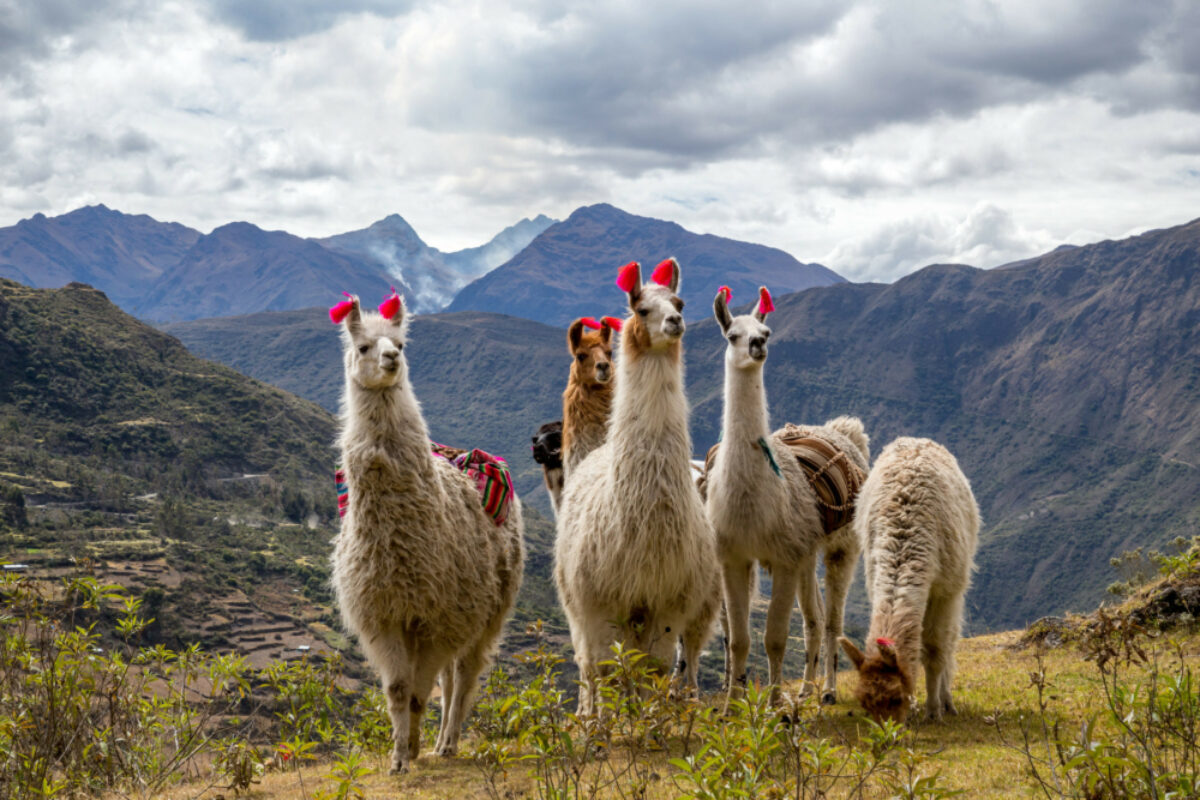
Llamas on the trekking route from Lares in the Andes
What you’ll see
Hiking from the Sacred Valley up to high mountain passes, you’ll be treated to some stunning vistas on this route. However, the real treat here is meeting the local inhabitants of indigenous villages along the way, learning about ancestral weaving techniques directly from the descendants who are still practising them today. An added (and welcome) bonus is finishing at the hot springs in Lares.
How long is the Lares Trek?
There are several different routes for this hike, but the typical one will have you hiking about three days, covering just over 20 miles. On the third day, you will take a train to Aguas Calientes and visit Machu Picchu the following day.
The lodge-to-lodge Lares trek has two versions including the train and tour of Machu Picchu: a five-day version and a seven-day version. Both offer some options in the number of hours you wish to spend hiking each day.
Stories woven in
Traditional weaving is as important a tradition in the high Andes as alpaca herding and the Quechua language. Since Quechua was an oral language long before it was ever a written one, weaving was the main medium for communication, telling stories, and keeping records. By purchasing traditional weavings directly from the artisans, travellers can help keep the tradition alive.
How difficult is the Lares Trek?
The trek is generally rated moderately challenging, although, on the lodge-to-lodge trek, you will be offered opportunities along the way to increase the difficulty of the trek, depending on your preferences and fitness. Either way, the challenging aspect is principally due to the altitude, which on the lodge-to-lodge trek can reach up to 4,420m (14,500 ft).
Accommodation
The traditional route has you camping two nights and spending the third night in a hotel in Aguas Calientes. With the lodge-to-lodge versions, you’ll have two to four nights in a luxury lodge, featuring jacuzzi tubs and gourmet food. These lodge stays are usually followed by one night in a hotel in Ollantaytambo and one in Aguas Calientes.
How to book
No permits are necessary for hiking the Lares trail, but you will still want to book with a local operator. They will have the right connections with local horsemen and employ qualified guides who know the area well and speak Quechua. This is key for interacting with the communities along the route, as well as for ensuring your safety in the mountains. There is an extensive web of trails that go through valleys and over several mountain passes and trails are not well marked.
Support staff
With a good trekking operator, you’ll have a guide who is knowledgeable in the history, flora, and fauna of the region, enhancing your experience along the trail and within the communities. You will also have local horsemen to care for the mules and horses that carry your gear, and a cook and assistant cook to prepare your meals.
Key considerations
Although an emergency horse is usually included, if you suspect you may have difficulties, it’s a good idea to request an additional emergency horse for your use (at an extra charge).
Most tours do not include a sleeping bag, although they can be rented.
You’ll want to bring some extra cash with you to tip the support staff on your last night of trekking, as well as to purchase weavings in the communities.
Bring small gifts to pass on to local children in the communities you visit.
Ask trekking agencies if they offer pack llamas rather than mules. Llamas have less impact on trails and the environment.
Hiking to Choquequirao
About the author.
Based in Cusco, Peru, Heather is an expert on travel to Peru and South America. Heather writes on tourism, trekking, and social issues in Peru for publications including BBC Travel, Fodor’s Travel, Matador Network, Thrifty Nomads, World Nomads, Frommer's, Flashpack, and more. Heather co-founded the Covid Relief Project with Henry Quintano Loaiza to assist vulnerable families in the Cusco region.
Featured tours
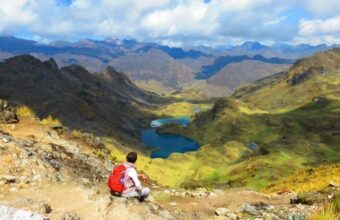
Lares Valley Cultural Trek
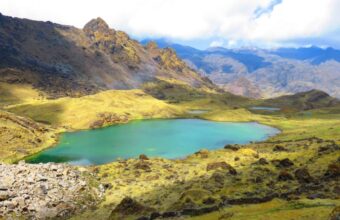
Lares & Two Day Inca Trail
Featured tours view all.
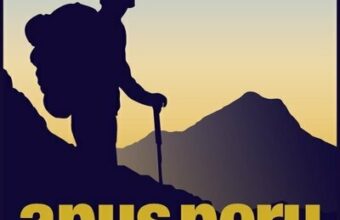
Why Horizon Guides?

Impartial travel guides
Our guides are written by the leading experts in their destinations. We never take payment for positive coverage so you can count on us for impartial travel advice.

Expert itineraries
Suggested itineraries and routes to help you scratch beneath the surface, avoid the tourist traps, and plan an authentic, responsible and enjoyable journey.

Specialist advice
Get friendly, expert travel advice and custom itineraries from some of the world's best tour operators, with no spam, pressure or commitment to book.
Our guides are 100% impartial and are written by independent, professional travel journalists. We make money by charging carefully-screened travel companies to list their business on our website. Our advertisers have no influence on our editorial content and we never accept payment for positive coverage.
Read more about how we work and what we believe in here .
- Travel guides
- Work with us
Sitemap , Privacy Copyright © 2024 Horizon Guides
Username or E-Mail
Enter something special:
Forget Password?
Do not have an account?
Already a member.
- Tambopata Ecotour 3 Days
- Tambopata Ecotour 4 Days Top!
- Sandoval Lake Lodge 3 Days Premium
- Sandoval Lake Lodge 4 Days Premium
- Challenge Inca Trail 1 Day
- Short Inca Trail 2 Days
- Classic Inca Trail 4 Days
- Ancascocha Trek + Classic Inca Trail 7 Days
- Salkantay + Inca Trail To Machu Picchu 7 Days
- Lares + Inca Trail To Machu Picchu 5 Days Top!
- Ausangate + Rainbow Mountain 2 Days Premium
- Ausangate + Rainbow Mountain 3 Days
- Ausangate + Rainbow Mountain 4 Days
- Rainbow Mountain To Ausangate 7 Lakes 4 Days Premium
- Ausangate + Rainbow Mountain 5 Days Premium
- Classic Ausangate Trek Circuit 5 Days Premium
- Ausangate + Rainbow Mountain Trek 6 Days
- Ausangate Trek & Sibinacocha Lake 7 Days Premium
- Ausangate Images
- Ausangate Trek To Machu Picchu 3 Days Top!
- Ausangate Trek To Machu Picchu 4 Days Top!
- Machu Picchu & Rainbow Mountain Trek 4 Days Package
- Ausangate & Rainbow Mountain + Short Inca Trail 4 Days Premium
- Ausangate & Rainbow Mountain + Short Inca Trail 5 Days Premium
- Machu Picchu Tour To Ausangate Trek 6 Days Package
- Ausangate Trek To Machu Picchu 7 Days Top!
- Ausangate Trek To Machu Picchu Tour 8 Days Premium
- Machu Picchu Tour By Train 1 Day Top!
- Machu Picchu Tour by Train 2 Days
- Machu Picchu And Rainbow Mountain 4 Days New!
- Sacred Valley and Machu Picchu Tour 2 Days Top!
- Machu Picchu Images
- Salkantay Trek Imperial 8 Days Package
- Lares Trek To Machu Picchu 6 Days Package
- Machu Picchu & Ausangate Trek 6 Days Package
- Machu Picchu & Rainbow Mountain 4 Days Package
- Salkantay Trek To Machu Picchu 3 Days
- Salkantay To Machu Picchu 4 Days Economic
- Salkantay To Machu Picchu 5 Days Economic
- Salkantay + Inca Trail & Machu Picchu 7 Days
- The Salkantay Trekking Imperial 8 Days New!
- Choquequirao Trek 4 Days Premium
- Choquequirao Trek 5 Days Premium
- Choquequirao And Machu Picchu 7 Days Top!
- Choquequirao Trek To Machu Picchu 8 Days
- Choquequirao Trek To Machu Picchu 9 Days
- Ancascocha Trek To Machu Picchu 4 Days Top!
- Ancascocha Trek & Machu Picchu 5 Days Premium
- Ancascocha, Inca Trail, Machu Picchu 5 Days
- Ancascocha, Inca Trail, Machu Picchu 7 Days
- Lares Trek To Machu Picchu 3 Days
- Lares trek To Machu Picchu 4 Days Top!
- Lares + Inca Trail To Machu Picchu 5 Days Premium
- Sacred Valley, Lares To Machu Picchu 6 Days
- Huchuy Qosqo Trek 1 Day
- Huchuy Qosqo Trek 2 Day
- Huchuy Qosqo Trek To Machu Picchu 3 Days Top!
- Inca Jungle Tour To Machu Picchu 3 Days
- Inca Jungle Trek To Machu Picchu 4 Days Top!
- Inca Jungle Trail Plus Llactapata 4 Days
- Inca Quarry Trail 1 Day Hike
- Inca Quarry To Machu Picchu 4 Days
- Moonstone Trek To Machu Picchu 5 Days
- Amazon Jungle
- Our Porters
- Travel Reviews
- Our Hiking Gear
- Booking Policies
- All Photos Of Peru
- Machu picchu Ticket
- How To Make a Booking
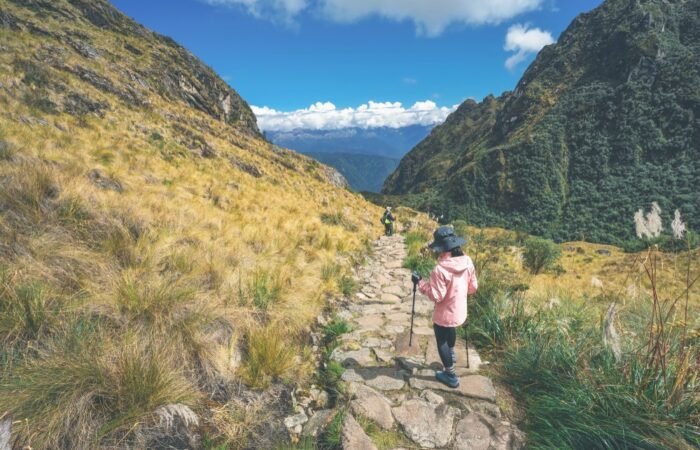
Inca Trail Treks Packages
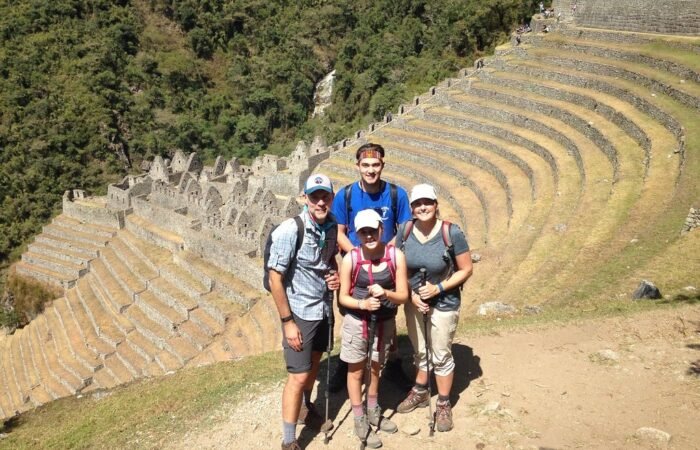
Inca Trail Combinations
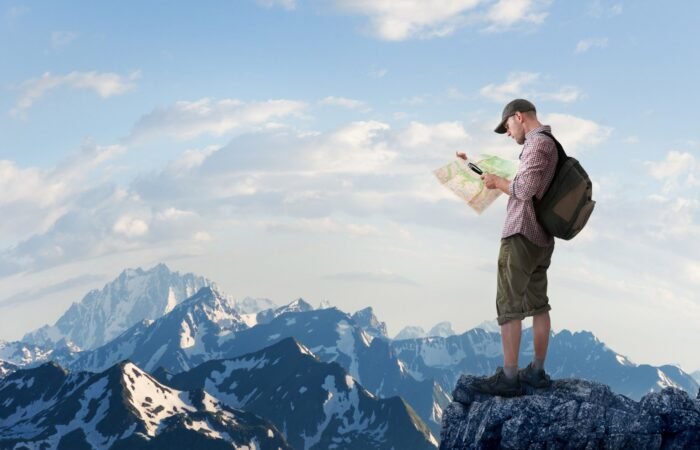
Packing list

All Packages
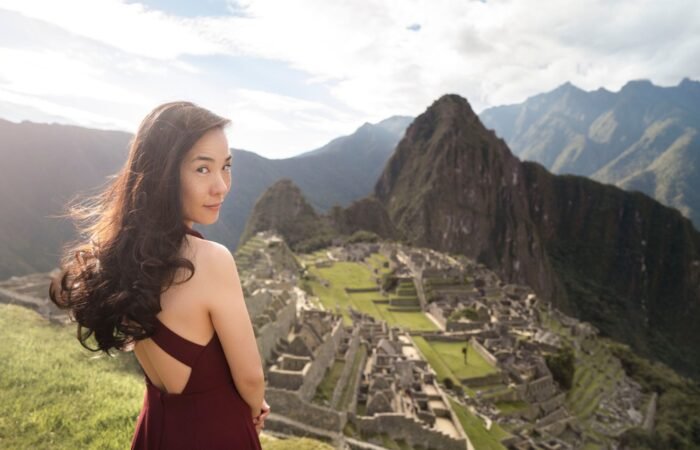
Ausangate Trek
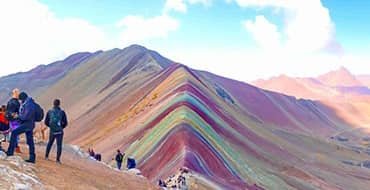
Rainbow Mountain

Salkantay Trek
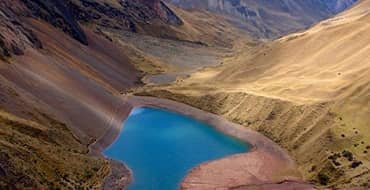
Ancascocha Trek
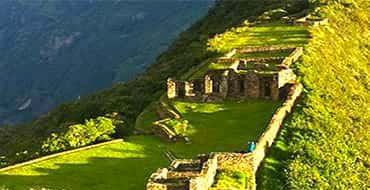
Choquequirao Trek
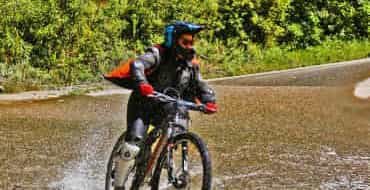
Inca Jungle Trail
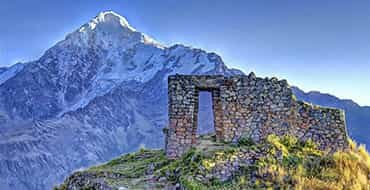
Inca Quarry Trail
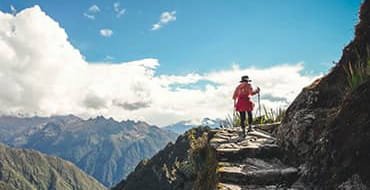
Moostone Trek
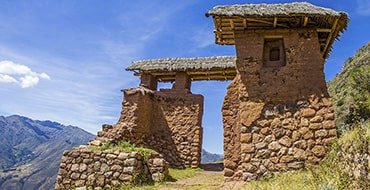
Huchuy Qosqo Trek
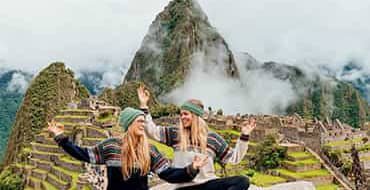
Machu Picchu Tours
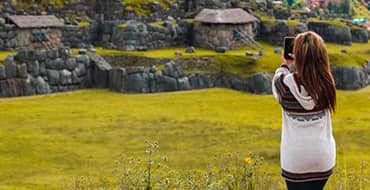
Cusco Day Tours
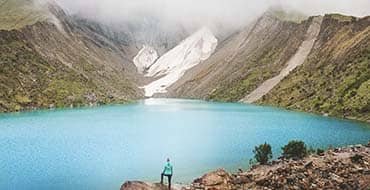
Cusco Day Hikes
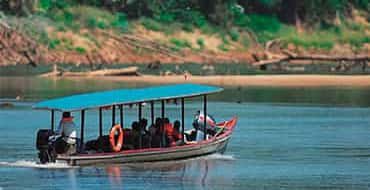
Sandoval Lake Tour 4D
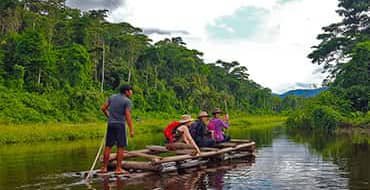
Tambopata Tour 3D
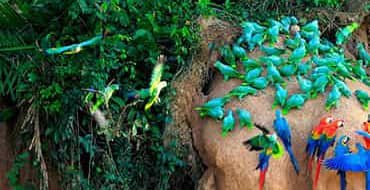
Tambopata Tour 4D
Lares trek to machu picchu 4 days.
- Classic group service Group Service 12 people Adult: $540 Children: $530 Available: 20 seats
- VIP private service Service with total flexibility Adult: $650 Children: $640 Available: 30 seats
Proceed Booking
Already a member.
Username or E-mail
Don't have an account? Create one.
Or continue as guest, adding item to wishlist requires an account.
Reservations for the great year 2024 - 2025 have already started, more than 5000 clients with reservations secured!
Are you thinking about taking a trip to Machu Picchu? What are you waiting for, make your reservation now and secure the best place to see Machu Picchu completely and live an unforgettable experience!.
We recommend booking it at least 2 months in advance as tickets are quite limited.
BOOKING FAST & EASY
Book fast and easy on our website and keep track of your reservation with our most advanced booking system, be updated on our discounts every week.
- FB Messenger
- Odnoklassniki icon Odnoklassniki

Lares Trek 4 Days Classic
The four-day trek from Lares to Machu Picchu offers a magical and breathtaking experience that you’ll never forget! Along the trail, you’ll find rivers, lakes, waterfalls, and awe-inspiring views of snow-capped peaks of the Andes mountain range. If you’re interested in Andean culture, this trail is the best option for you. You’ll get to visit various countryside communities where they raise llamas and alpacas. They also use sophisticated weaving techniques to keep their traditions alive. Textile art from these communities is awe-inspiring and holds extraordinary amounts of cultural and historical significance! Take advantage of this opportunity to make new friends and open your mind.
The path is intense but not as extreme as others. Along the way, rivers will roar by your side, and impressive waterfalls will appear in front of you, catching you by surprise and helping you relax along the rushing waters. You’ll also see teardrop ponds of all colors: blue, green, turquoise, yellow. After this magical few days in the mountains, you’ll finish your trek with a visit to one of the Seven Wonders of the Modern World: the historical sanctuary of Machu Picchu.
DAY 1 Cusco - Huaran - Cancha Cancha
Visit places.

We will pick you up at 5:00 am from your accommodation in Cusco to begin our exciting adventure. Then we will head to Huaran where we will have a delicious breakfast prepared by our private chef.
We start your trek on a path that will take us slowly to the community of Canchacancha. After 3 hours hike we will stop at a strategic point to have lunch prepared by our cooks after a delicious lunch we will walk 2 hours more to the community of Canchacancha where you will have the opportunity to interact with the locals and be part of their way of living also we offer you tea before dinner to warm up your bodyes also dinner and the amenities for a camping night. If you like you can learn a little bit of quechua the Inca language. While we visit the comiunity our suport staff will set up the camp in order to sleep in the área around 5:00 pm we enjoy a warm tea or “happy hour” and dinner around 7:00 pm then you enjoy the beauty of the sky full of stars usually.
- Meals: Breakfast, lunch, dinner.
- Accommodation: Camps
- Difficulty: Moderate
- Walking Distance: 9 km / 5.5 mi
- Starting Elevation: 2,920 m / 9,580 ft
- Highest Elevation: 3,950 m / 12,959 ft
- Campsite Elevation: 3,950 m / 12,959 ft
DAY 2 Cancha Cancha - Pachacutec Pass - Qiswarany

The second day of the trek is considered difficult because we hike from (3,950 m / 12,959 ft)t up to 4,700 m / 15,419 ft which is the highest point of the whole Lares treks. It is going be about 4 hour slow uphill hiking but the landscape is beautifull and unique full of small lagoons, rocky mountains, snow-capped mountains, and the most interesting animals Llamas and Alpacas grazing everywhere taking care by their Andean shepherds who spends time weaving. By 5:00 am our support staff will pass for your tents to wake you up with a hot drink coca tea or coffee After you repack your personal belongings we have a breakfast prepared by the expert chefs in order to start our trek around 6:30 in the morning. After 4 hours uphill hiking we arrive to Pachacutec pass (4700 m / 15420 ft) to enjoy the panoramic views of the beautiful area and also you appreciate Pachacutec mountain from very close then we organize an offering for the mountains gods and after done the ritual we continue hiking for 1 hour downhill toward Coyalago which is the lunch spot located in the borders of a beautiful lagoon after lunch we hike 1.5 hours more towards the camping, along the way we will appreciate beautiful waterfalls and local people getting ready for the nightfall. Then we arrive to the camp to have tea and dinner and camp in the community of Quiswarani at 3,850 m / 12,631 ft.
- Difficulty: Challenging
- Walking Distance: 13 km / 8.07 mi
- Starting Elevation: 3,950 m / 12,959 ft
- Highest Elevation: 4,700 m / 15,419 ft
- Campsite Elevation: 3,850 m / 12,631 ft
DAY 3 Qiswarany - Lares Hot Springs - Hollantaytambo - Aguas Calientes

Today we have to reach to Aguas Calientes town and we are going to do diferent activityes and also is a beautiful day for mountain lovers and pure nature. We wake up at 5:00 in the morning with a cup of coca tea then we have breakfast in order to start the trek around 6:00 in the morning. We start the last part of the of the entire trek. Hiking 2 hours approximately the last uphill section of the trek which is going be to willkikasa pass at (4,400 m / 14,435 ft) from this high you have a espectacular views of Cuncani valley with its amazing views of the colorfull Lagoons surrounded by mountains if you are lucky you will see along the way Chinchillas, Andean foxes for sure you see many alpacas, llamas you will have the chance to be very close to them for photograph. After the summit we will descend 2 hours approximately to the community of Cuncani where we will have lunch. After lunch a car from the company will take us to the hot springs of Lares once there yoy have time to take a bath and realx in the medicinal hot springs. Then we continue by car for 2.5 more hours towards Ollantaytambo for dinner and take the train to Aguas Caliente and spend the night in a hotel and the next day visit Machupicchu.
- Accommodation: Hotel
- Walking Distance: 10 km / 6.21 mi
- Starting Elevation: 3,850 m / 12,631 ft
- Highest Elevation: 4,400 m / 14,435 ft
- Accommodation Elevation: 2,040 m / 6,993 ft
DAY 4 Aguas Calientes - Machu Picchu - Cusco Hotel

Most of the people who visist mahupicchu are the people who take train and to get there, of course the most importat reason for them is to know Machupicchu. But in your case after you did the lares trek you will not just know Machu Picchu you will understand and feel deeply the meaning of the Inca civilizations. After breakfast early in the mornig w ego to take the bus uf to Machu Picchu, bus takes about 25 minutes approximately to the main entrace of Machu Picchu. The point is to arrive at 6:00 a.m to Machupicchu in order to see it almost without people and enjoy the sunrise. After 20 to 30 minutes you will have a guided tour service for about 2:30 hours in Machupicchu then we will leave you free to explore the lost city of the Incas. Then if you wish you can go to the sun gate or to the Inca bridge. If you booked in advance the tickets for Huaynapicchu or Machu Picchu mountains you can climb. after you done all the activityes we return to Aguas Calientes town by bus to have a delicious lunch. In the afternoon You will take a train back to Cusco then we take you by car to your hotel.
- Meals: Breakfast
- Tour in Machu Picchu: 2-3 hours exploring
- Machu Picchu Site Elevation: 2,430 m / 7,972 ft
- Huayna Picchu Mountain Elevation: 2,720 m / 8,924 ft
- Machu Picchu Mountain Elevation: 3,000 m / 9,843 ft
High Quality Service & Safety
- Pre-departure briefing
- Experienced Guide speaks English and Spanish
- A professional cook only for our group
- Medical Kit – First Aid Kit
- Private Camping Equipment
- One duffle bag per person
- Customer Service 24/7
- Extra oxygen
Permits & Entrance Tickets
- Entrance Ticket for Lares Hot Springs
- Entrance Ticket to Machu Picchu Archaeological Site
Transportation
- Private transportation from Cusco to the start of the trek
- Horses, and muleteers horses carry your 8-kg / 16-pound personal items.
- Private transportation from the end of the walk to the Ollantaytambo train station
- Day 3: Train Ticket from Ollantaytambo To Aguas Calientes
- Day 4: Train Ticket from Aguas Calientes to Ollantaytambo
- Day 4: Private transport from Ollantaytambo train station to your hotel in Cusco.
- Meals: 4 Breakfasts, 3 Lunches, and 3 Dinners
- Meals: vegetarian and vegan
- Water to drink on the trail every day
- Wake up tea
- Tea Time or Happy Hour
- Snacks on the trail daily
- Products for hygiene
Accommodation
- Personal Accommodation in Private Campsites
- Hotel in Aguas Calientes
Additional Included
- Pillows throughout the tour
- PRO Air sleeping pad, Therma-Rest brand
- Sleeping bag
- Trekking stick
What Is Not Included?
- Travel Insurance
- Tips for our staff
- Additional costs or delays out of control of the management
- Original Passport
- Walking boots
- Waterproof jacket / rain poncho
- Warm jacket
- Hat and gloves
- Comfortable trousers
- Sun cream (factor 35 or higher)
- Insect repellant
- Toiletries and hand sanitiser
- Personal medication
- Camera and film with extra batteries
- Torch with spare batteries
Information Before leaving for the Lares Trek
Briefing or informative meeting.
All information meetings are held in your hotel at 6:00 p.m., one night before the tour begins. If you cannot attend, you must coordinate another time at the Peru Hike offices. These meetings last approximately 30 to 45 minutes and there you will be given a small duffel bag, in which you’ll put all the belongings you intend to bring on the trek that won’t be in your day pack.
Duffel bag or canvas case
ou’ll receive a canvas case or duffel bag during your briefing. The porters will take them on the way and will deliver them to you when you get to each camp. They measure 66 cm / 2 ft. Long x 36 cm / 1 ft. Wide.
A maximum of 5 kg is allowed for each duffel bag that includes the weight of your sleeping bag, mat, clothes and other personal items.
Payment of Trek Balance (in Cusco)
The trek has to be paid for in full by at least 7.30 pm two days before departure. For example, if your tour departs on a Wednesday, then you must come to our office before 7.30 pm on Monday.
It would be much appreciated if you pay the trek balance in cash US dollars or local currency. You can withdraw some money from several ATMs along Avenida Sol (either in US dollars or local Peruvian Soles). You can pay by credit card or PAYPAL online, but you will have to pay an 8% service charge, charged by VISA and PAYPAL. We do not accept bank checks or payment of the balance by traveler’s checks.
Can I store my luggage at your office?
Of course! During the travel, your main luggage can be stored at our office(you can organize briefing day or by email) or at your hotel, both free of charge.
Any equipment that you are not going to need on the trek can be stored safely in your hotel. Nearly every hotel will provide this service. Don’t leave items of value with your bags, put them in the hotel safe and obtain an itemized receipt (In the unlikely case of theft many insurance companies require that you have a copy of the receipt itemizing all the items). Best put items such as credit cards inside a sealed, signed envelope for extra peace of mind.
Pick up of guests
Peru Hike can pick you up from your hotel, as long as it’s in the Historic Center of Cusco. The pickup time will be coordinated with your guide in the briefing. The pickup time may vary between 30 and 45 minutes due to traffic. Cusco is a very old city, therefore, it has many narrow cobbled streets. Some hotels and Airbnbs may be located on streets without access to cars or on long, steep slopes, making it difficult to transport luggage. We strongly recommend that you book accommodation with good access.
Return to Cusco
Returning from Machu Picchu requires quite a bit of logistics, but don’t worry. Everything is included in your tour!
- In Machu Picchu you’ll board a bus that will take you for 25 minutes to the small city of Aguas Calientes. The buses are boarded according to your arrival.
- In Aguas Calientes you’ll board a train to Ollantaytambo or Cusco. Your guide will give you the train tickets where the boarding time will be shown. Make sure you’re on the platform 30 minutes early. The train from Aguas Calientes to Ollantaytambo takes 2 hours.
- Once you arrive at the station, our representative, identified with the Peru Hike clothing, will be waiting to transfer you to Plaza San Francisco, in Cusco. The trip from Ollantaytambo to Plaza San Francisco takes 2 hours.
- In San Francisco, depending on your hotel’s location, we will take you to a smaller car from our company (Hyundai H1) to transfer you faster to your hotel in Cusco.
Group tours
Group tours are made up of different types of people. Physical conditions and ages can vary. By agreeing to be part of a group tour, you also accept that some people may be faster or slower than you. Therefore, each person can go at their own pace on the route. It may be the case that a group wishes to modify the tour; however, it will be the guide who decides, after consulting with all the participants, if said modifications can be made.
Strikes and demonstrations
Strikes and demonstrations are usually frequent in Peru and this may interrupt some of our tours. Roads can be blocked and train tracks can be taken over. However, we will try to keep your excursion as planned, even if it means leaving the night before the scheduled date. Under these circumstances, tours may also be cancelled. In case of changes or cancellations, all situations will be coordinated with you by our operations department. Your safety is our highest priority and our decisions will be made to protect it.
Lost objects
You’re responsible for your objects during the tour. Please pay attention to where you leave your things and remember to take everything once you leave our trucks, tents, or restaurants.
Related Tours
Here are some other options that will suit your needs

Rainbow Mountain & Ausangate 7 lakes trek 2 Days
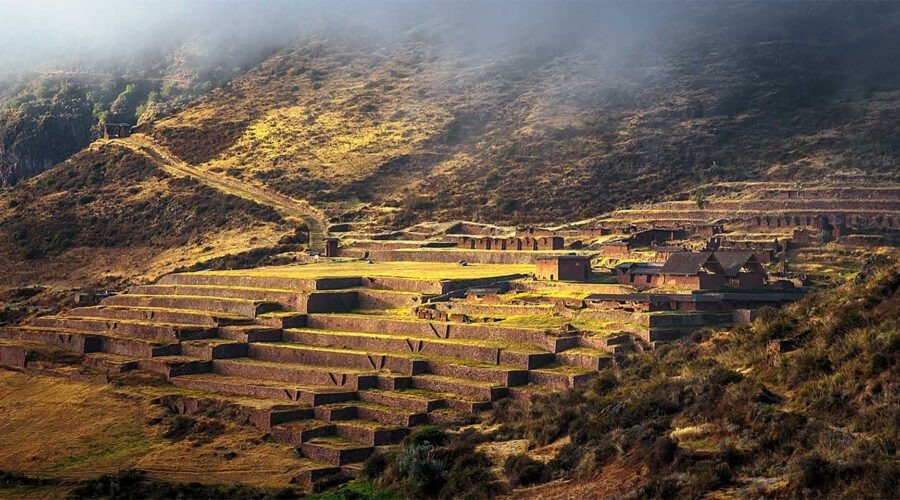
Huchuy Qosqo Trek To Machu Picchu 3 Days
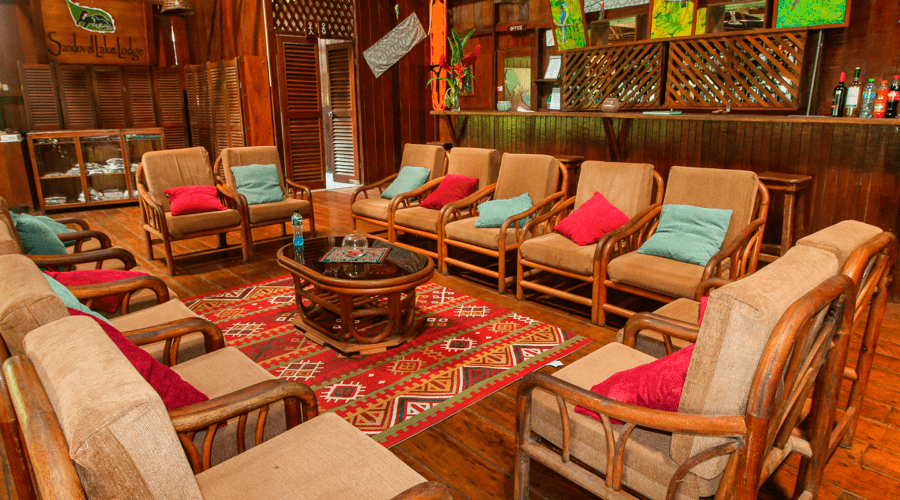
Sandoval Lake Lodge 4 days and 3 nights
We are a family that made Lares Trek / Machupicchu with (Peru Hike), at the recommendation of some friends who also did the same tour. We made the reservation directly for 6 people one month in advance, and Thanks to Franklin that he gave us all the means to continue with the reservation and have the travel date. The group was just for us, we don’t share with anyone else. The entire organization was excellent from the first day of travel, all in due course very punctual with pick-up times, walking hours, and daily activities. The service we had was high quality, our chef, guide and muleteer were the friendliest people we had, the food was very good and varied until we had the option of requesting vegetarian food for one of us. In the package we had, everything was included from private transport, food, income, machupicchu, hotel, trains and our guide Alex who accompanied us until the final day of the tour. (Peru Hike) is a safe company, and highly recommended!

Most Recent: Reviews ordered by most recent publish date in descending order.
Detailed Reviews: Reviews ordered by recency and descriptiveness of user-identified themes such as waiting time, length of visit, general tips, and location information.
Also popular with travellers

LARES TREK: All You Need to Know BEFORE You Go (with Photos)
- Lares Valley (Full Day) (From £41.05)
- All Inclusive - 4 Days Lares Trek To Machupicchu - Private Experience!!! (From £600.58)
- Lares Trek to Machu Picchu: 4-Day Tour (From £481.85)
- 4 Day - Lares Trek to Machu Picchu - Group Service (From £724.31)
- Lares Trek 4 days with Panoramic Train (From £558.64)
- (9.96 mi) Sacred Dreams Lodge
- (7.18 mi) Hospedaje K'uchuwasi Backpacker
- (7.74 mi) El Mono Sabio
- (4.78 mi) Eco Lodge Cabanas
- (5.71 mi) Hospedaje Paraiso

COMMENTS
Visited March 2024. Traveled as a couple. Written March 7, 2024. Dhyk V. 1 contribution. Lares Trek, Unique Experience with Local Trekkers Peru. My friends and I did the 4 days and 3-nights Lares Trek to MachuPicchu with local Trekkers Peru, and personally it was the best adventure I've done in my entire life.
Lares Trek to Machu Picchu - The Ultimate Cultural Trek Lares Trail - An Overview. The Lares trek is an off-the-beaten-path alternative to the Inca Trail. It begins near the town of Lares, from which it gets its name. This small town is 40 miles (64.4 kilometres) north of Cusco and 35 miles (56.3 kilometres) southeast of Machu Picchu.
Read our transparency report to learn more. 69 Explorer is the best! First: The Lares hike is spectacular, with beautiful views of the mountains, lakes, waterfalls and lots of fauna. Second: 69 Explorer Peru, the company that organized the trekking for us, was wonderful and very professional.
The Lares Trek is located in the Cusco region in southern Peru, in the province of Calca. This route will take you through stunning landscapes, picturesque Andean villages, and immerse you in the rich Quechua culture. The Lares Trek is an excellent choice if you want to avoid crowds and explore high-mountain landscapes at their best.
The Lares trail is a lesser-known alternative to the Classic Inca Trail in the Andes, starting near the town of Lares which is 40 miles north of Cusco. From here you will trek through the Lares Valley, which crosses part of the Sacred Valley. You can have the option of simply hiking the 2 to 3-day trail, or incorporating a visit to Machu Picchu ...
The Lares Trek trail spans a range of altitudes, starting from 2,800 meters above sea level (masl)/9,186 feet in the early hours of hiking, and ascending to higher altitudes of up to 4,800 masl/15,419 feet, typically reached on the second day of the trek. The contrast between Andean life and landscapes is incredible.
According to Tripadvisor travellers, these are the best ways to experience Lares Trek: Valley of LARES Full Day (From AU$76.25) All Inclusive - 4 Days Lares Trek To Machupicchu - Private Experience!!! (From AU$1,127.24) Lares Trek to Machu Picchu: 4-Day Tour (From AU$895.10) 4 Day - Lares Trek to Machu Picchu - Group Service (From AU$1,338.05)
The ultimate reward of the Lares Trek is the chance to witness the breathtaking beauty of the Peruvian Andes, from towering peaks to lush valleys dotted with alpacas and llamas. Additionally, reaching Machu Picchu at the end of the journey provides a profound sense of accomplishment and an opportunity to explore one of the world's most iconic ...
9. Coca leaves are king. Altitude sickness is very much a real thing, so factor this in when planning for the Lares Trek. Even if you are taking altitude sickness-preventing pills (called Diamox) before you arrive or relying on acclimation to the altitude in Cusco, the coca leaf may be of use to you.
4 Days / 3 Nights. Lares Trek to Machu Picchu: A particularly special adventure, the Lares trail takes the road less traveled to Machu Picchu. The Lares Trek offers a unique and rare perspective into the true Andean lifestyle, as trekkers walk through remote villages and visit family homes for an intimate look into the culture and customs of ...
The Lares Trek is the best alternative for the Inca Trail. The Lares Trail in Peru is really the most beautiful. Check this blog about altitude and more. Excellent. on Trustpilot. [email protected] +31 (0)85 01613 54. Wishlist. 0.
If you're considering the Lares Trek vs the Inca Trail, you might be interested to know the differences. Here's my experience doing the Lares Trek with G Adventures to Machu Picchu in Peru. From the top here, you can see out over one of the highest parts of the Peruvian Andes mountain range, cold and bare. The world looks different at 4800 ...
The Lares Trek. Difficulty: Moderate. Distance: Various routes, classic route approx 33km (20m) Duration: Three to four days. Max elevation: 4,400 metres. Accommodation: Camping or lodges. Start/end point: Huarán - Lares Hot Springs. Llamas on the trekking route from Lares in the Andes.
Walking the Lares trek in Peru. One of the main alternatives to the classic Inca Trail, the Lares trek offers a much more marked immersion into traditional Quechua culture than any other trek through the Sacred Valley. This challenging hike over three to four days takes you through one of Peru's most traditional valleys, skirting rural ...
The Lares Trek is a once in a lifetime experience. It's the perfect Andean experience full of wonderful sights including rivers, waterfalls, lagoons ... 2 Reviews-22%. Flexible refund. Cusco. Lares Trek To Machu Picchu 4 Days. From $790 $540. Multi-day hike. Trip Length: 4 Days. Difficulty: Moderate. 1 Review-16%. Flexible refund. Cusco.
This 4-day Lares trek has its final destination, the Inca city of Machupicchu, and I want to thank this company for the support during the trip. Read more. Written 27 July 2020. This review is the subjective opinion of a Tripadvisor member and not of Tripadvisor LLC. Tripadvisor performs checks on reviews as part of our industry-leading trust ...
The 3D/2N Lares Trail Trek in Peru is a high altitude, less-touristy alternative to the famous Inca Trail Trek to Machu Picchu. This is a no-fluff first-pers...
With flexible cancellation policies, traveler photos, and rave reviews, the Lares Trek promises an unforgettable adventure filled with rich history and vibrant culture. Don't miss out on this incredible opportunity to discover the heart of Peru. Search. 25 Best Walking Tours In Tokyo;
The four-day trek from Lares to Machu Picchu offers a magical and breathtaking experience that you'll never forget! Along the trail, you'll find rivers, lakes, waterfalls, and awe-inspiring views of snow-capped peaks of the Andes mountain range. If you're interested in Andean culture, this trail is the best option for you.
The Lares Trek is an extraordinary experience that takes adventurers through breathtaking landscapes and local communities in the highlands of the Andes. This tour offers a less traveled but equally amazing alternative to the famous Inca trek. The scenery along the trail is overwhelmingly beautiful.
There's more than one way to earn your Peru hiking stripes. On the Lares trek, you'll get three days of trekking through the mountains around the Sacred Valley, passing by remote communities, farms, and friendly faces. Forget just taking in the view — unique experiences are waiting for you at a G Adventures-supported women's weaving co-op and local pottery community.